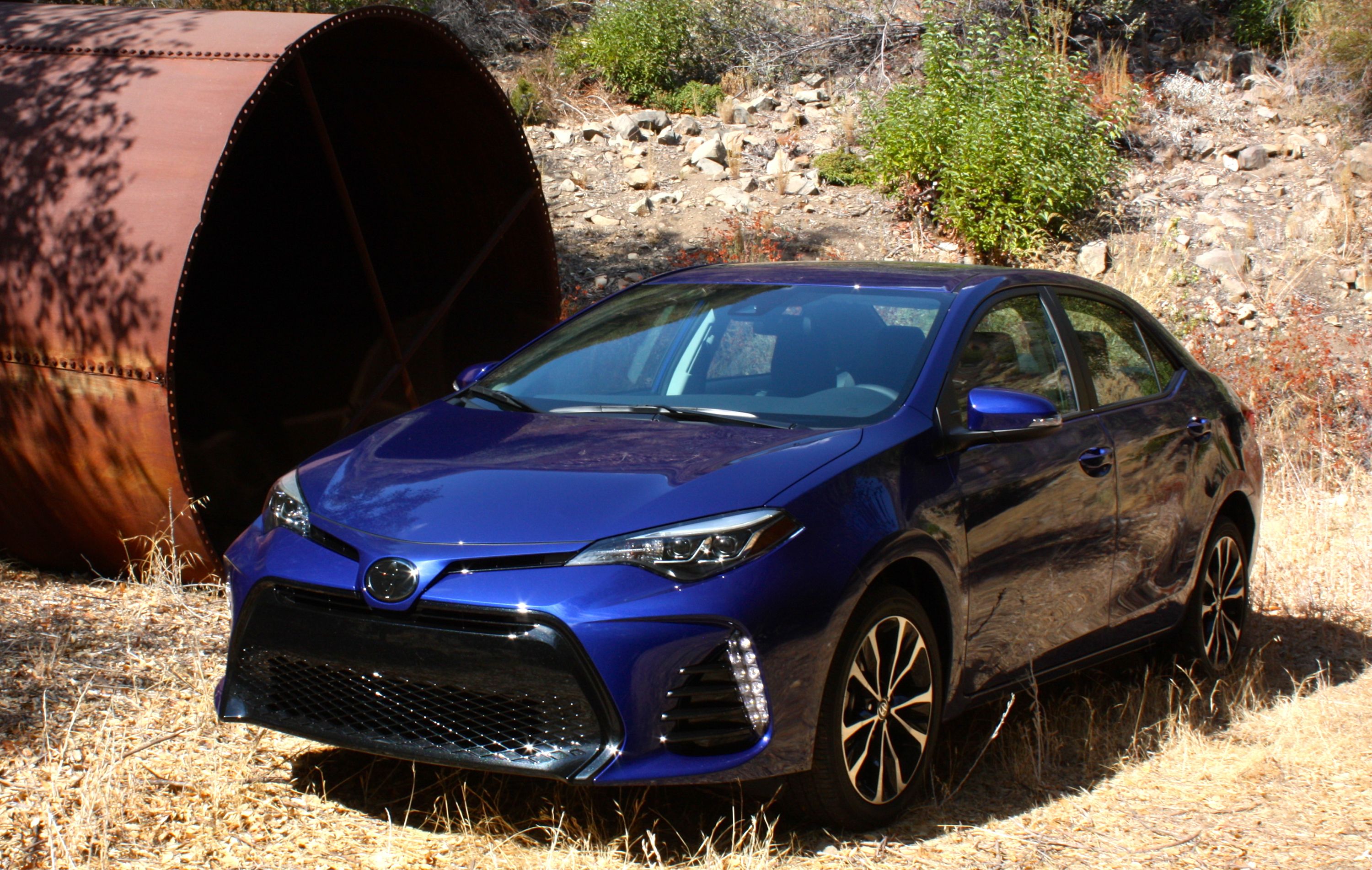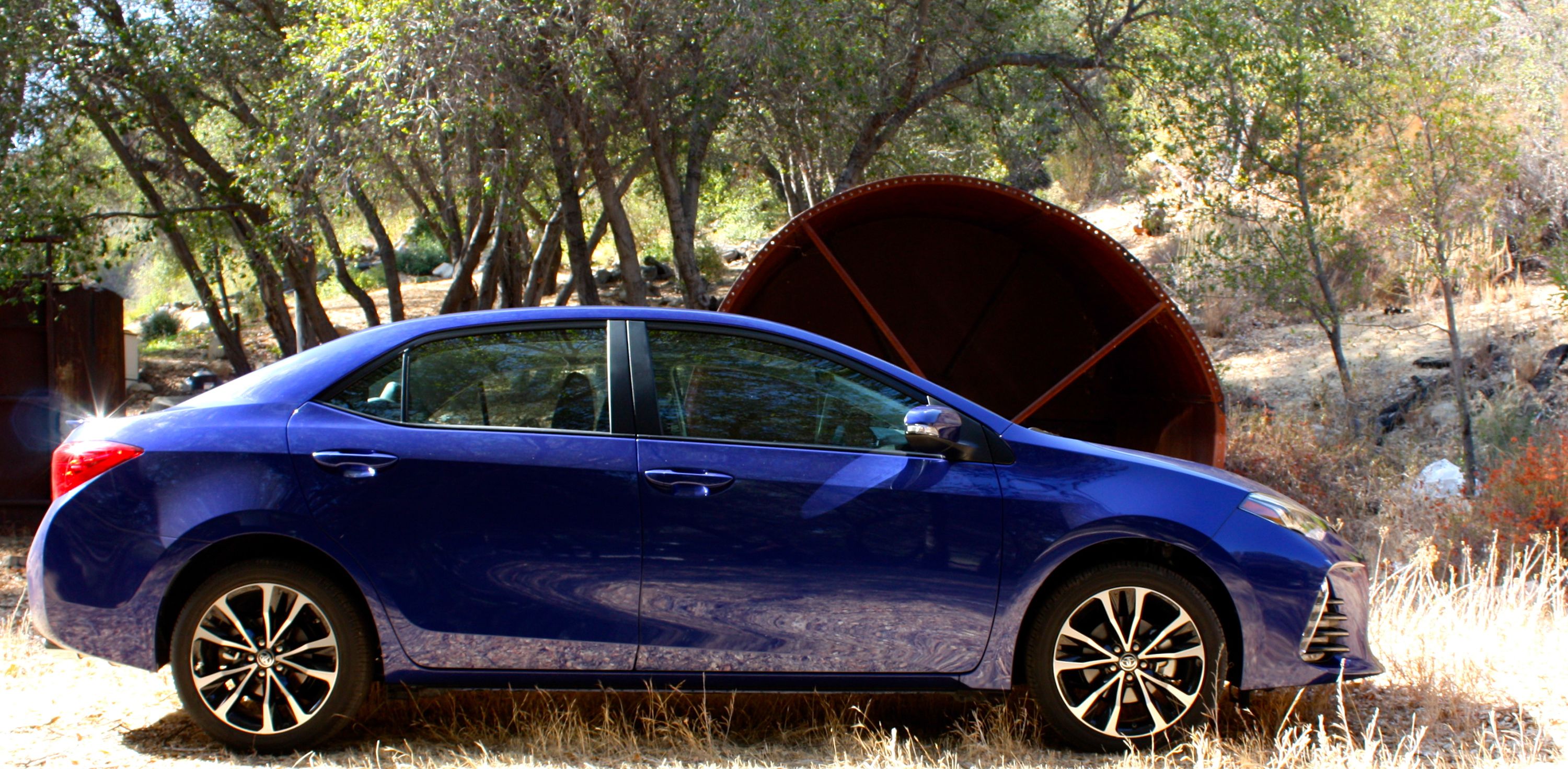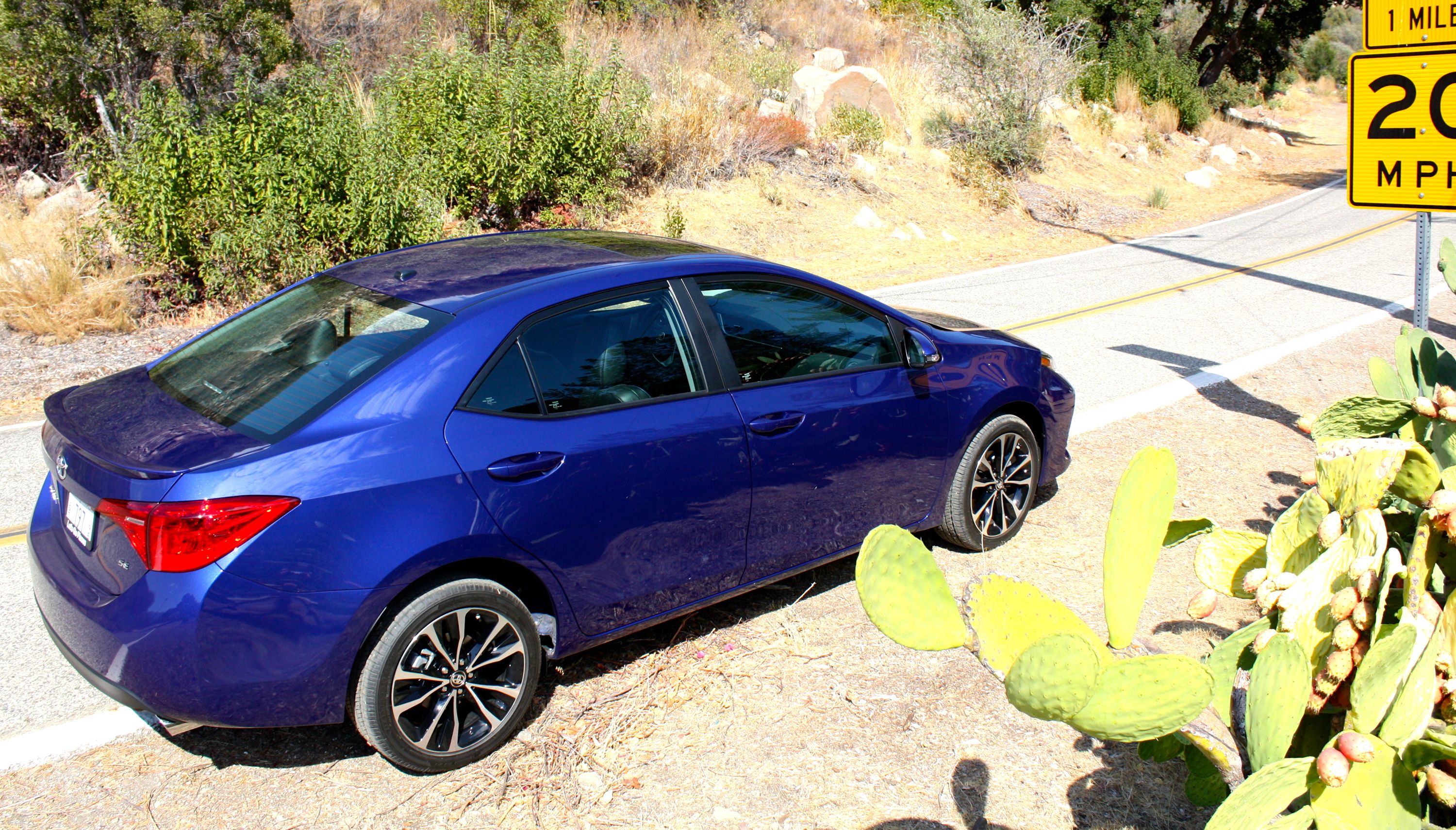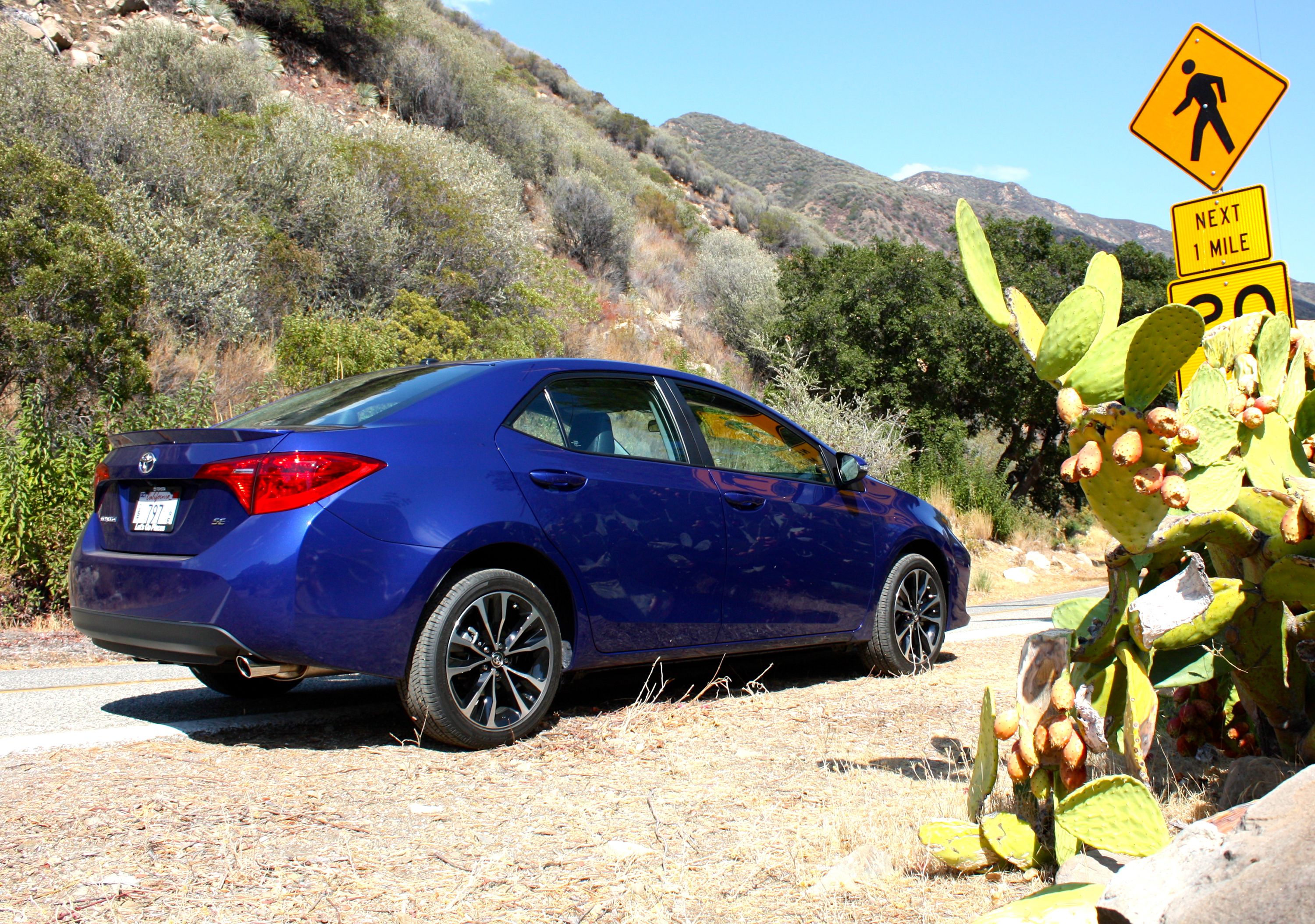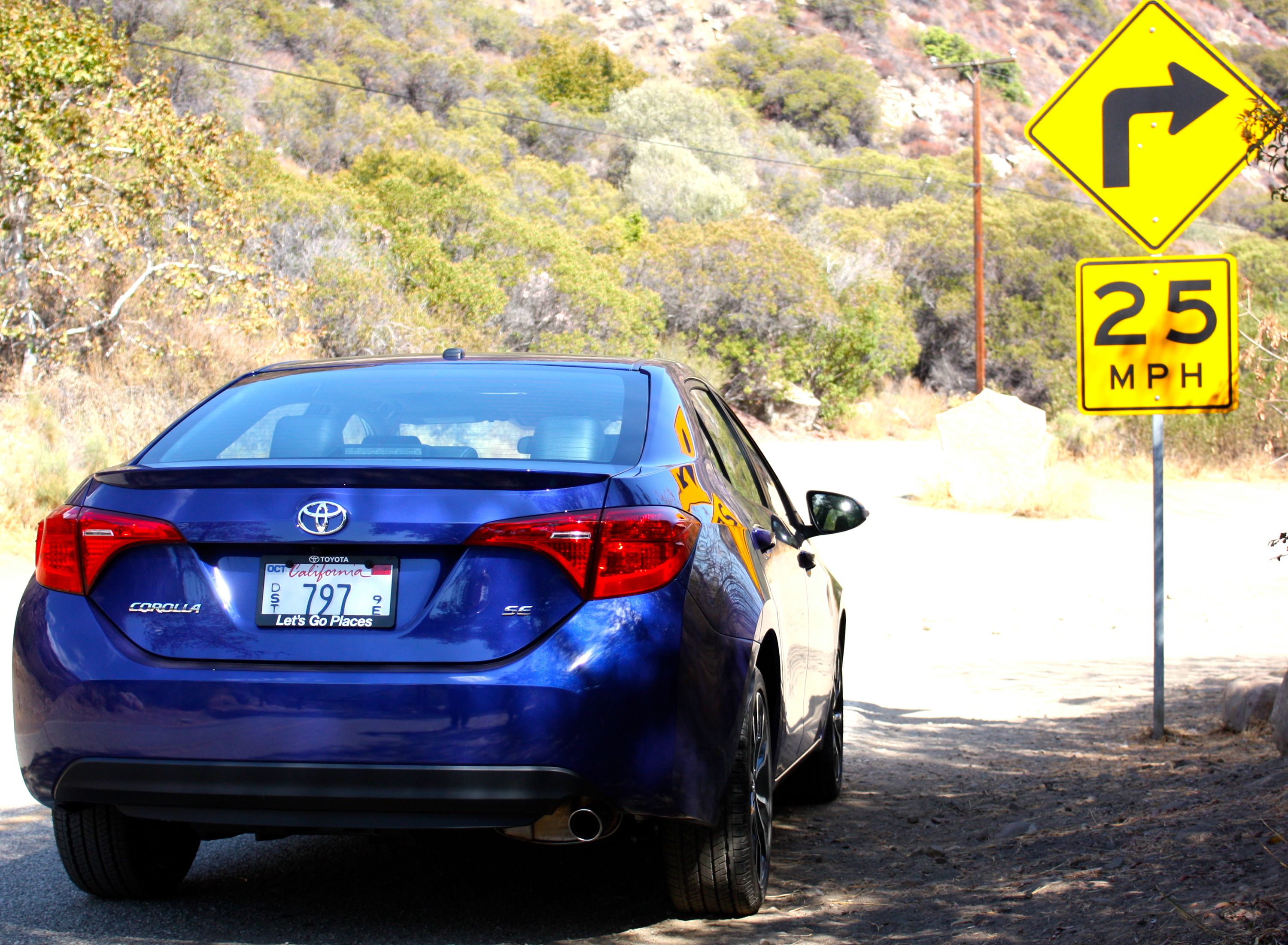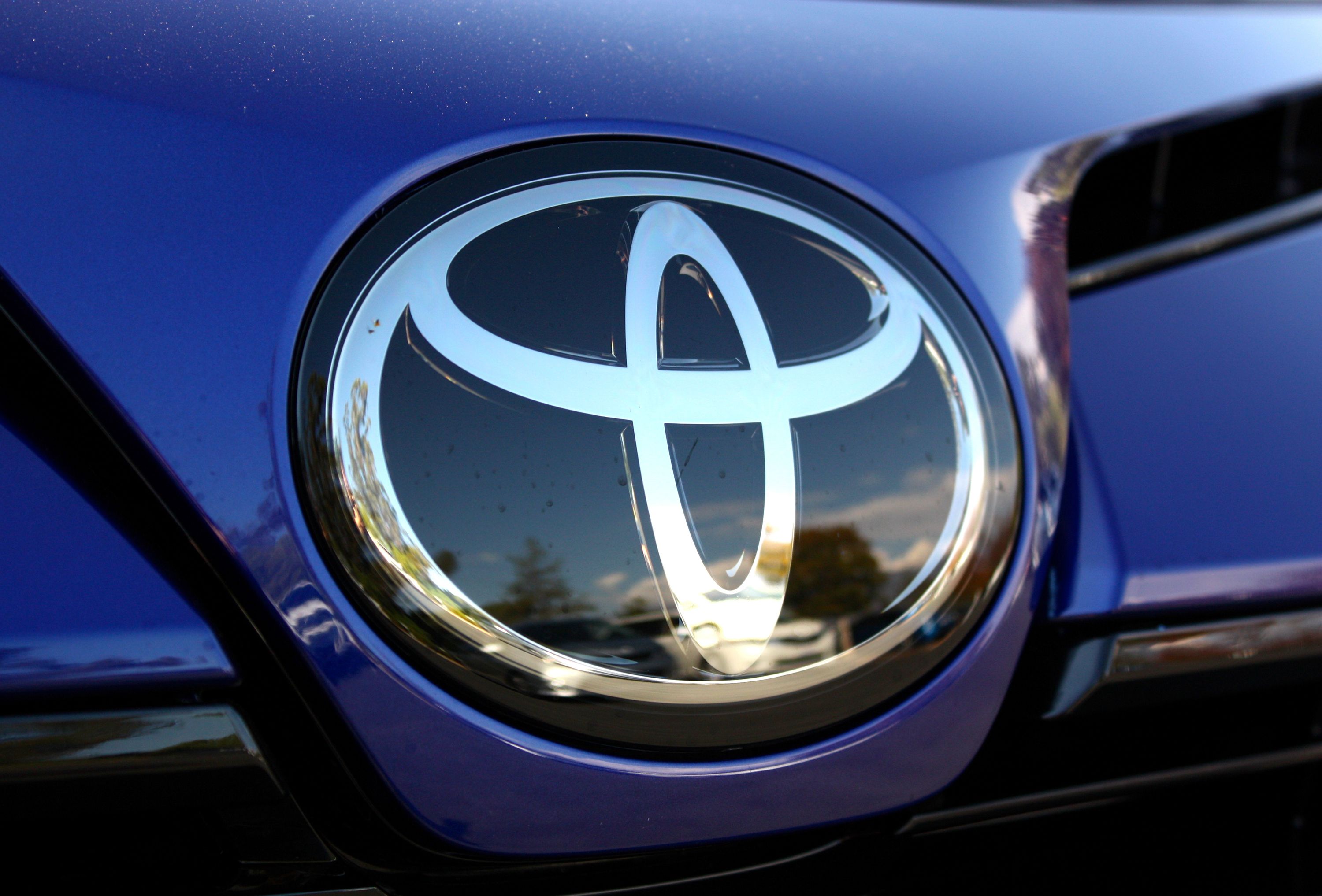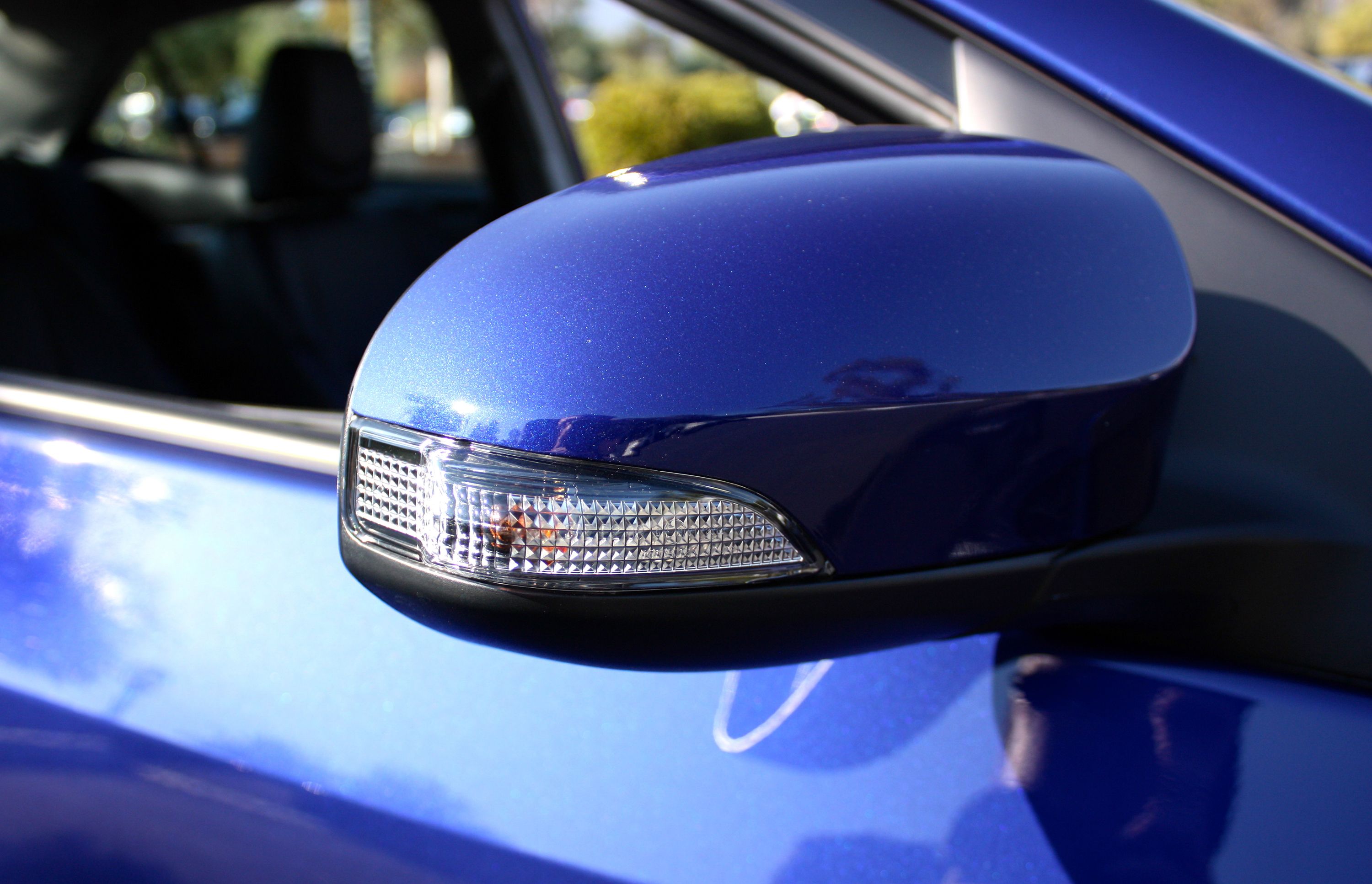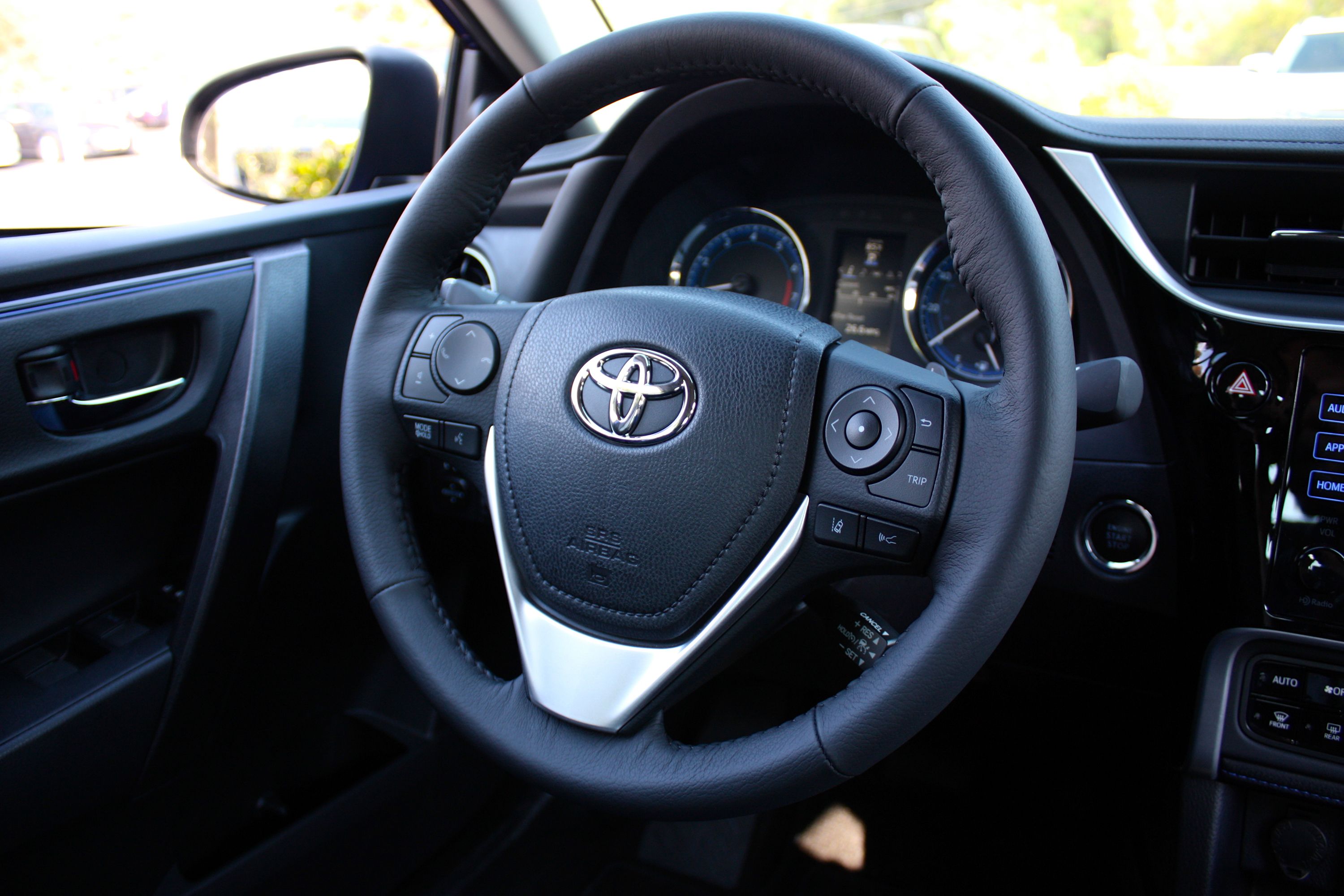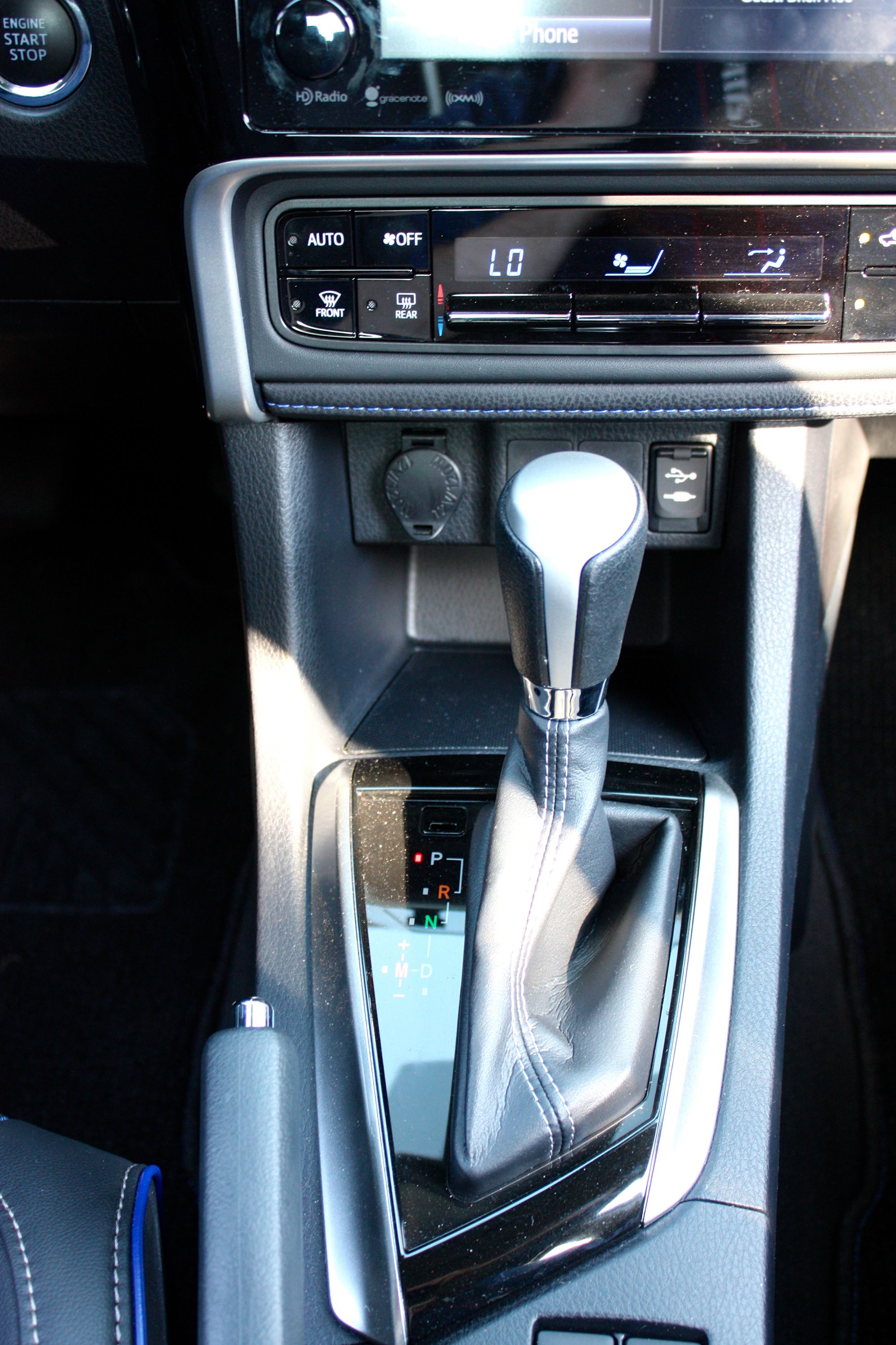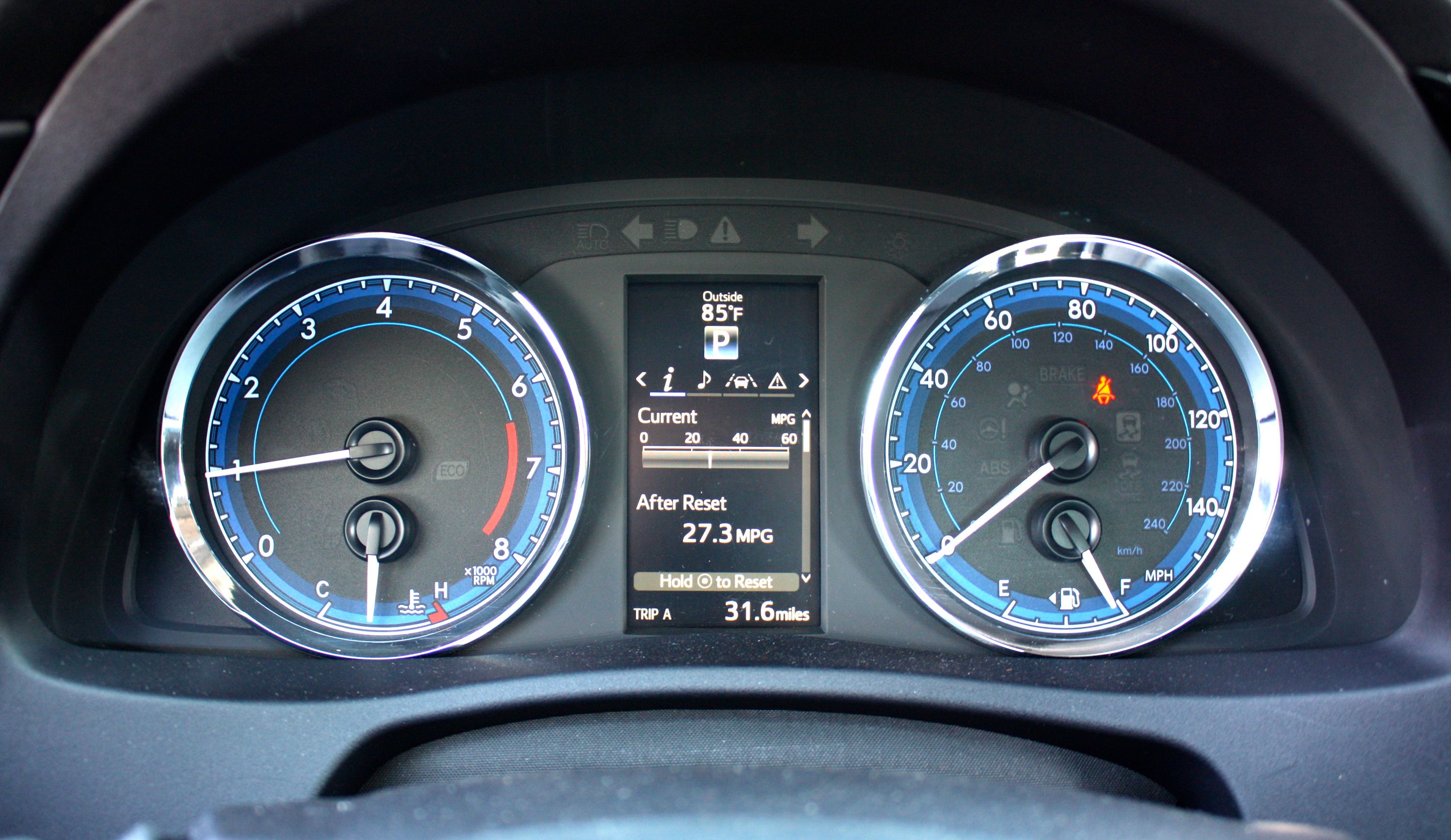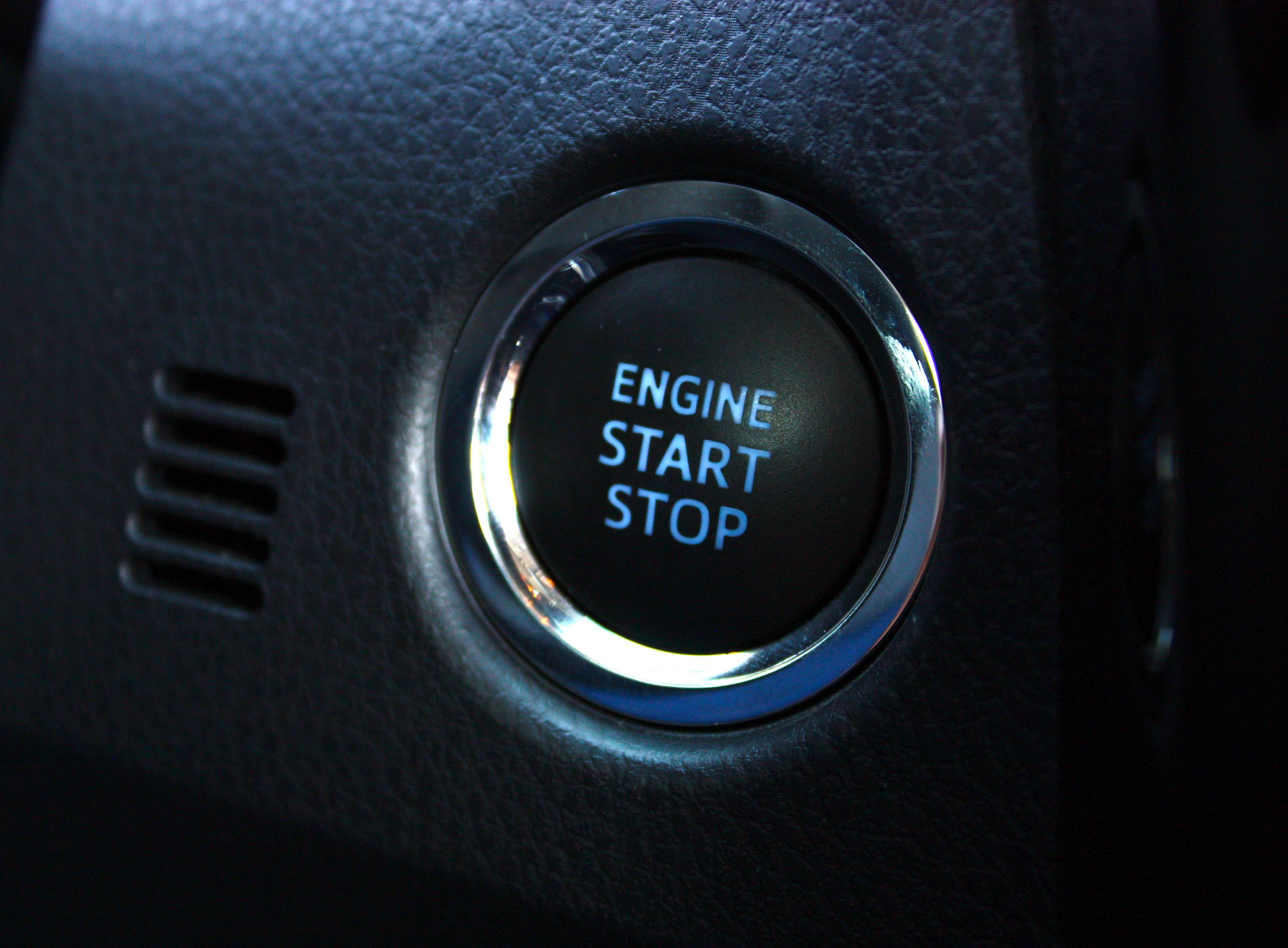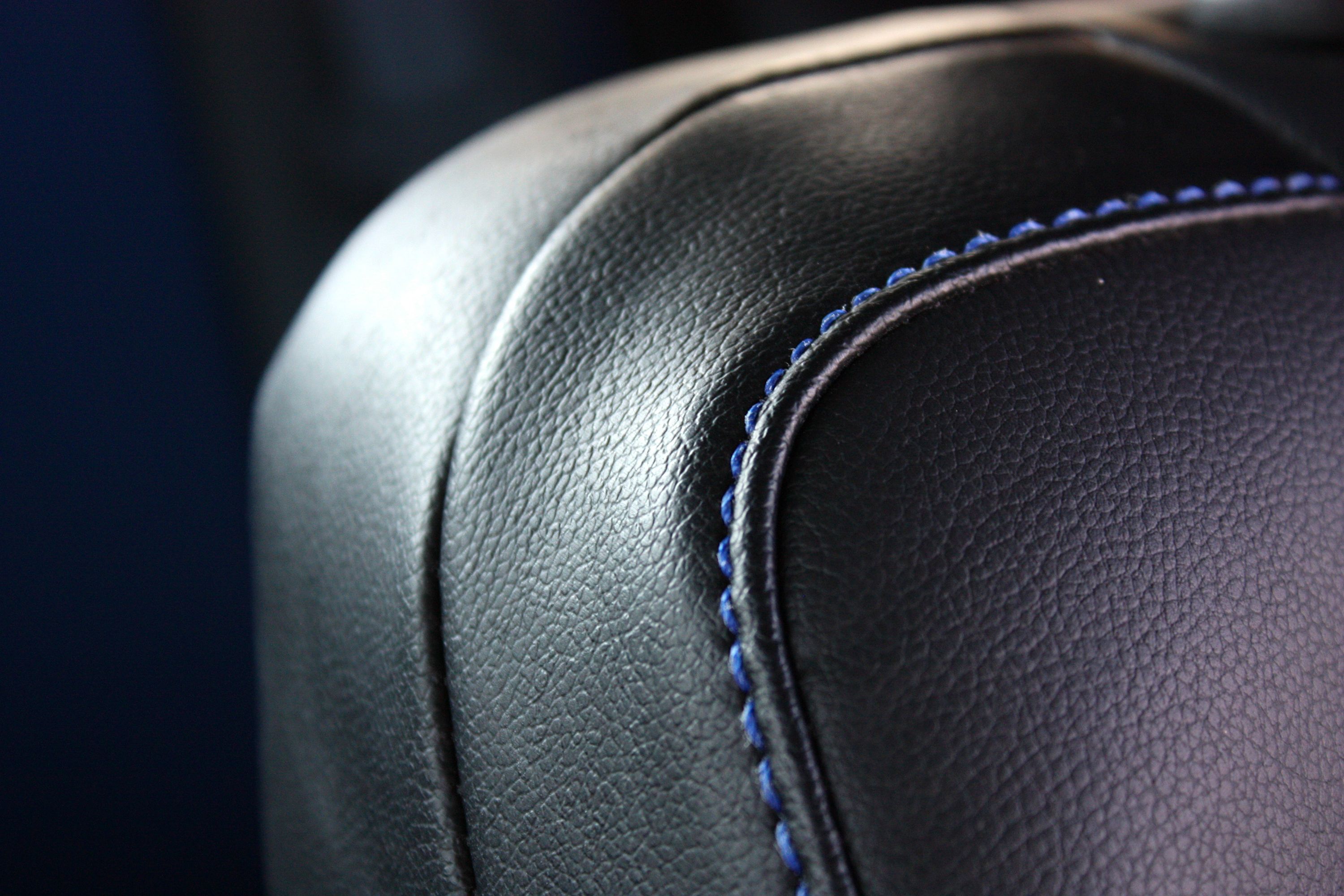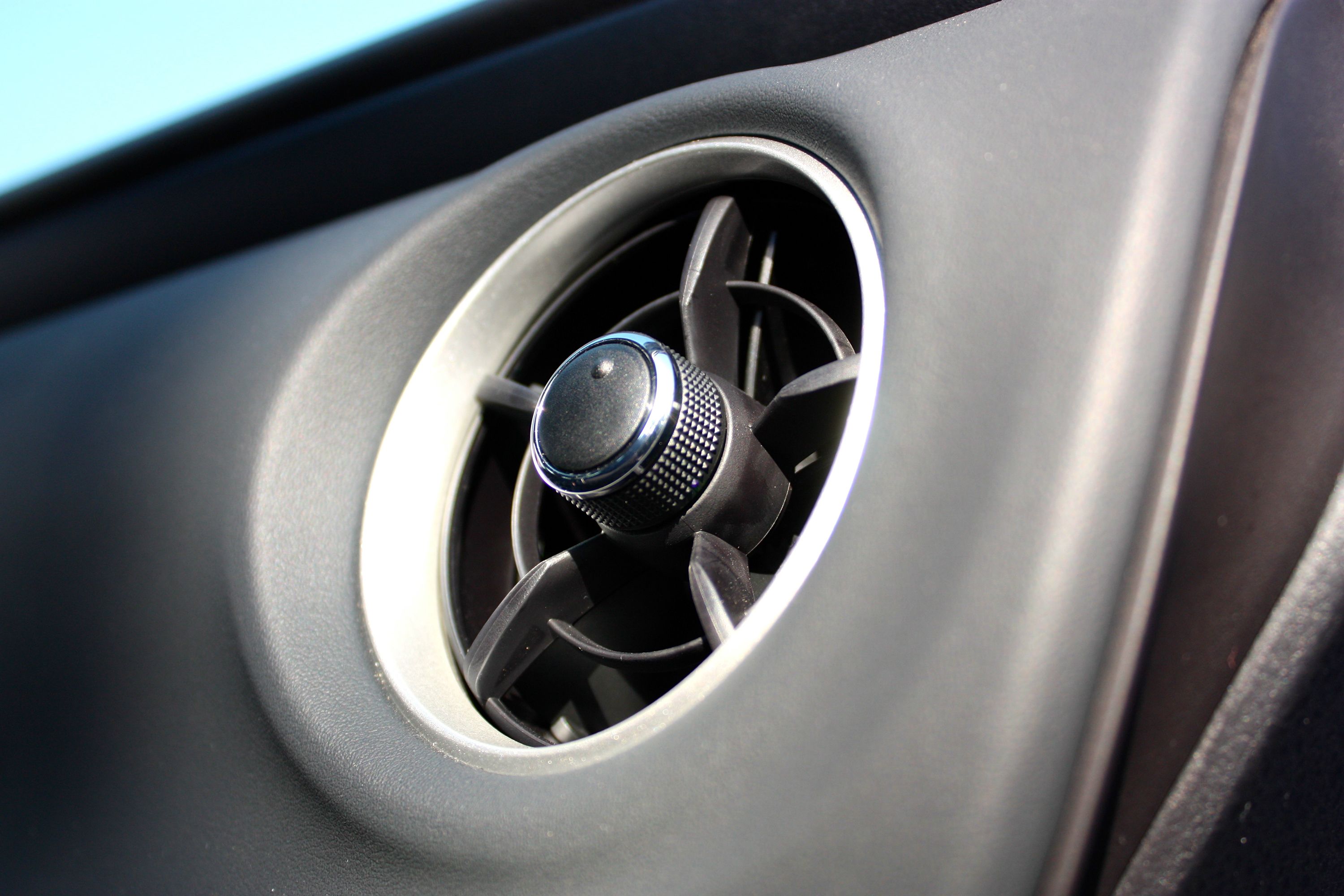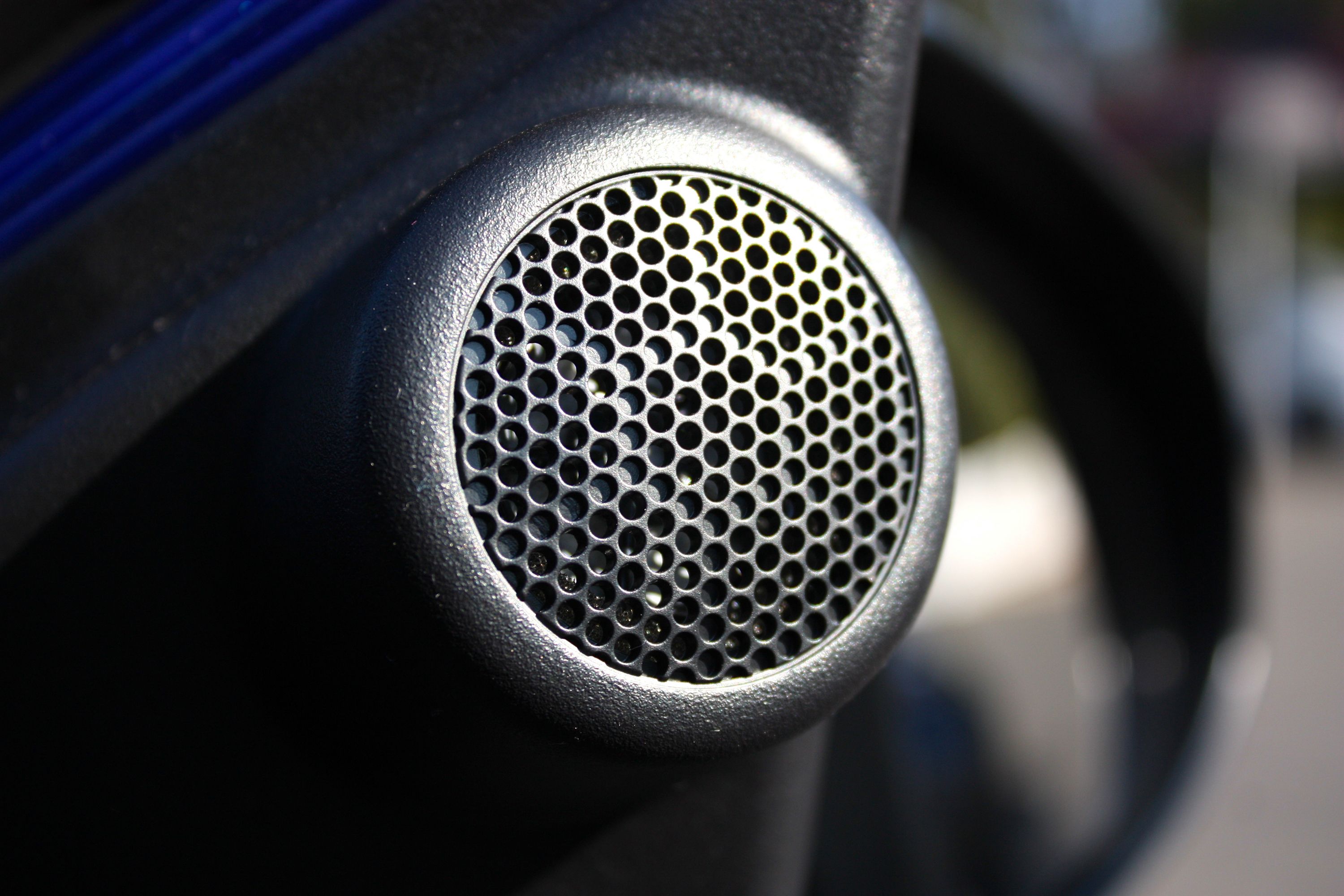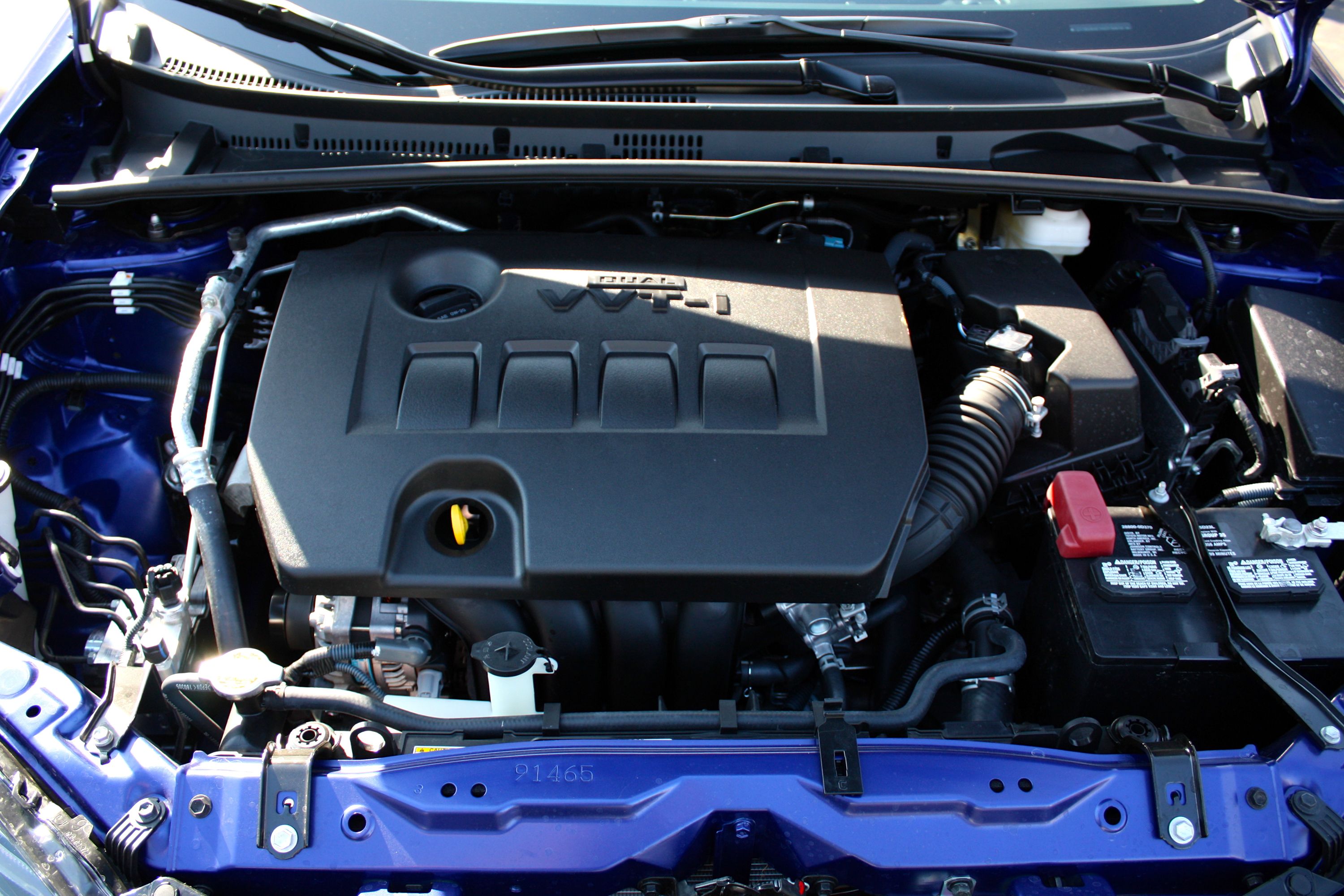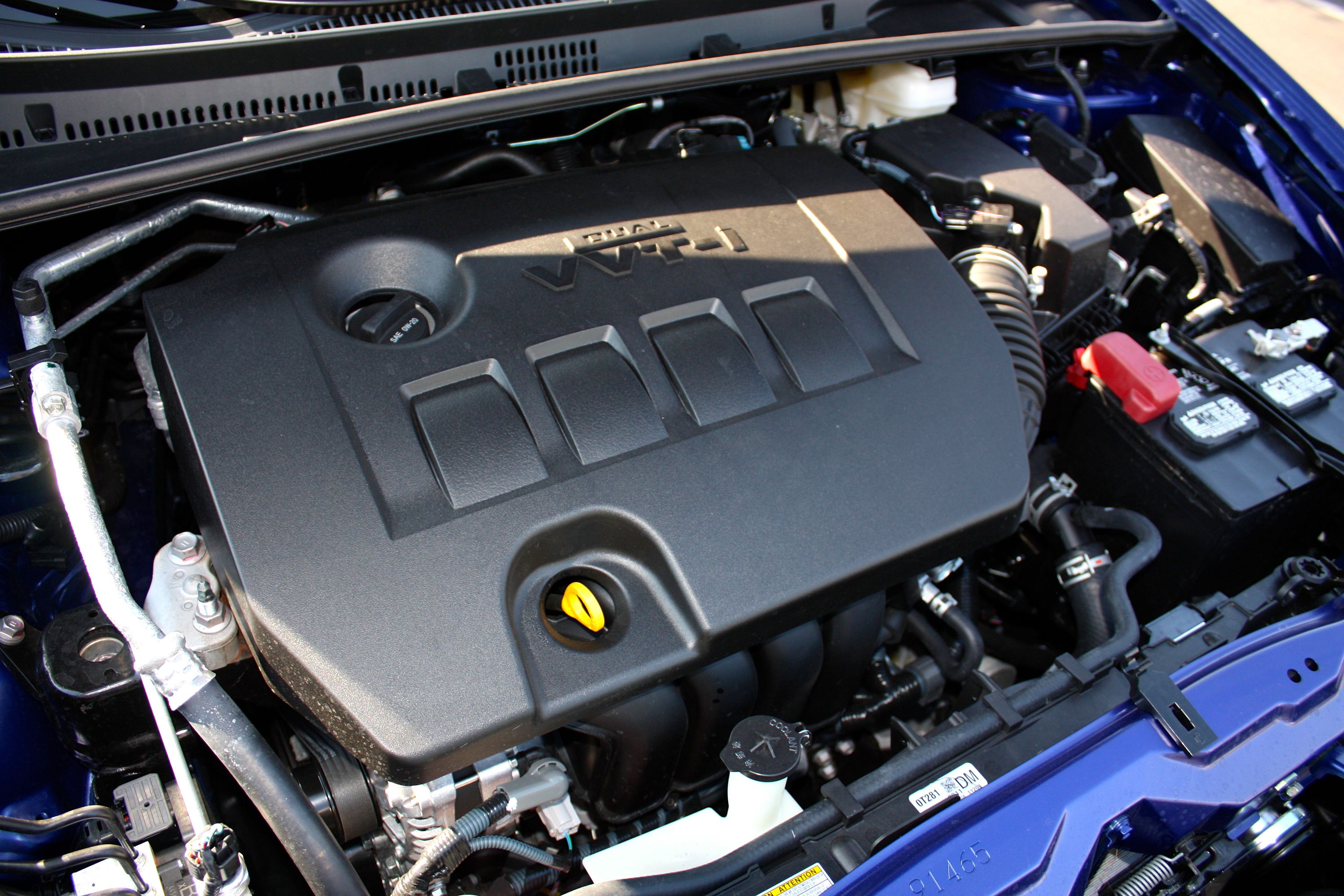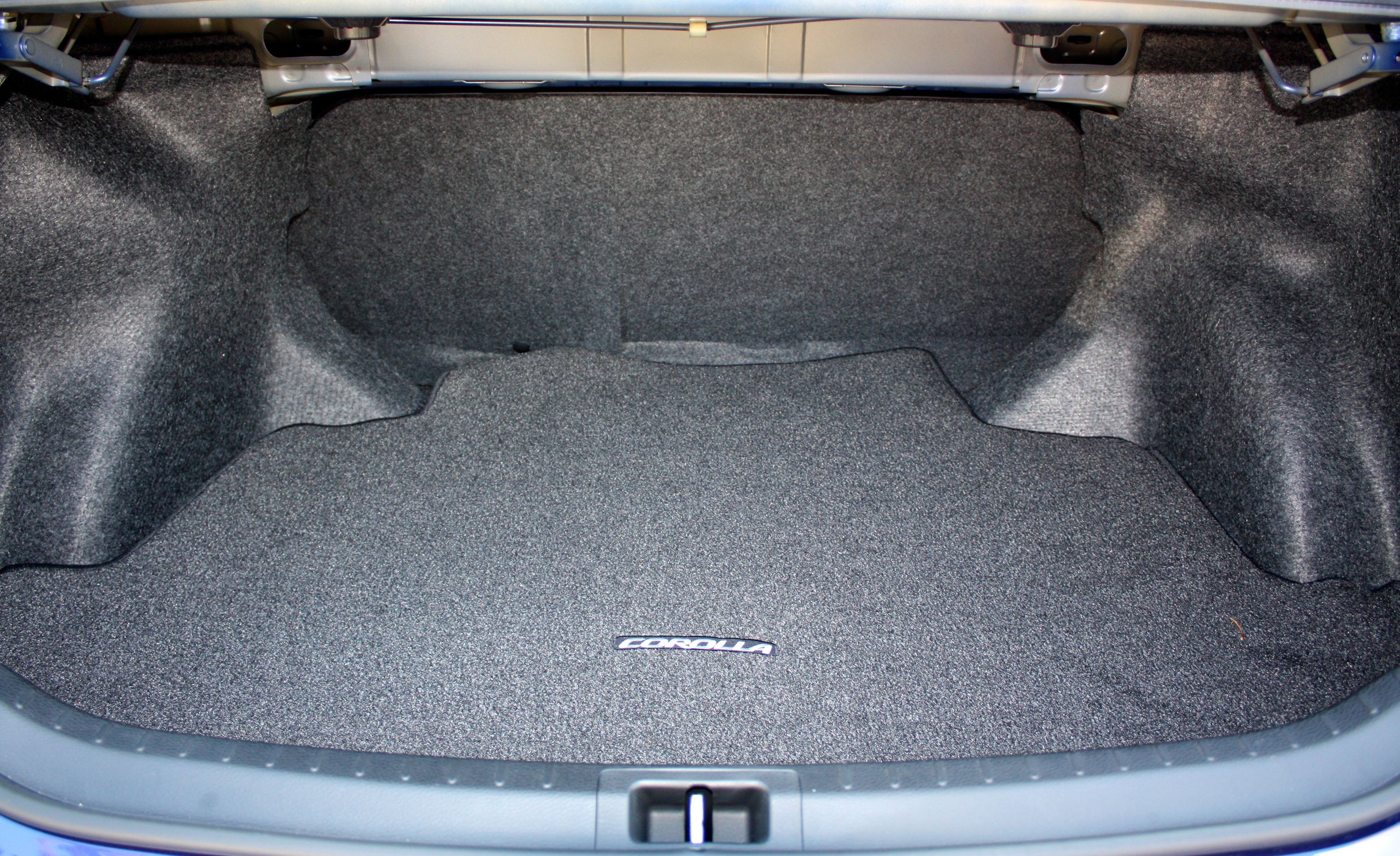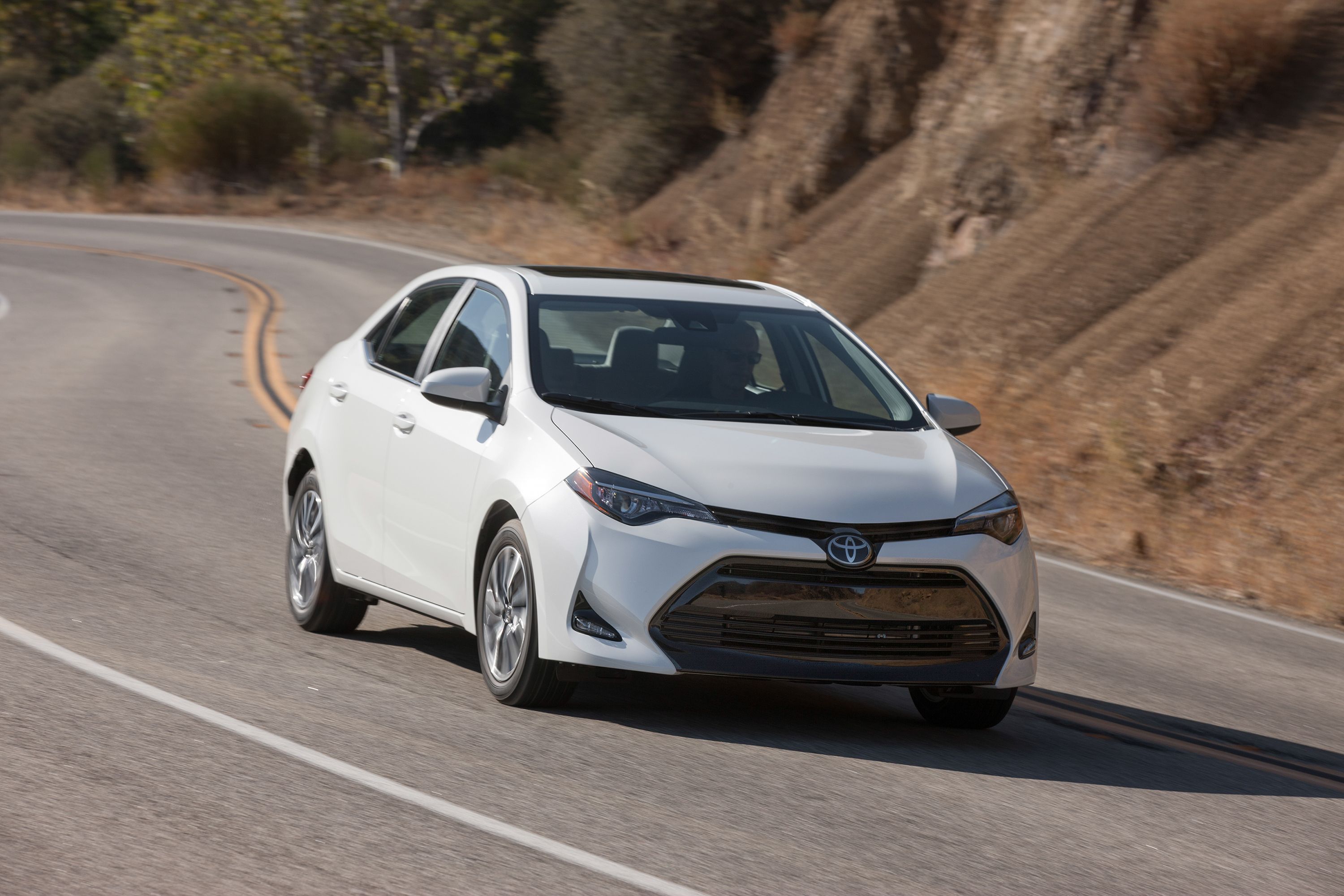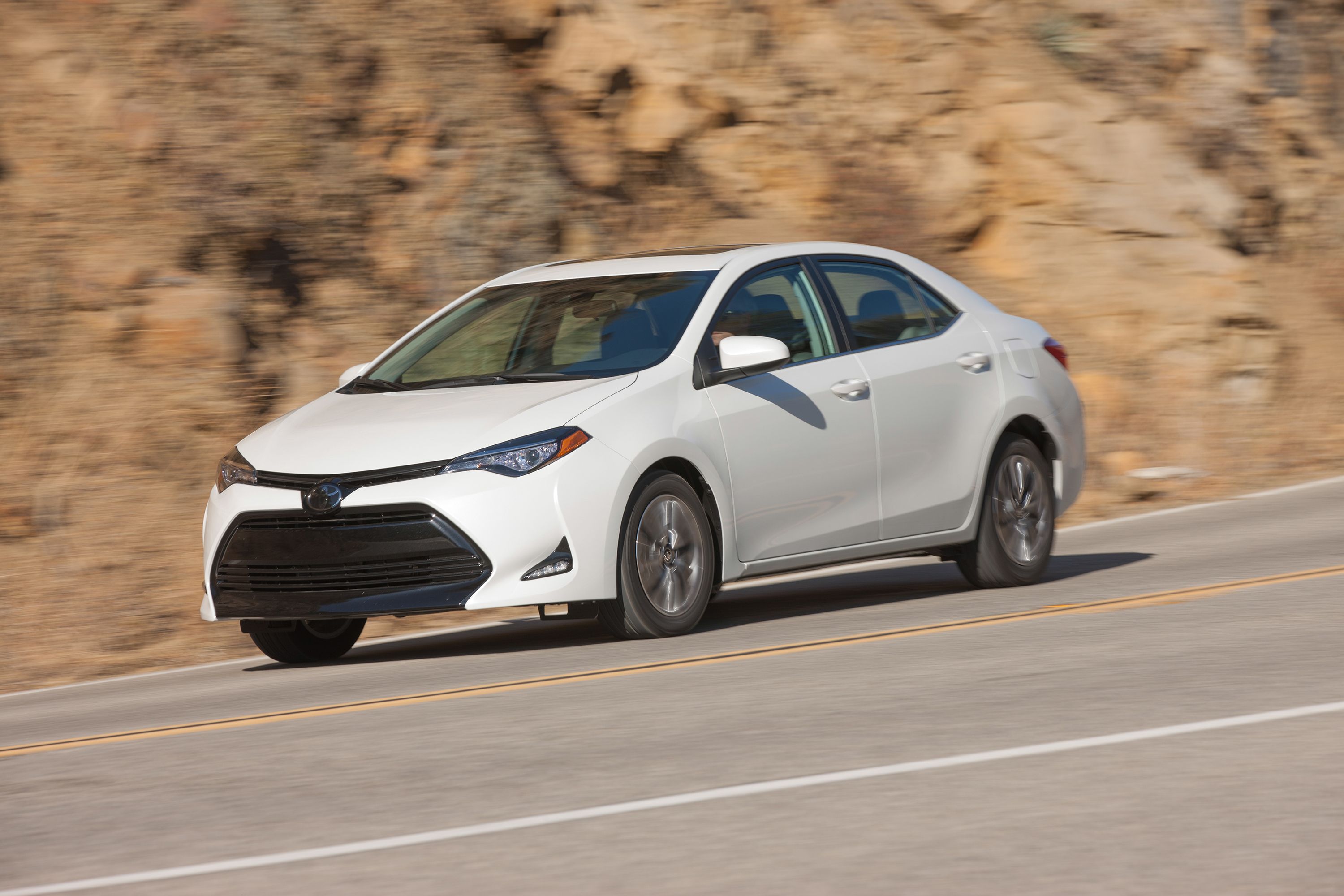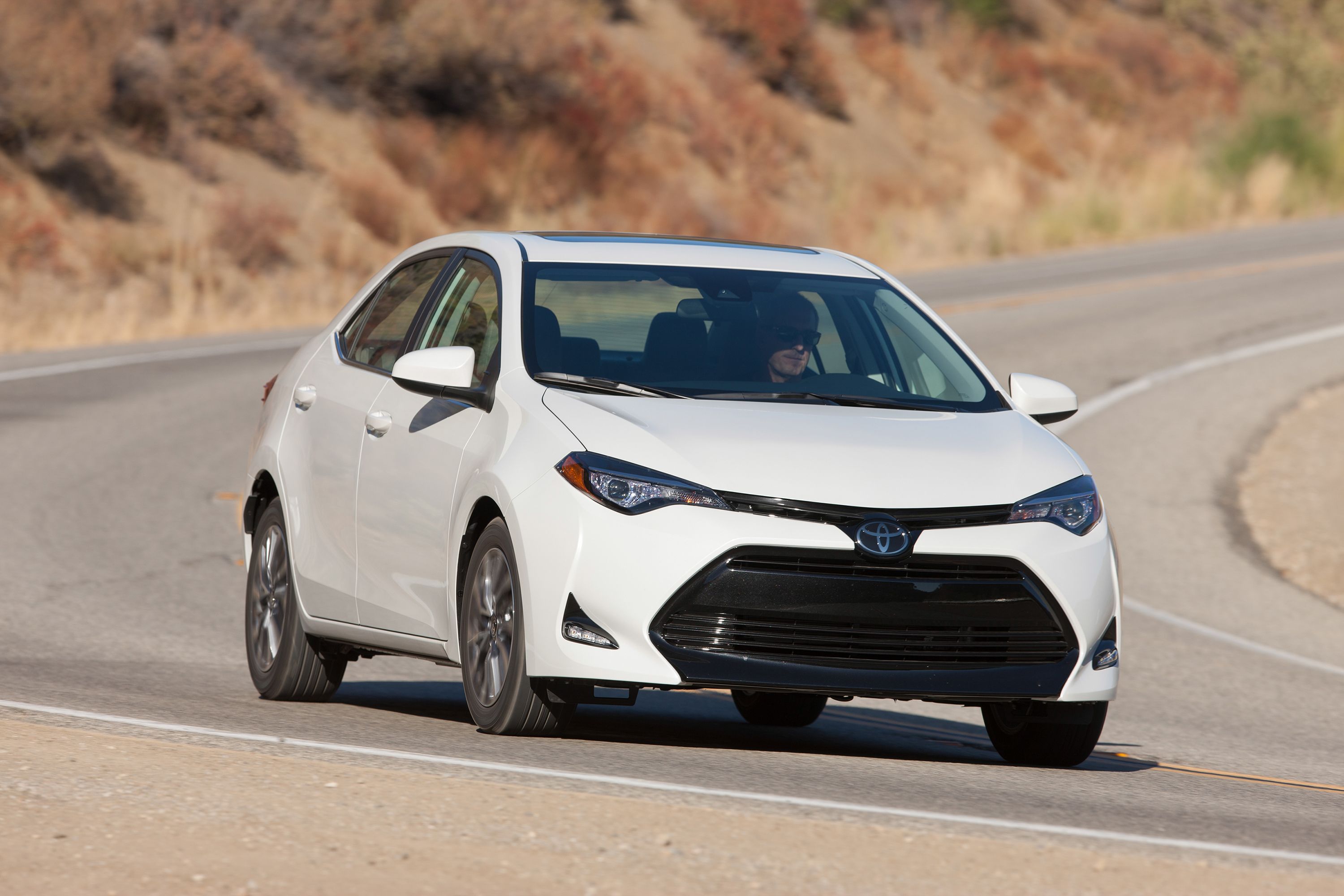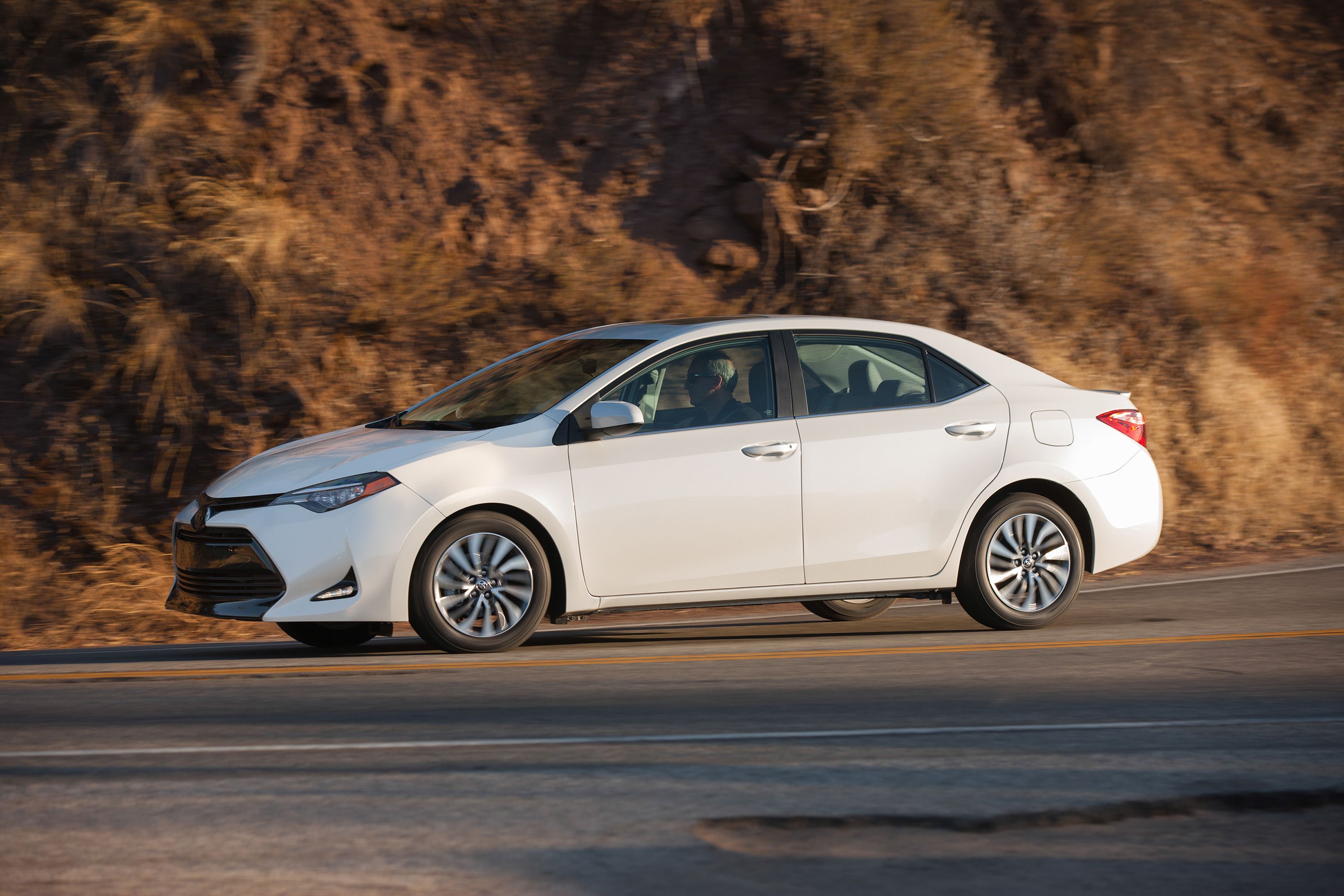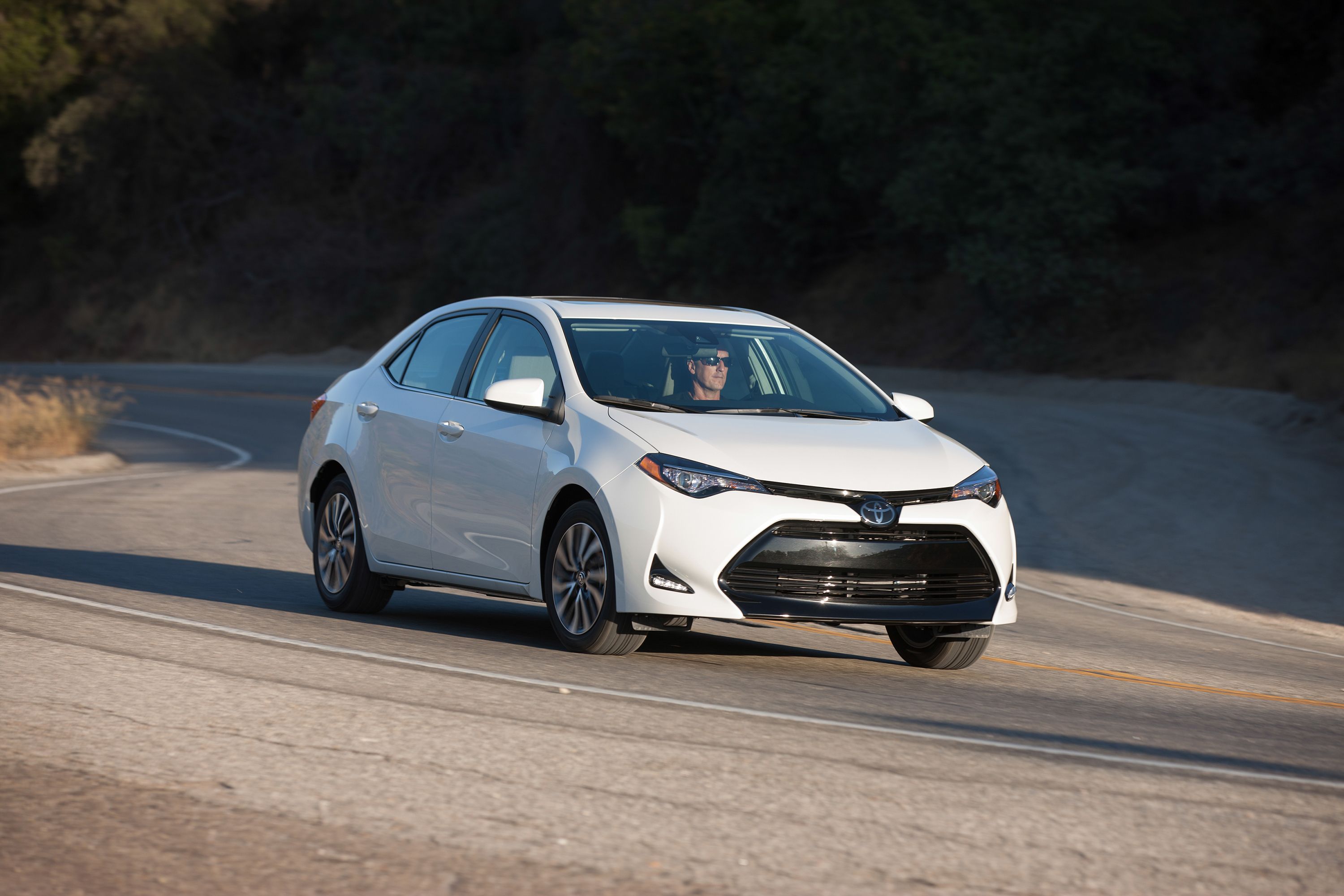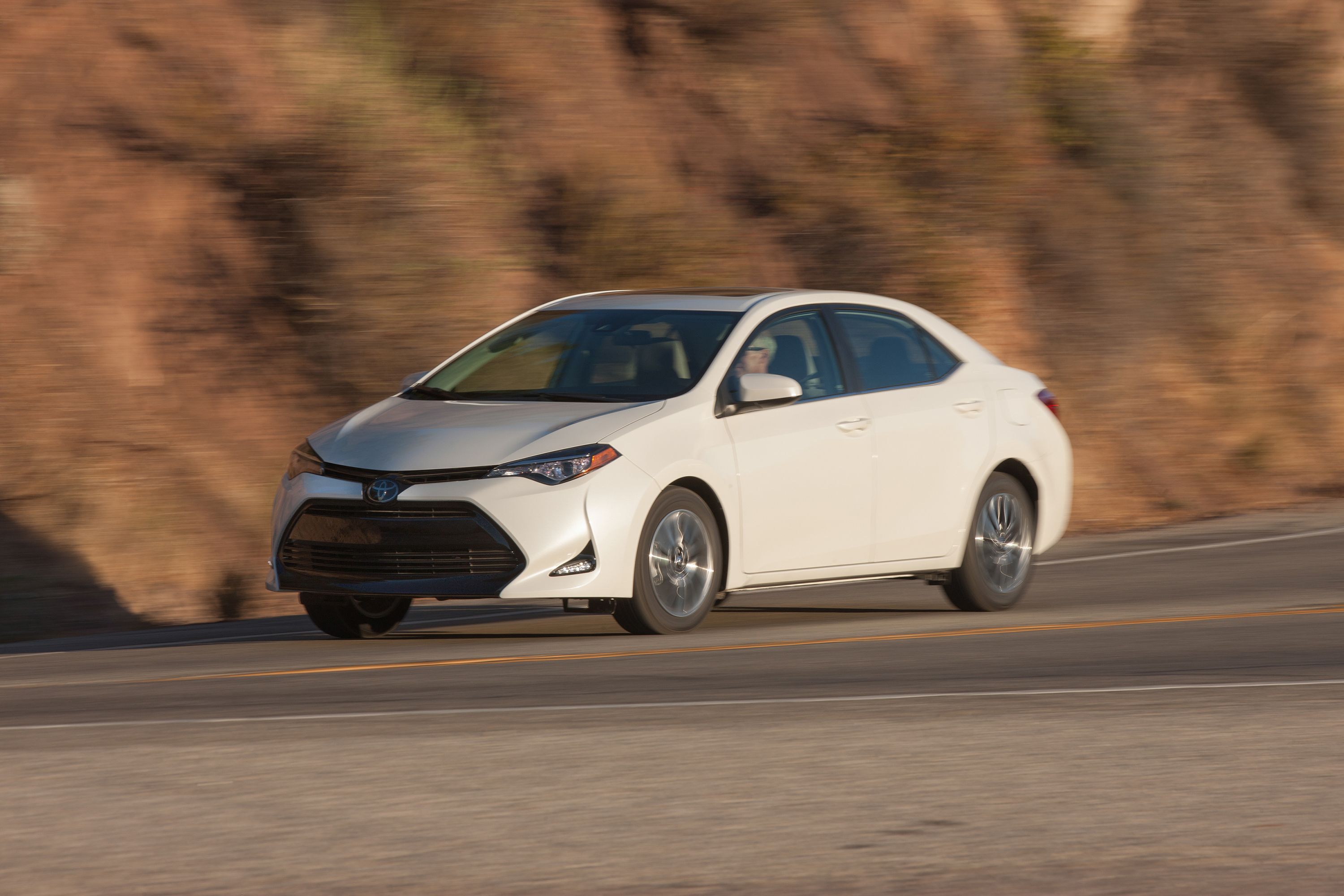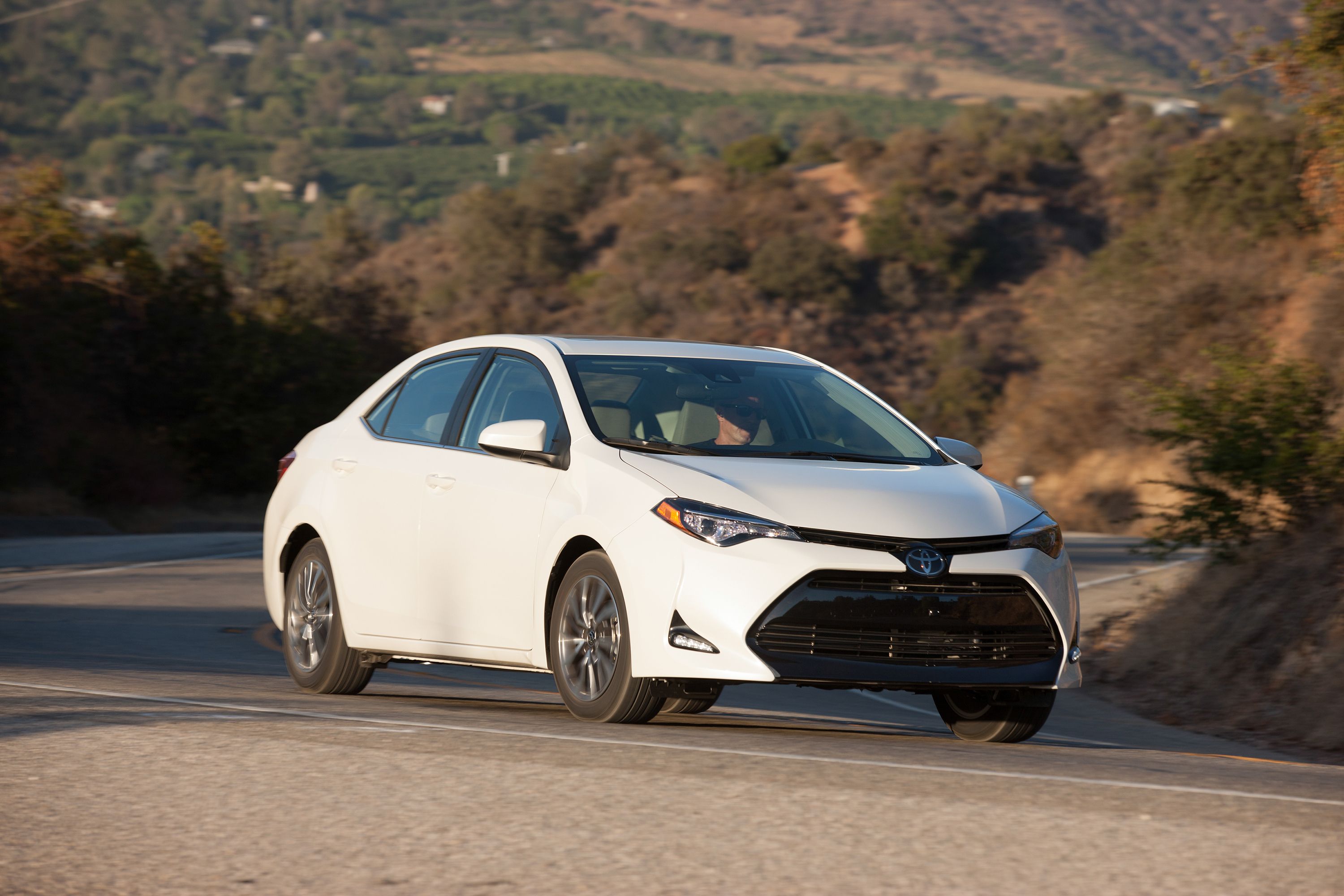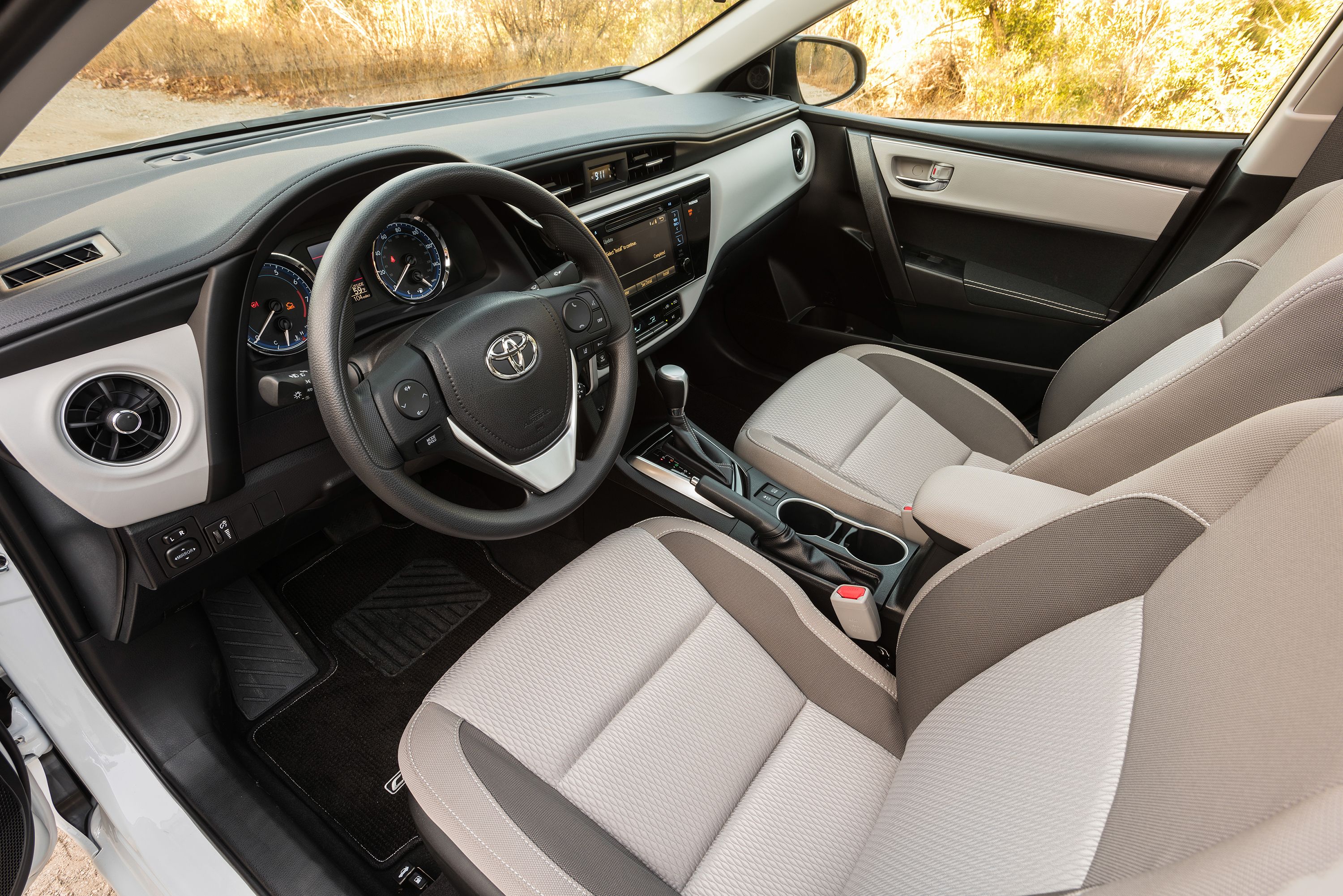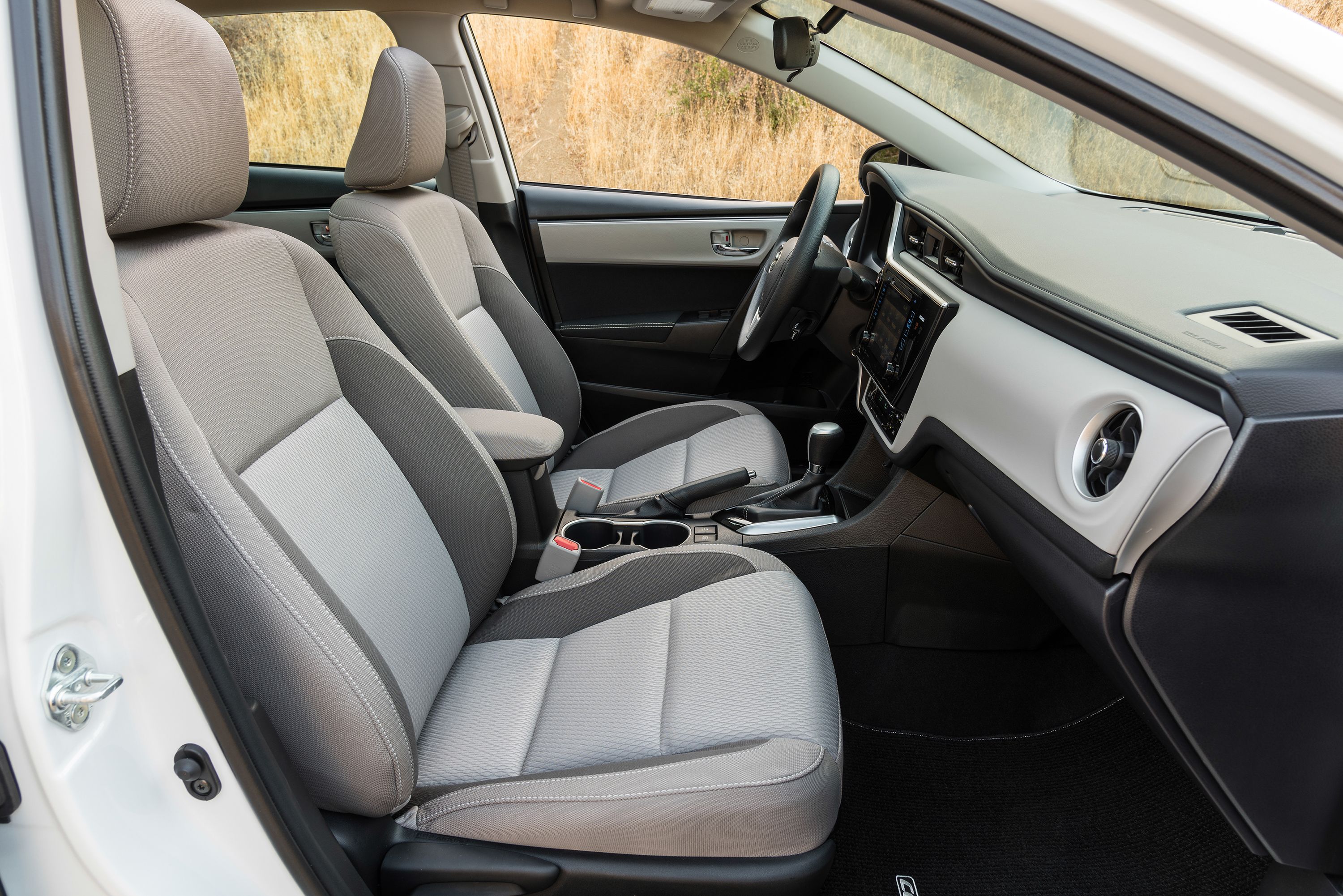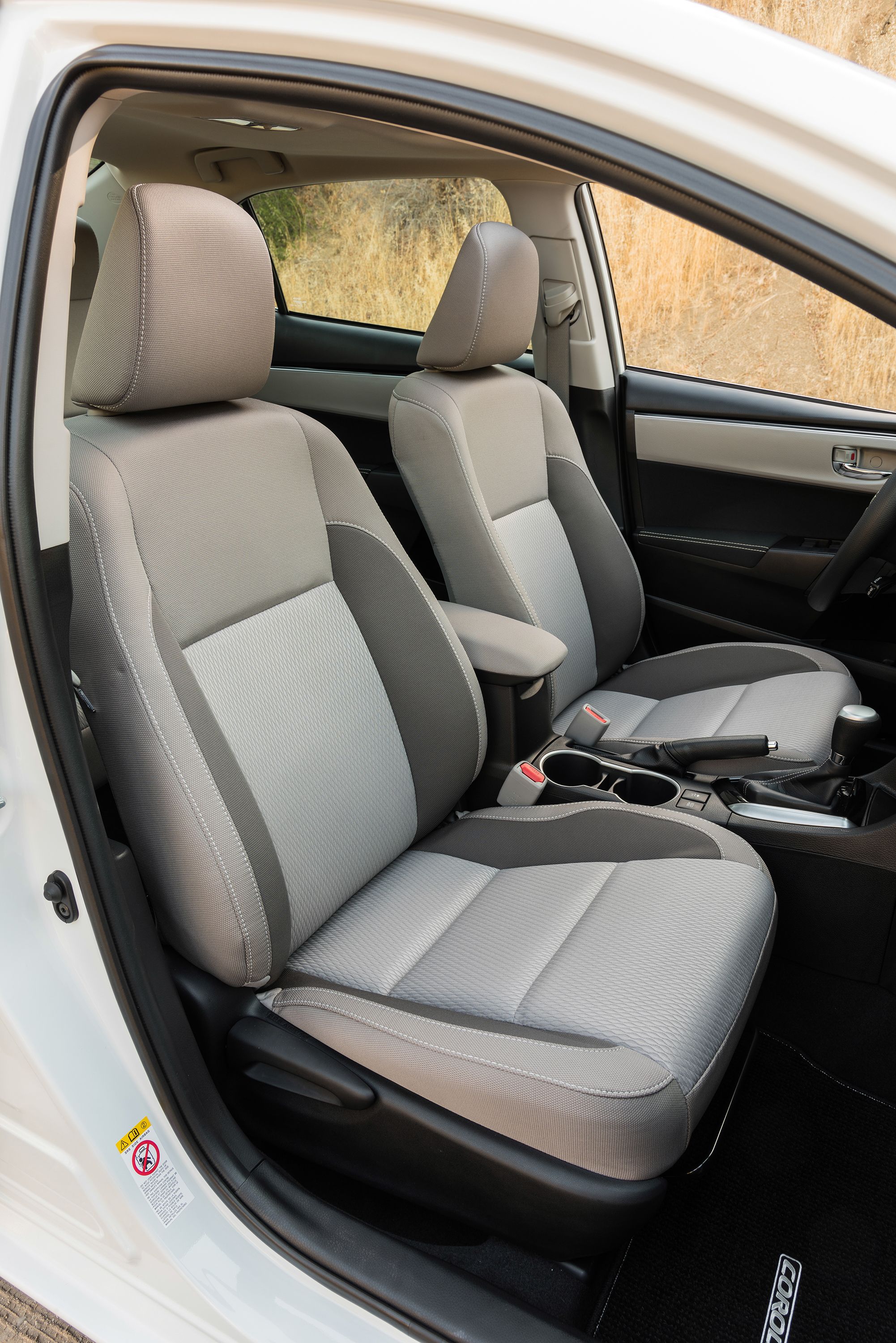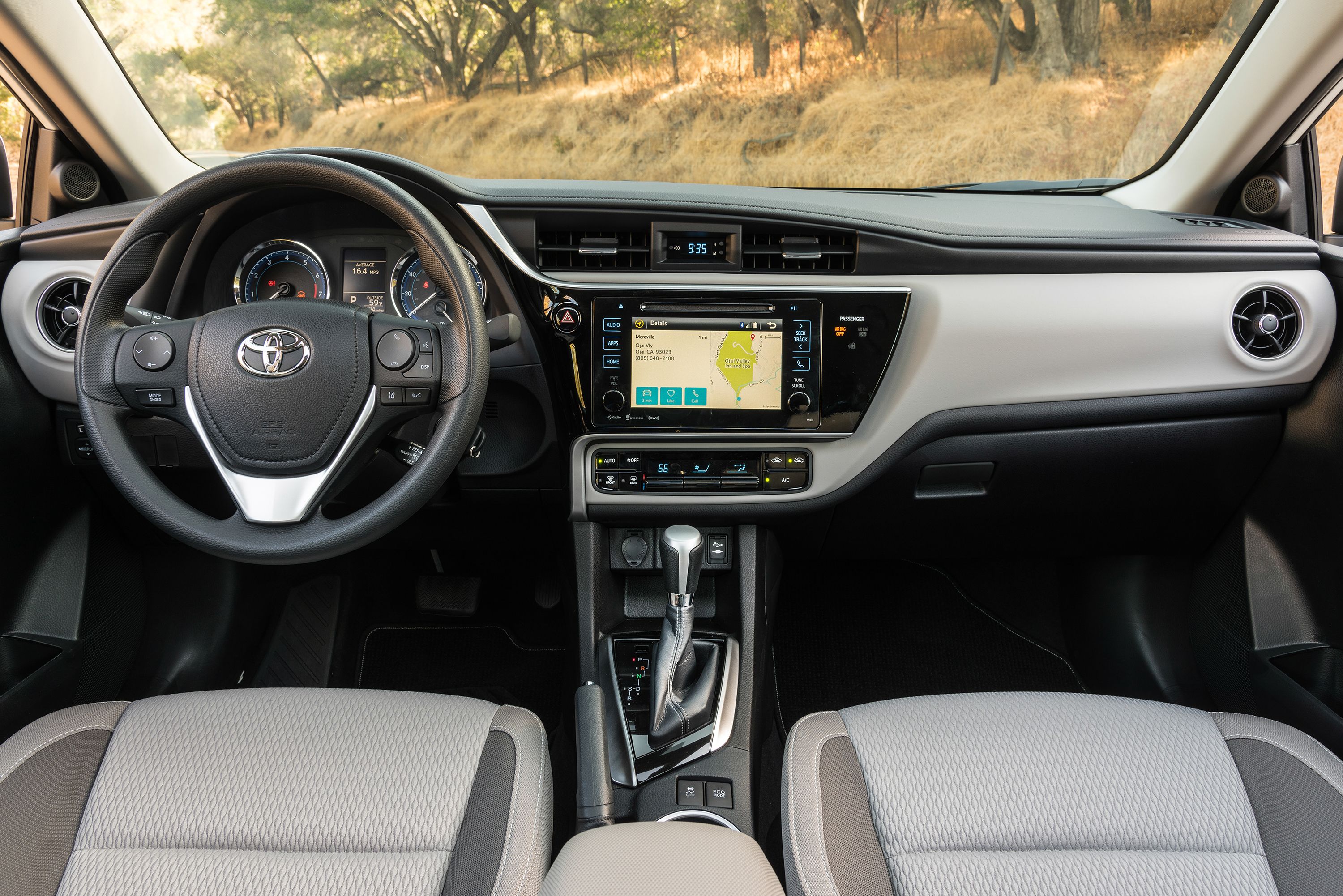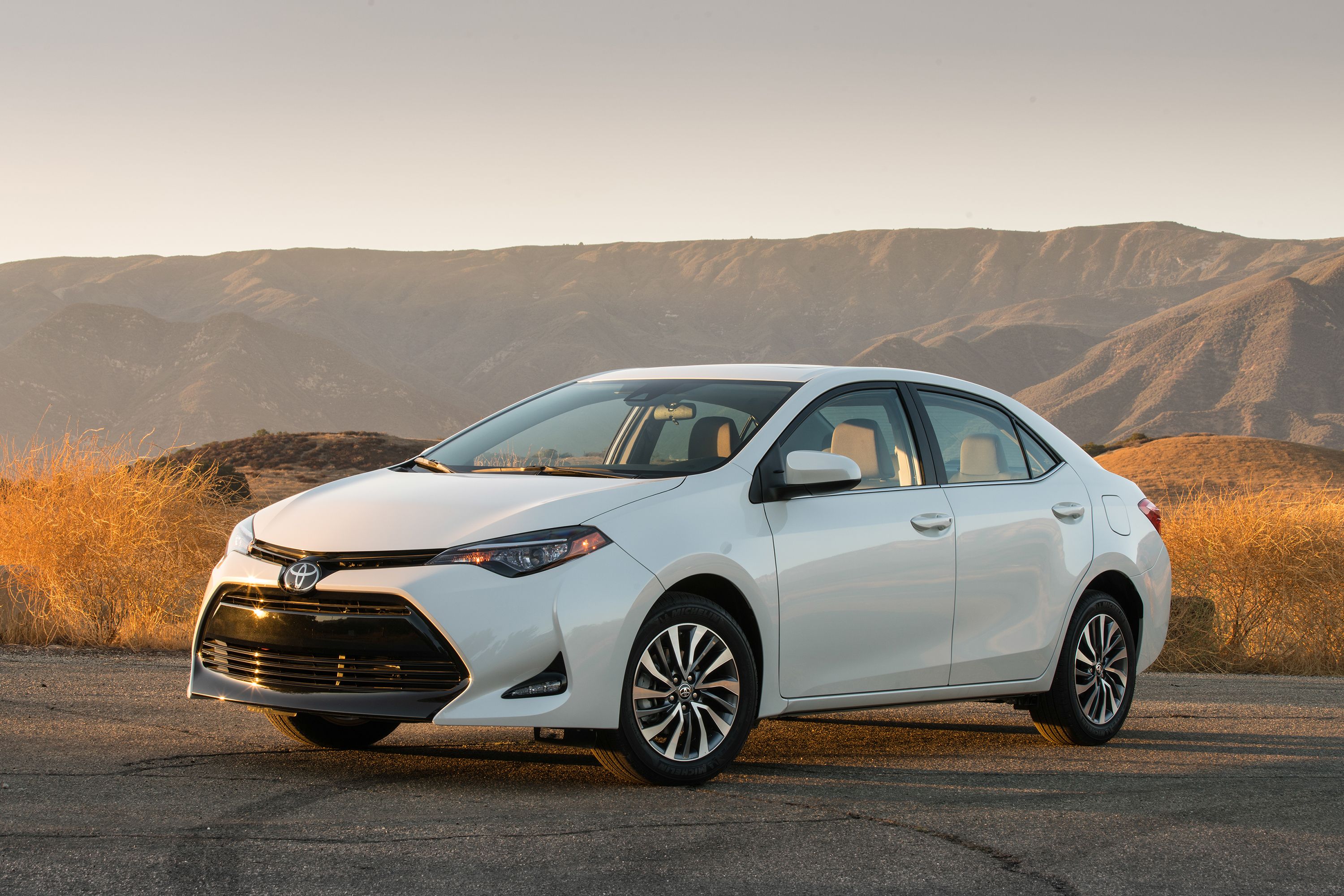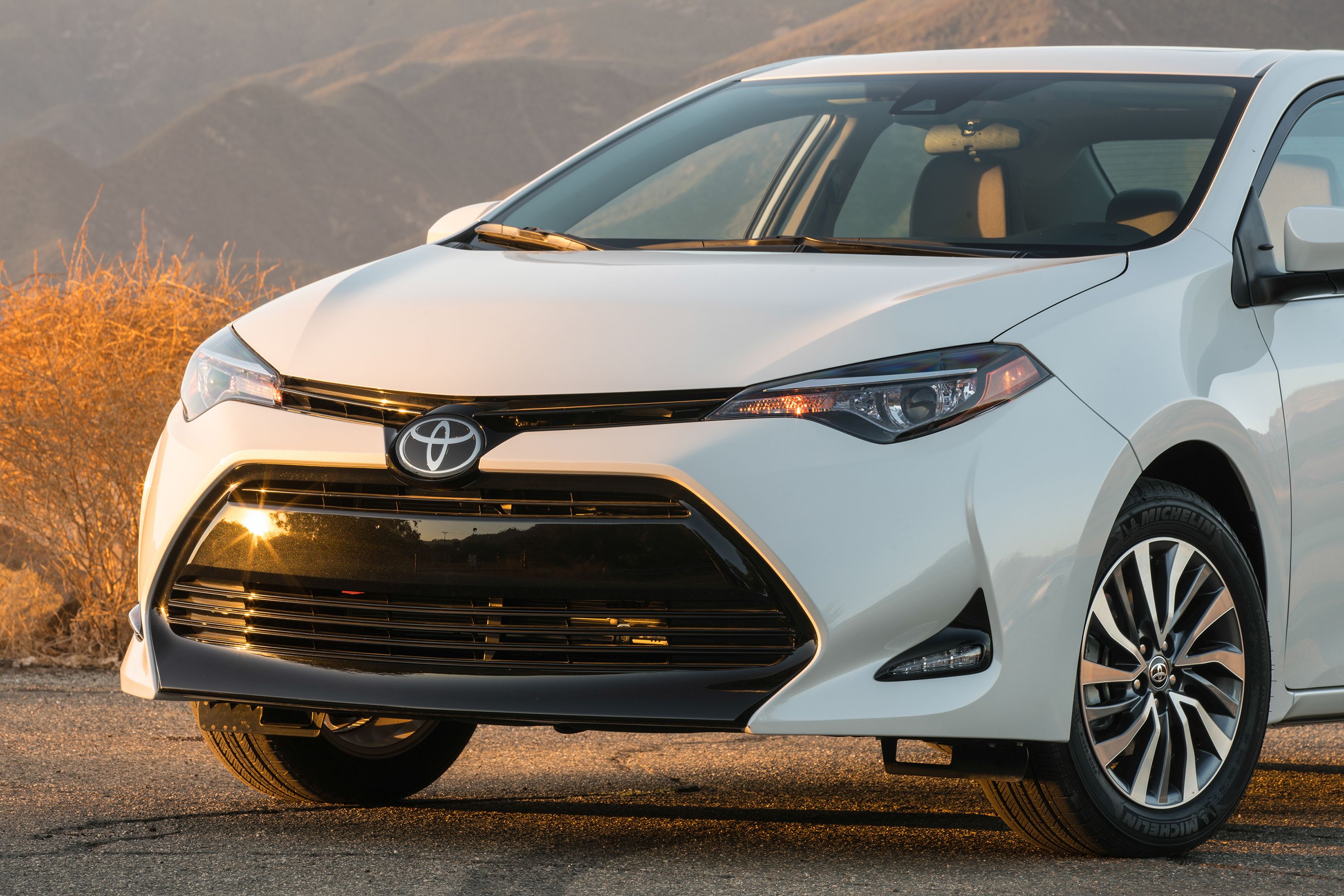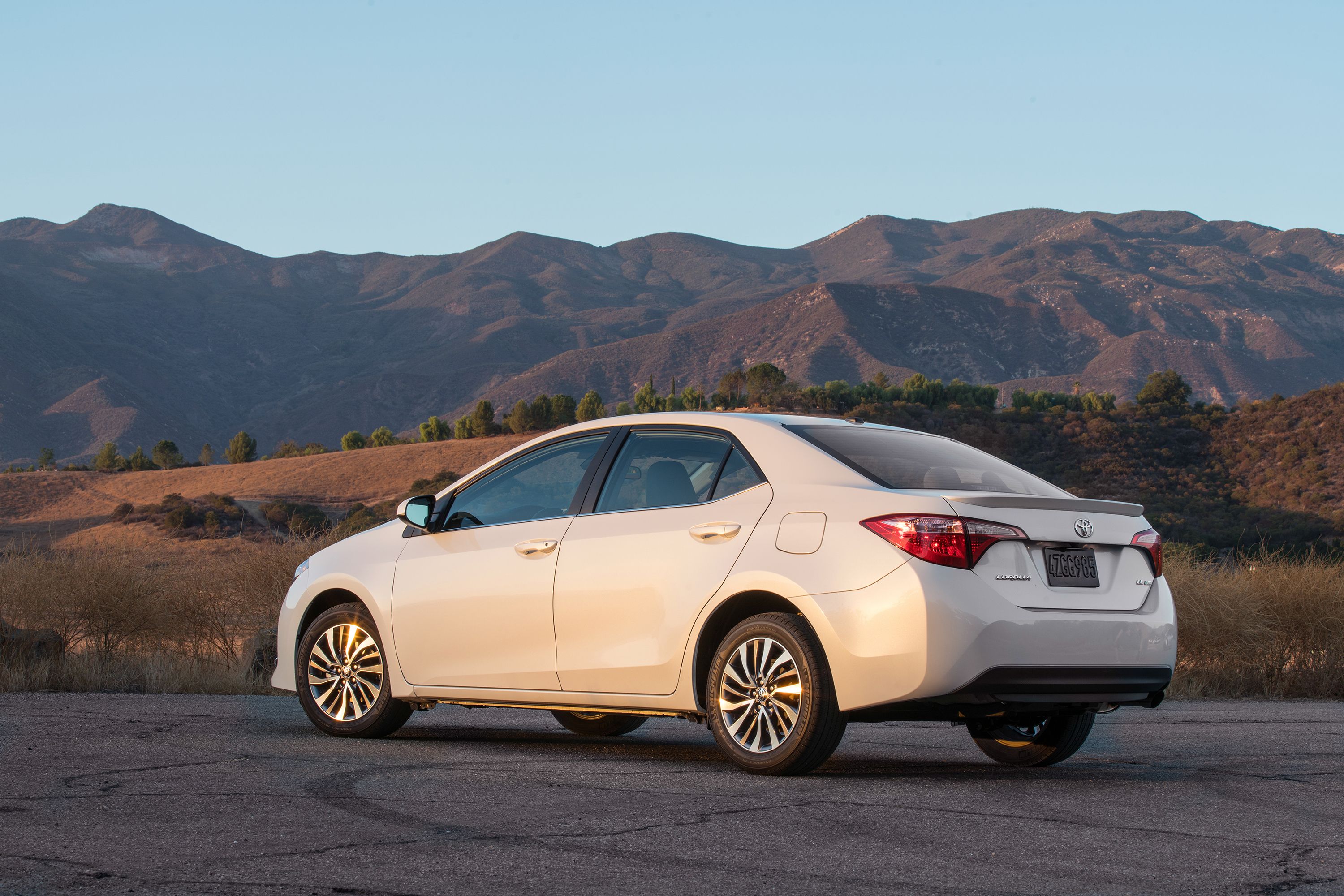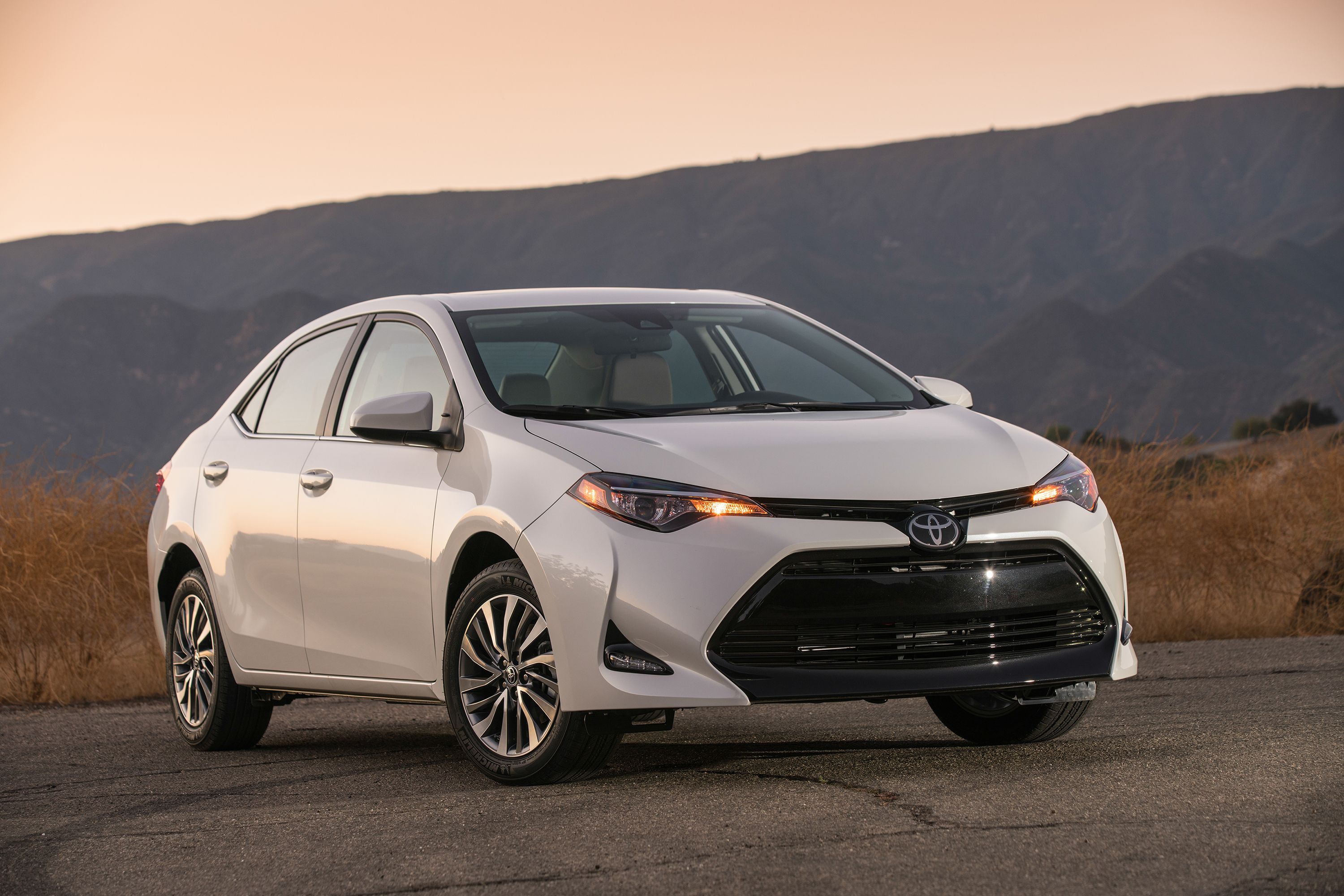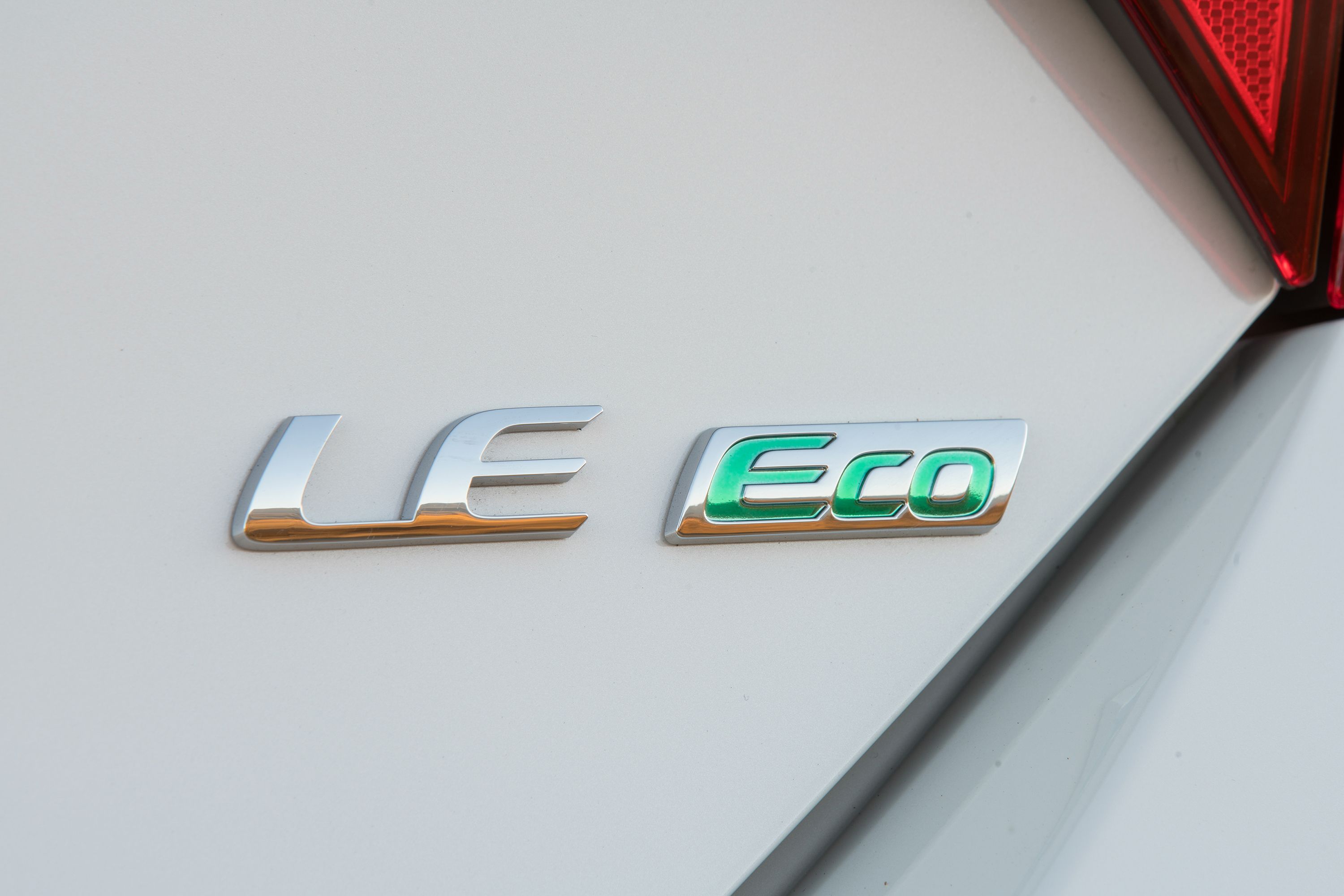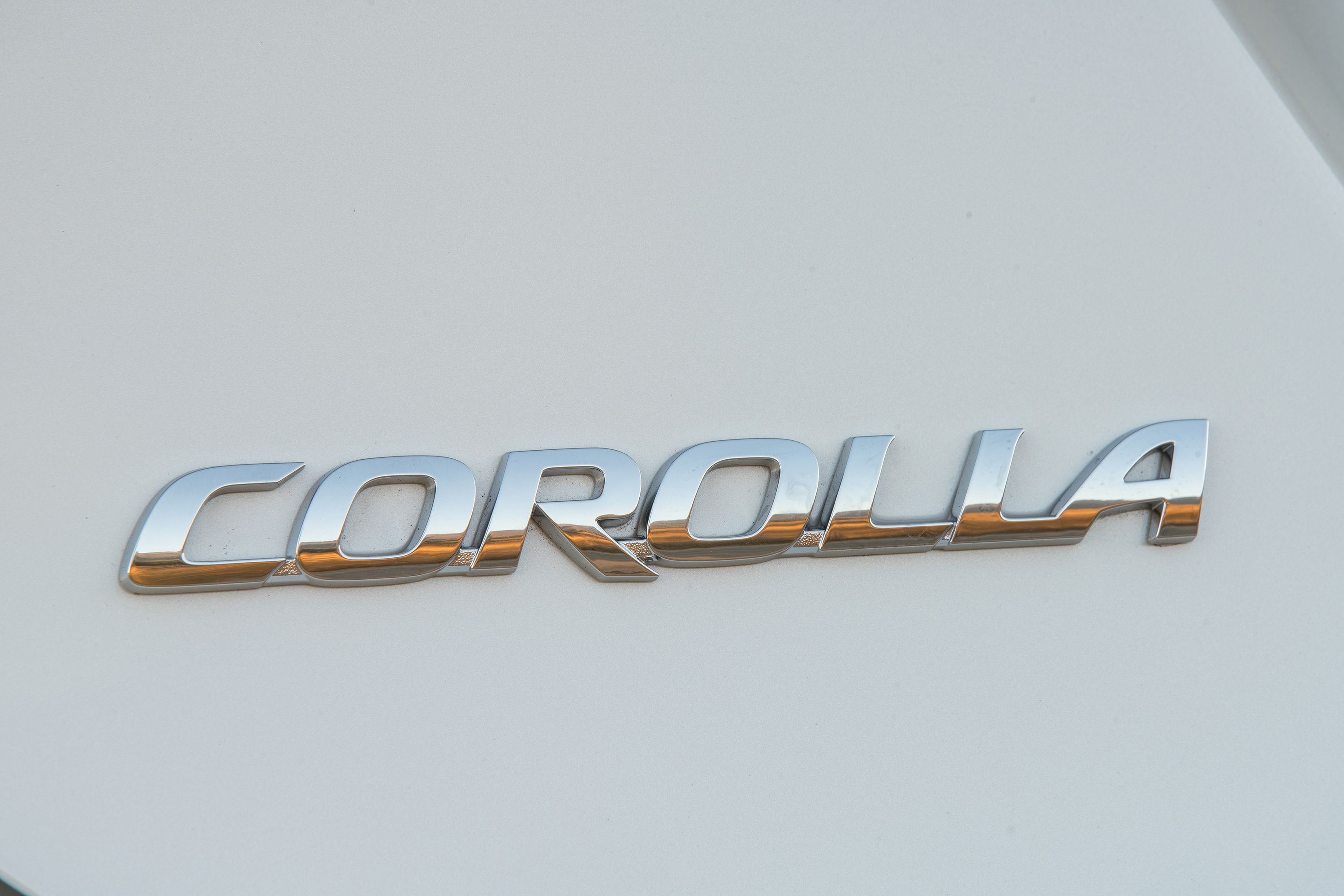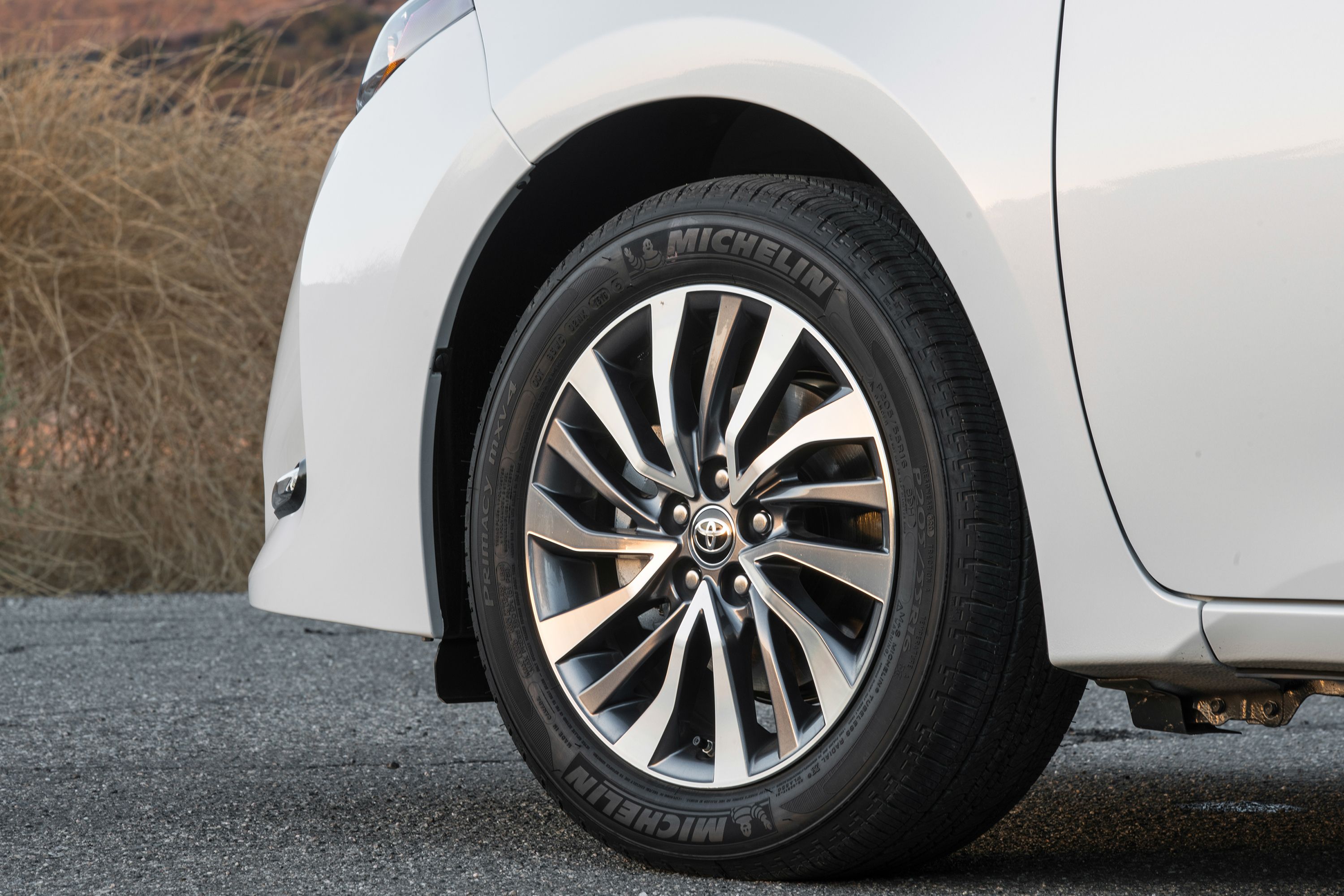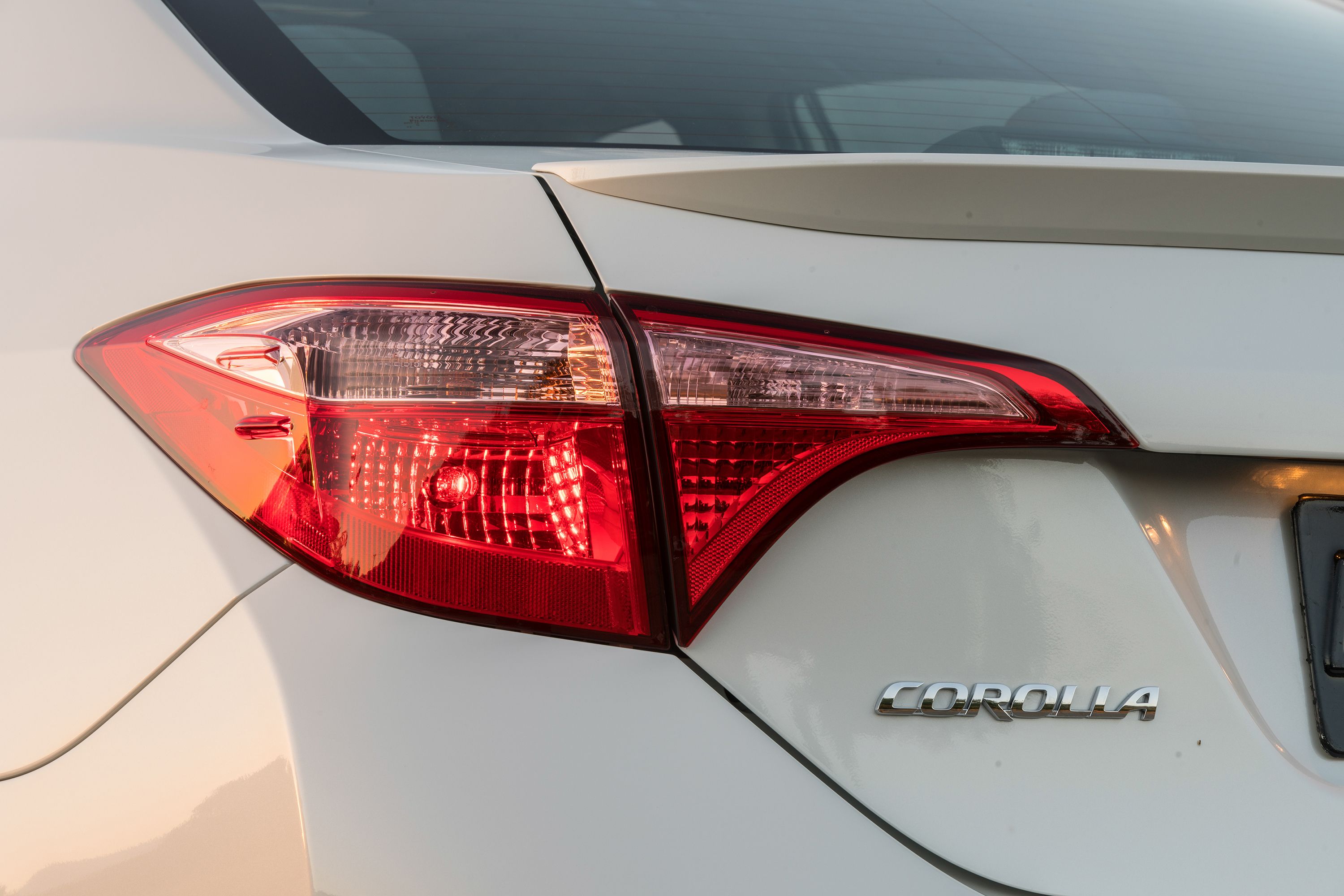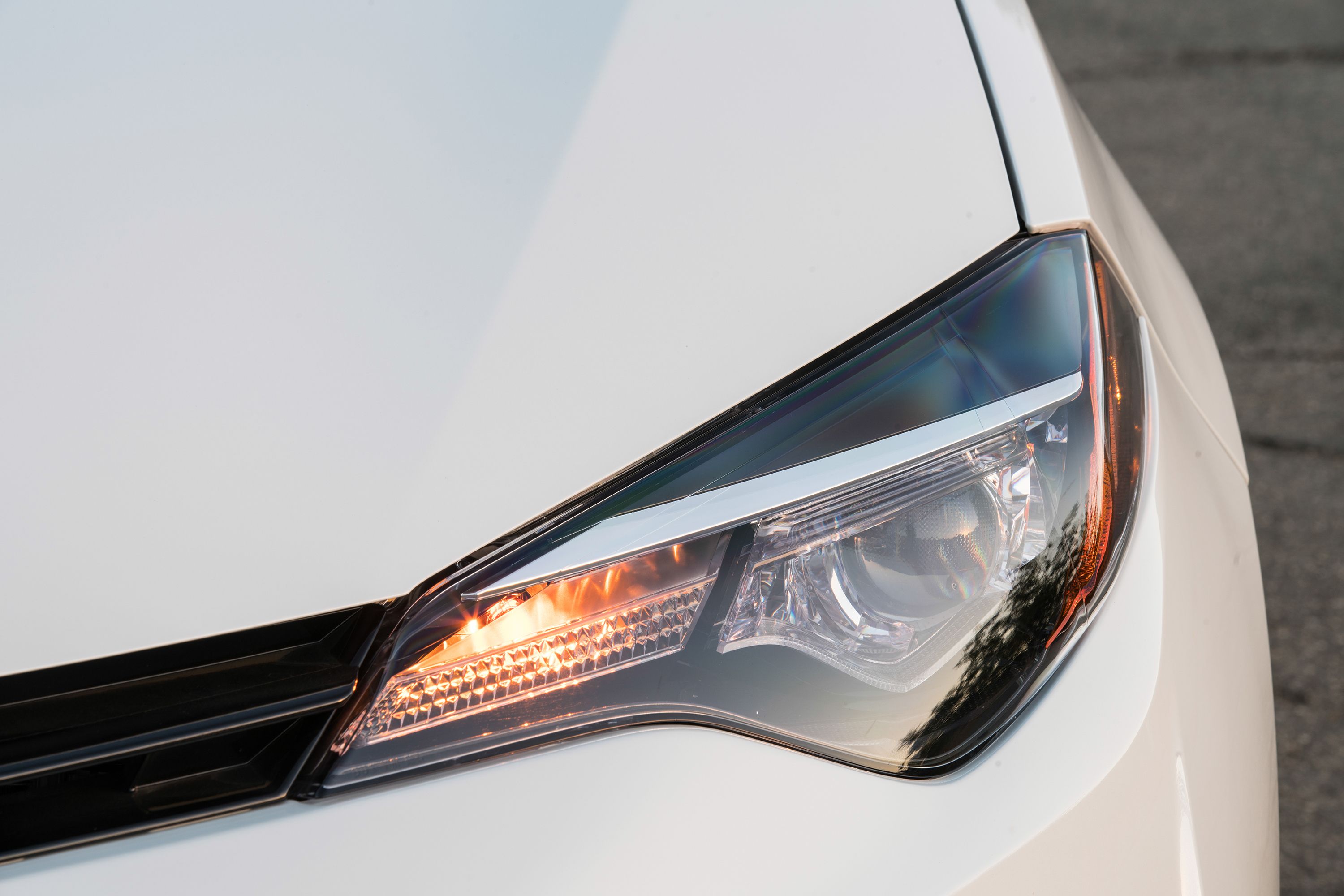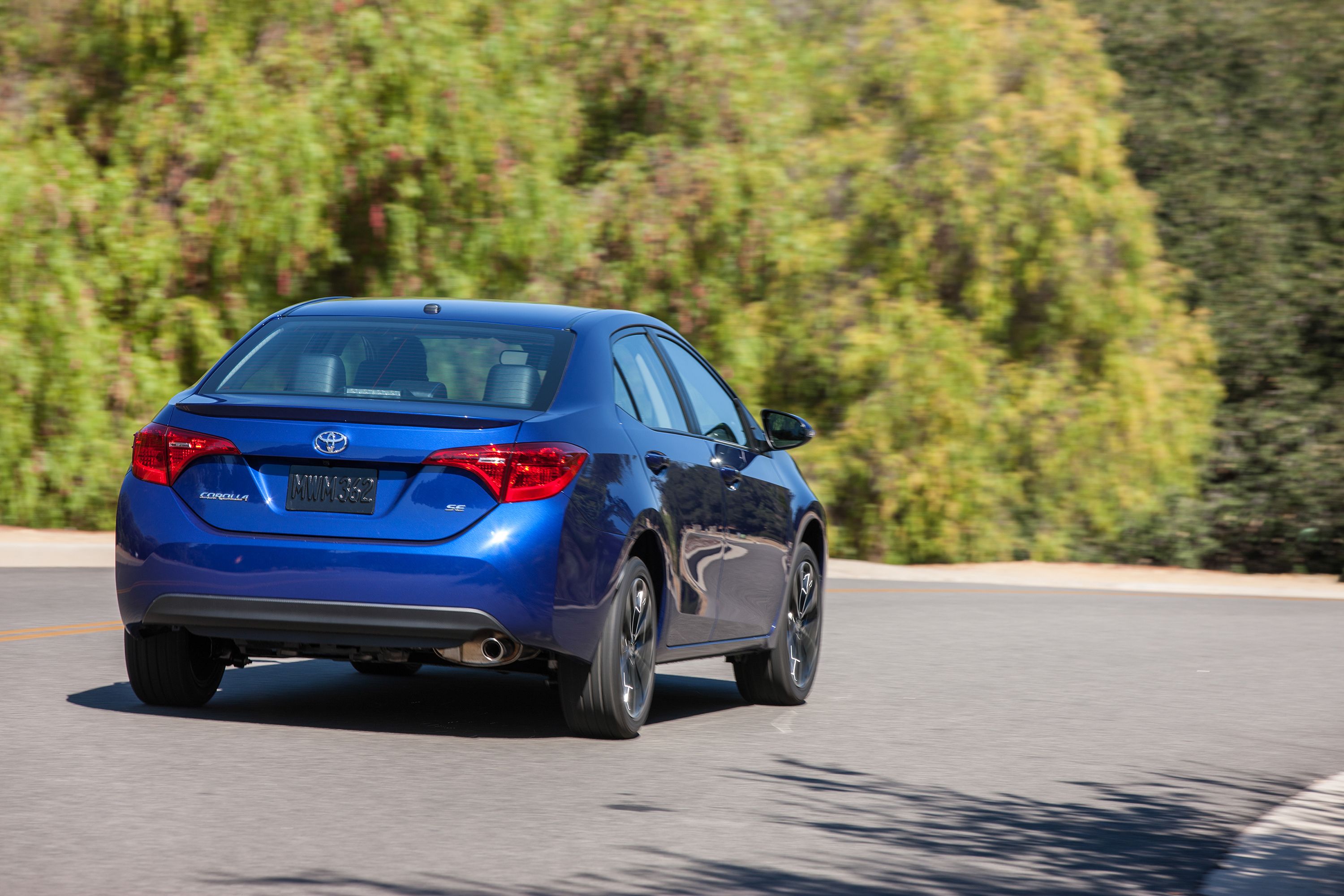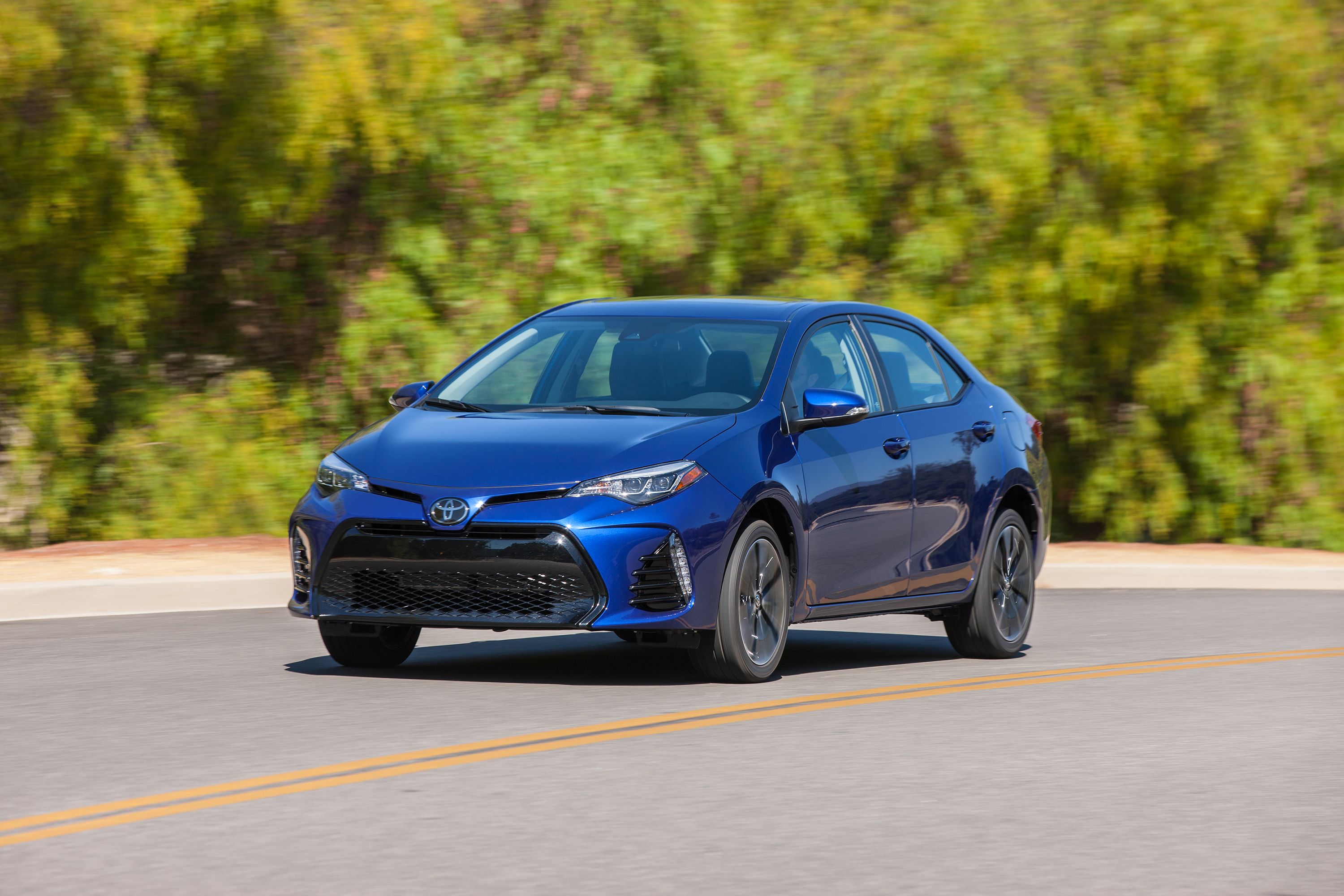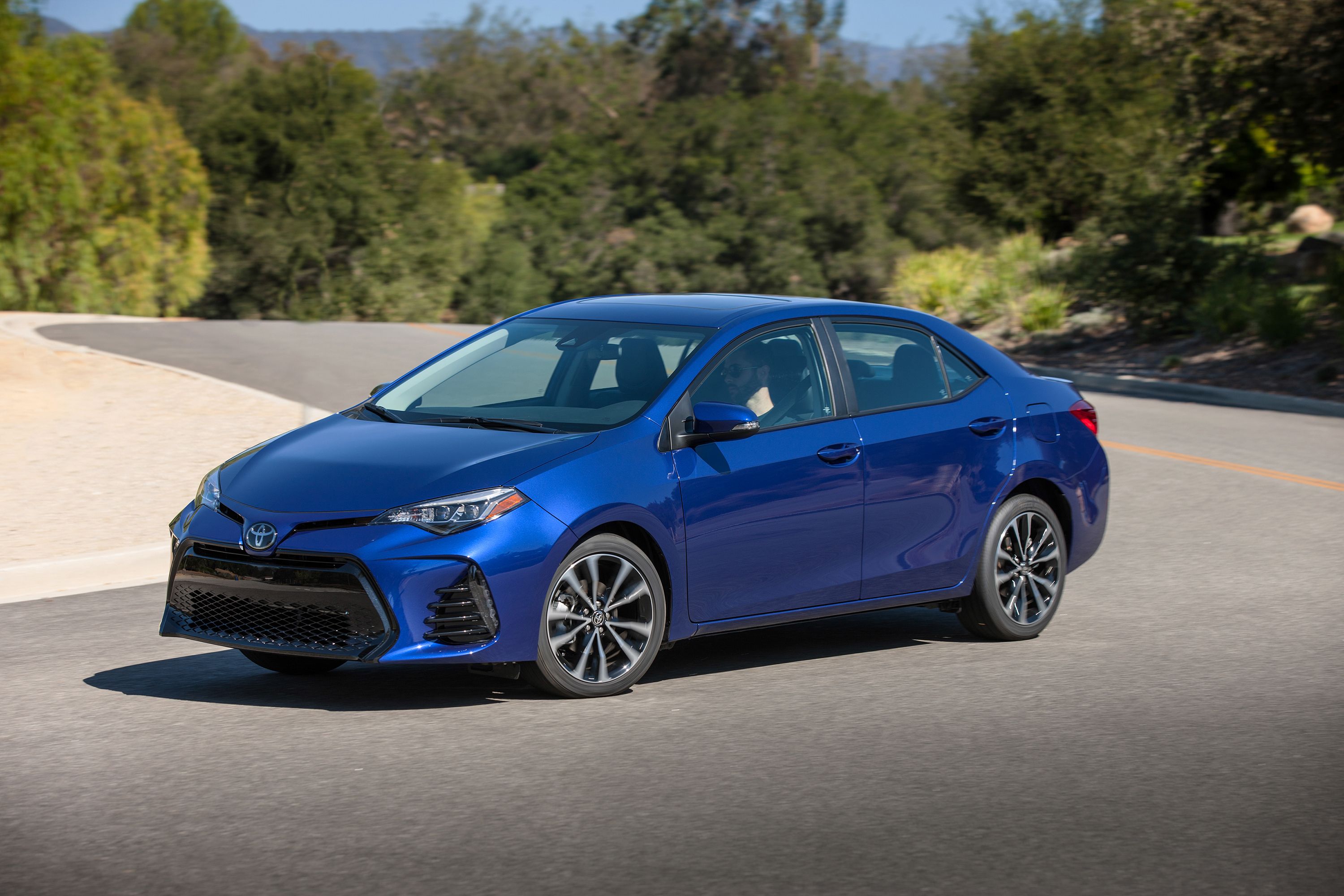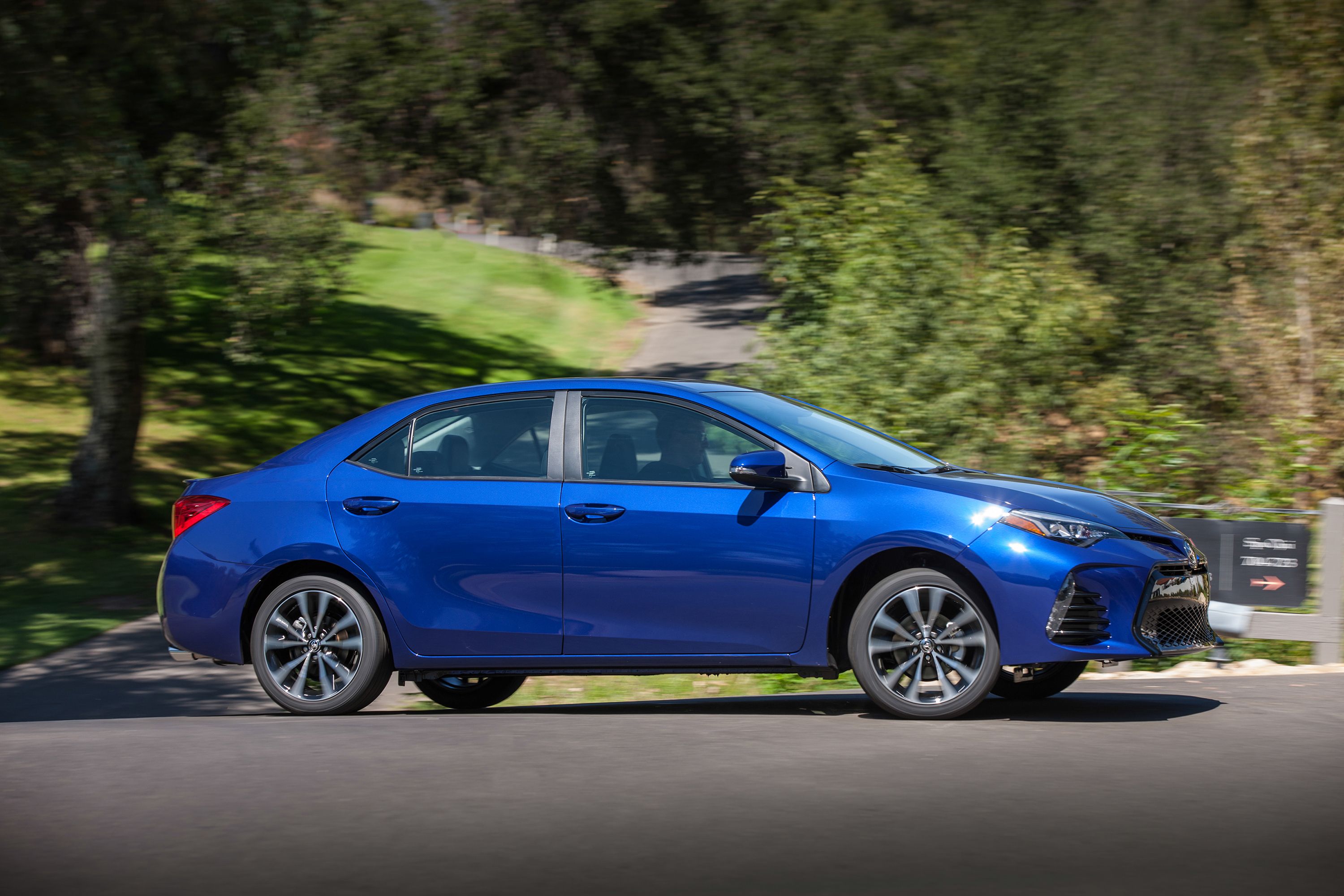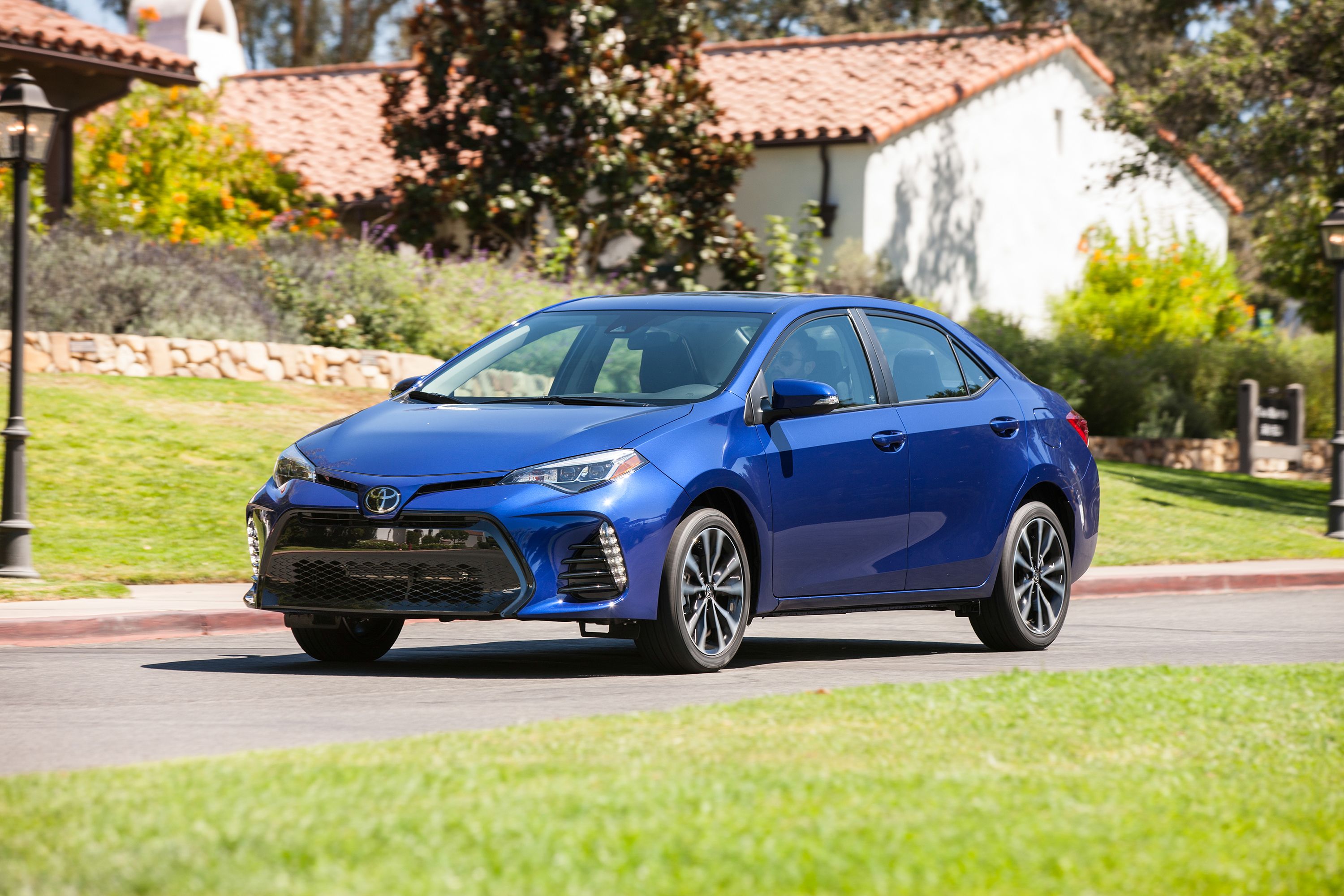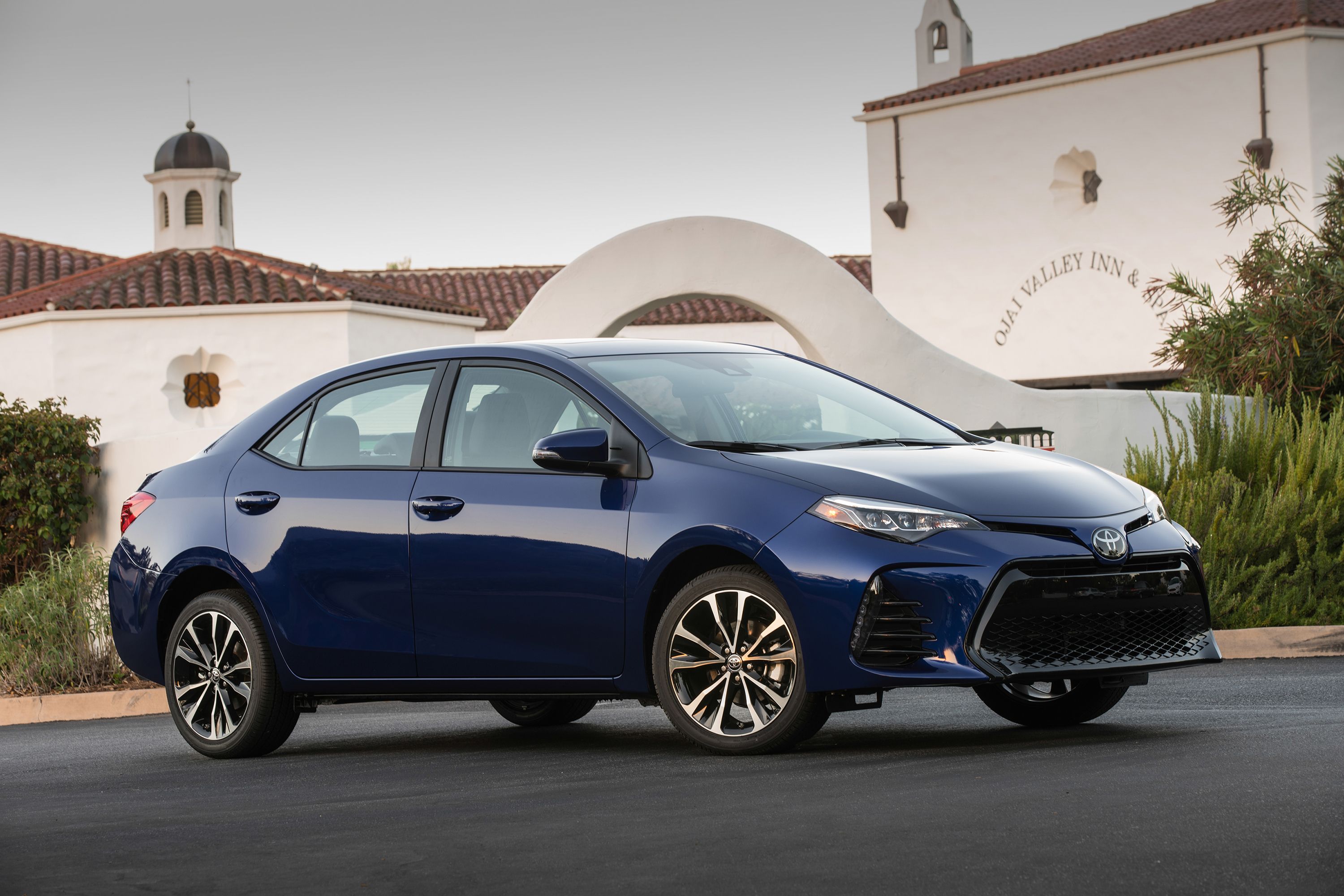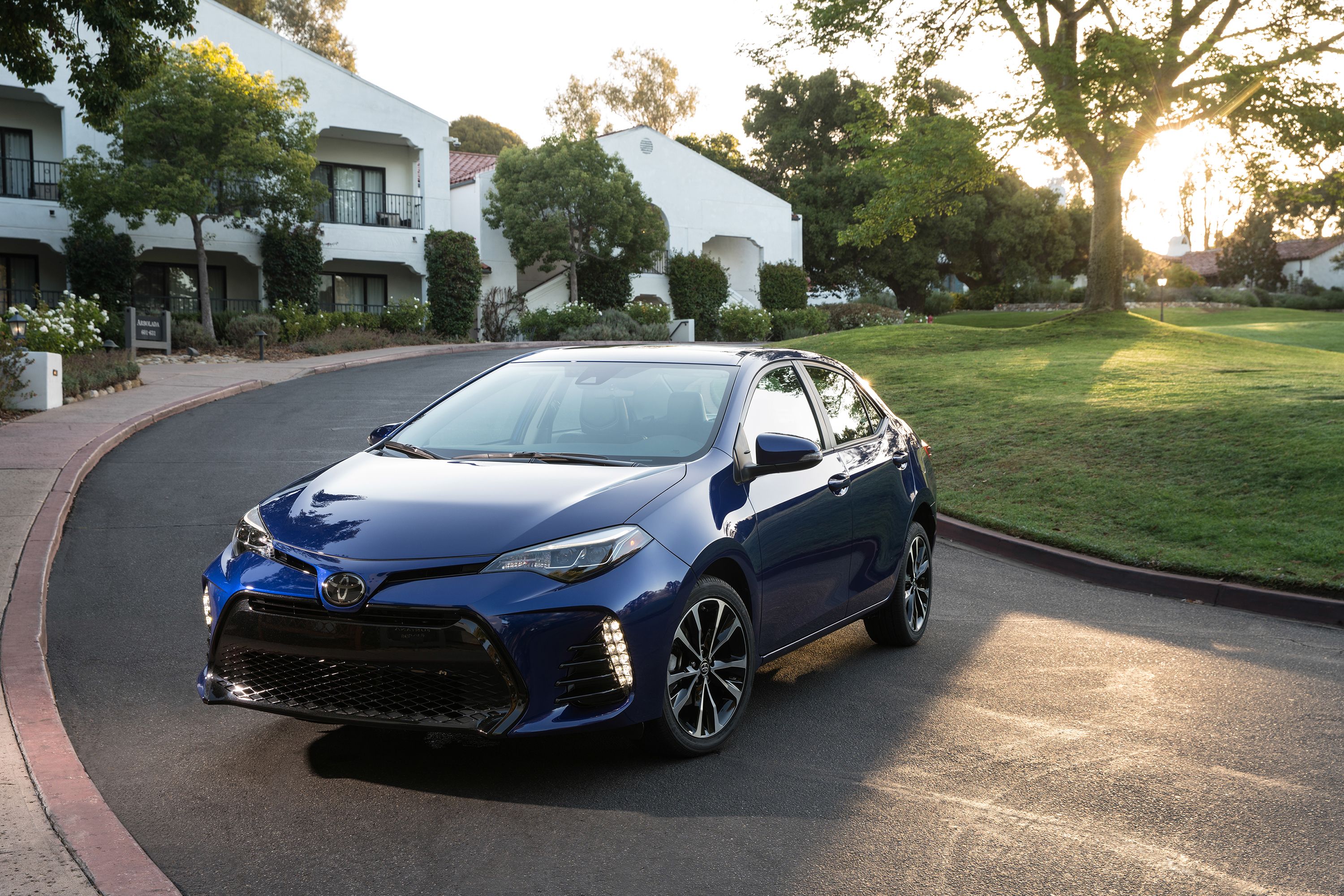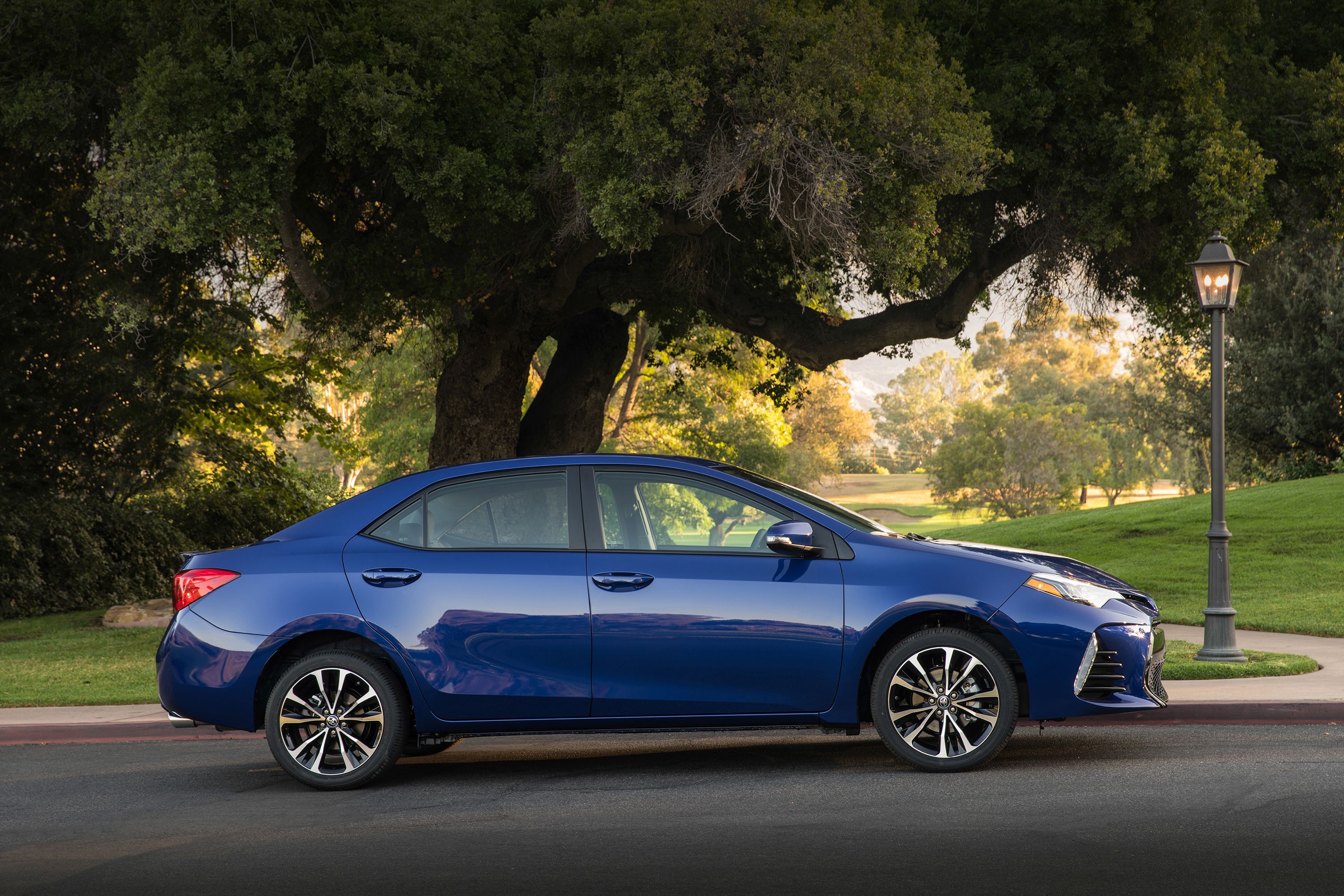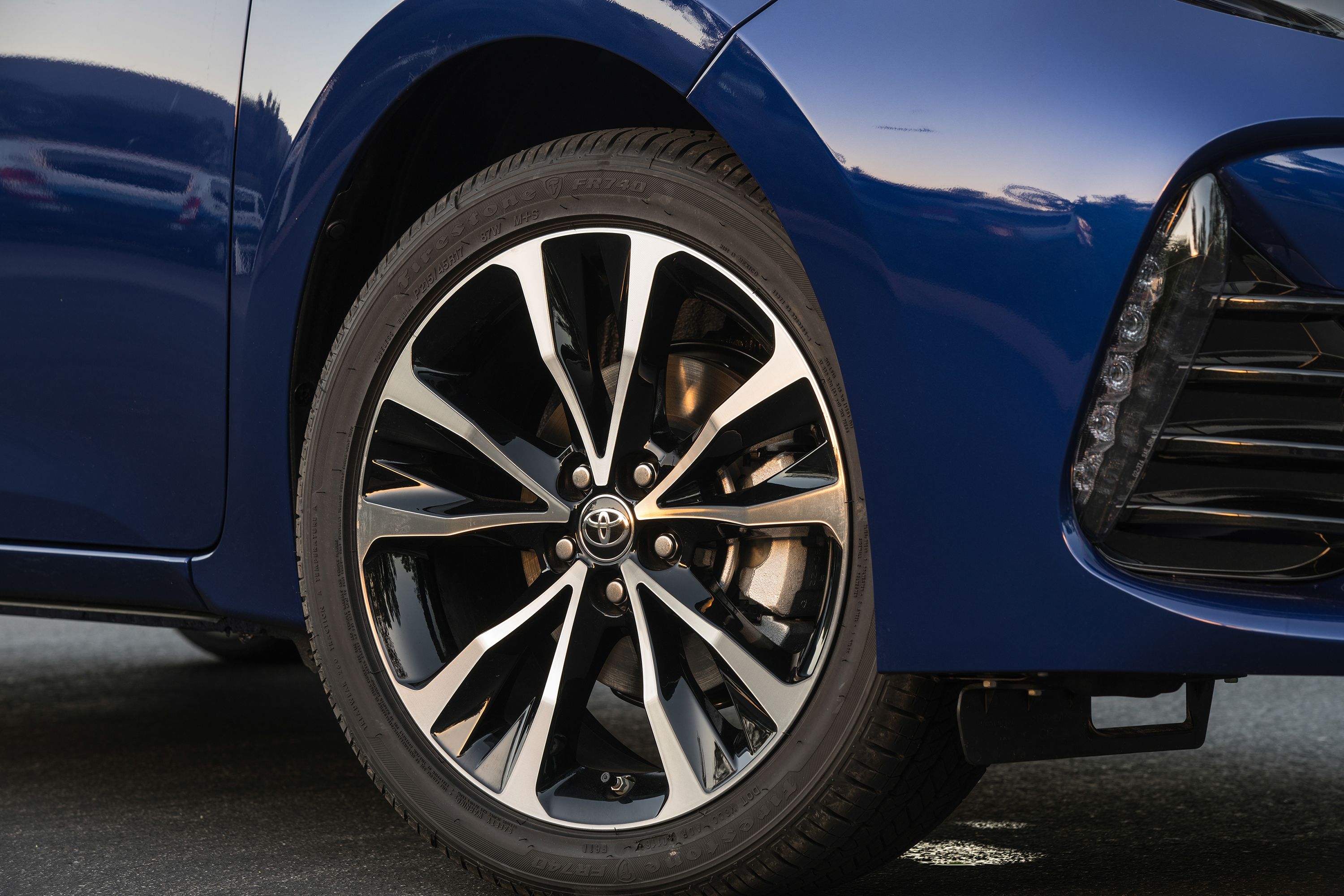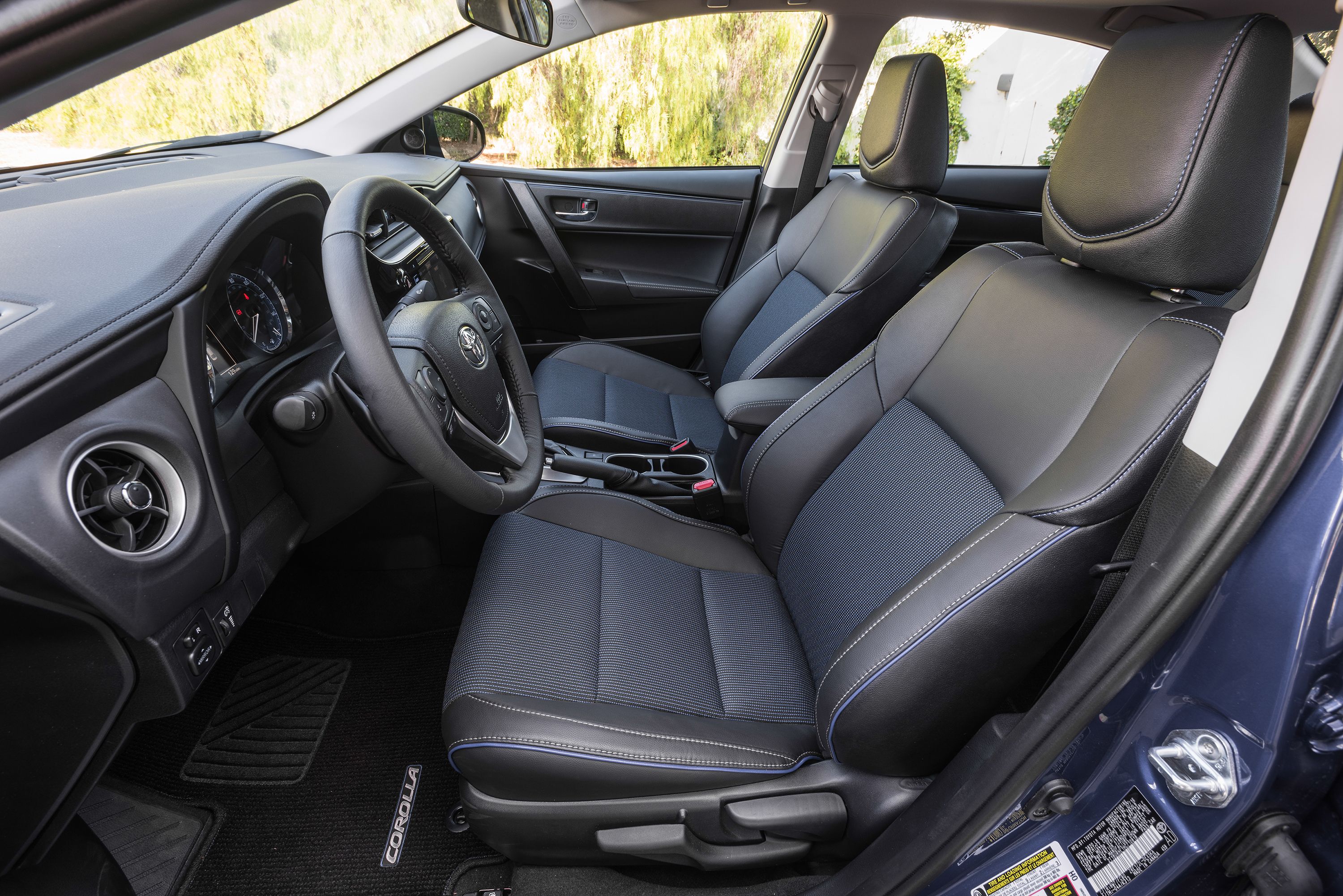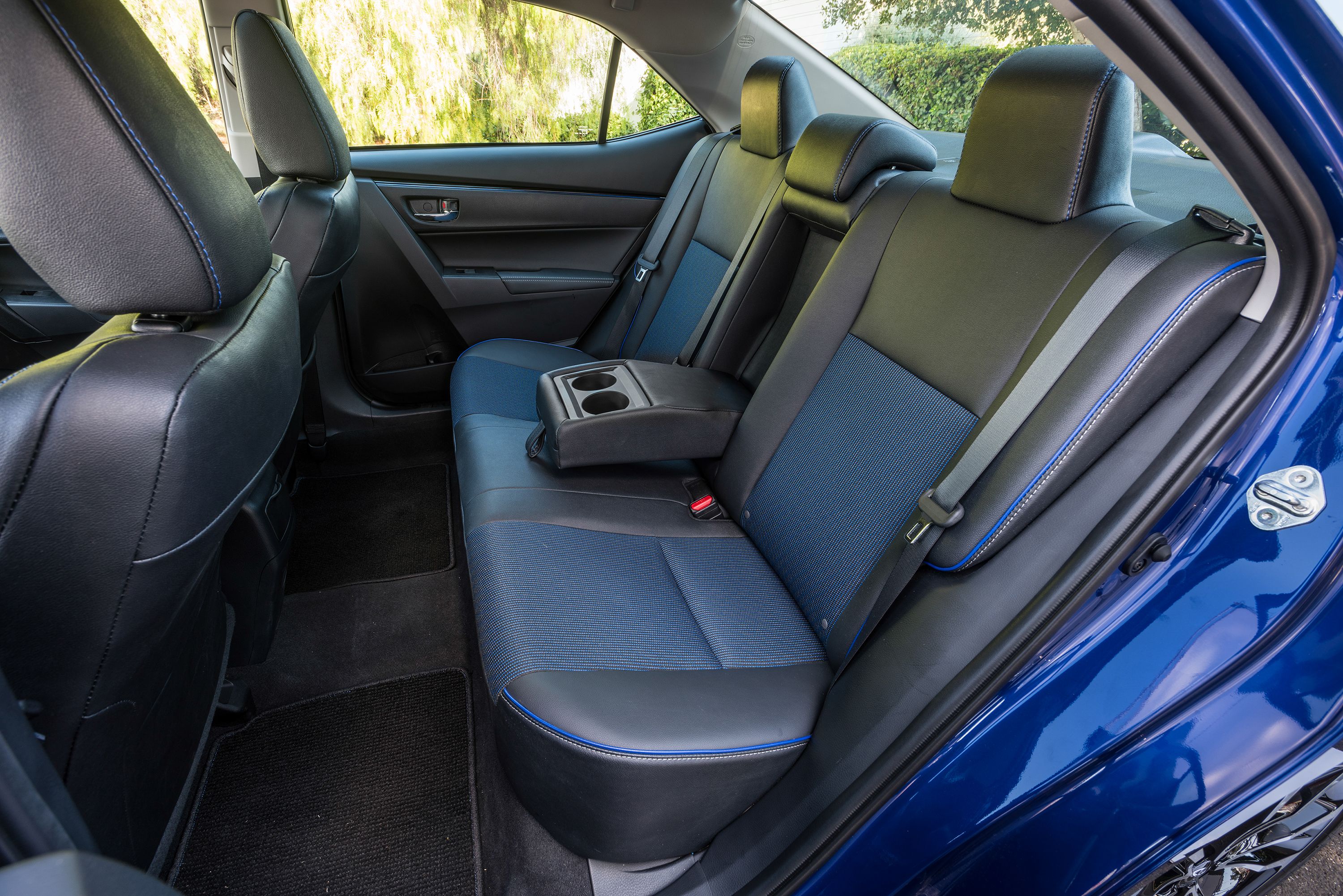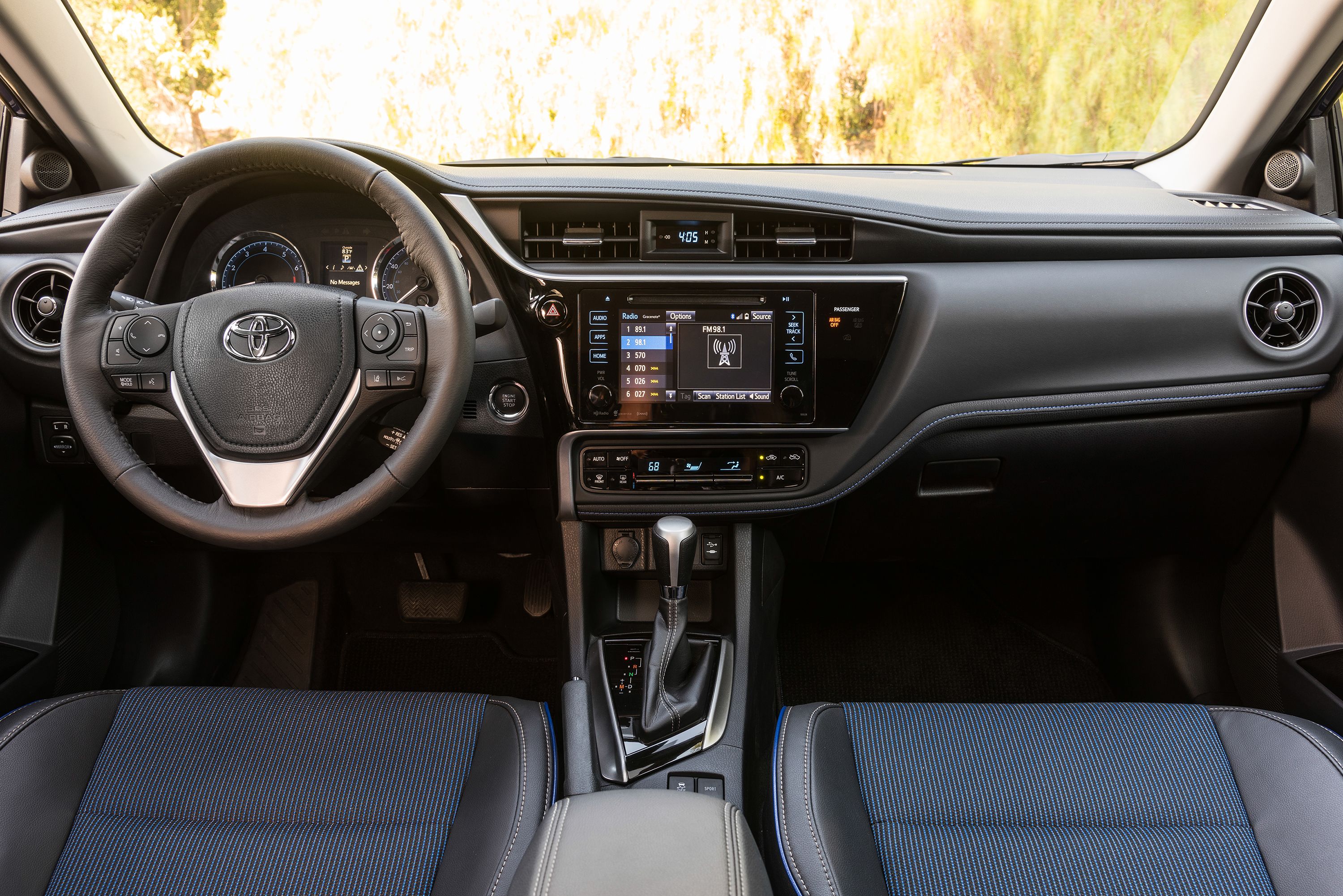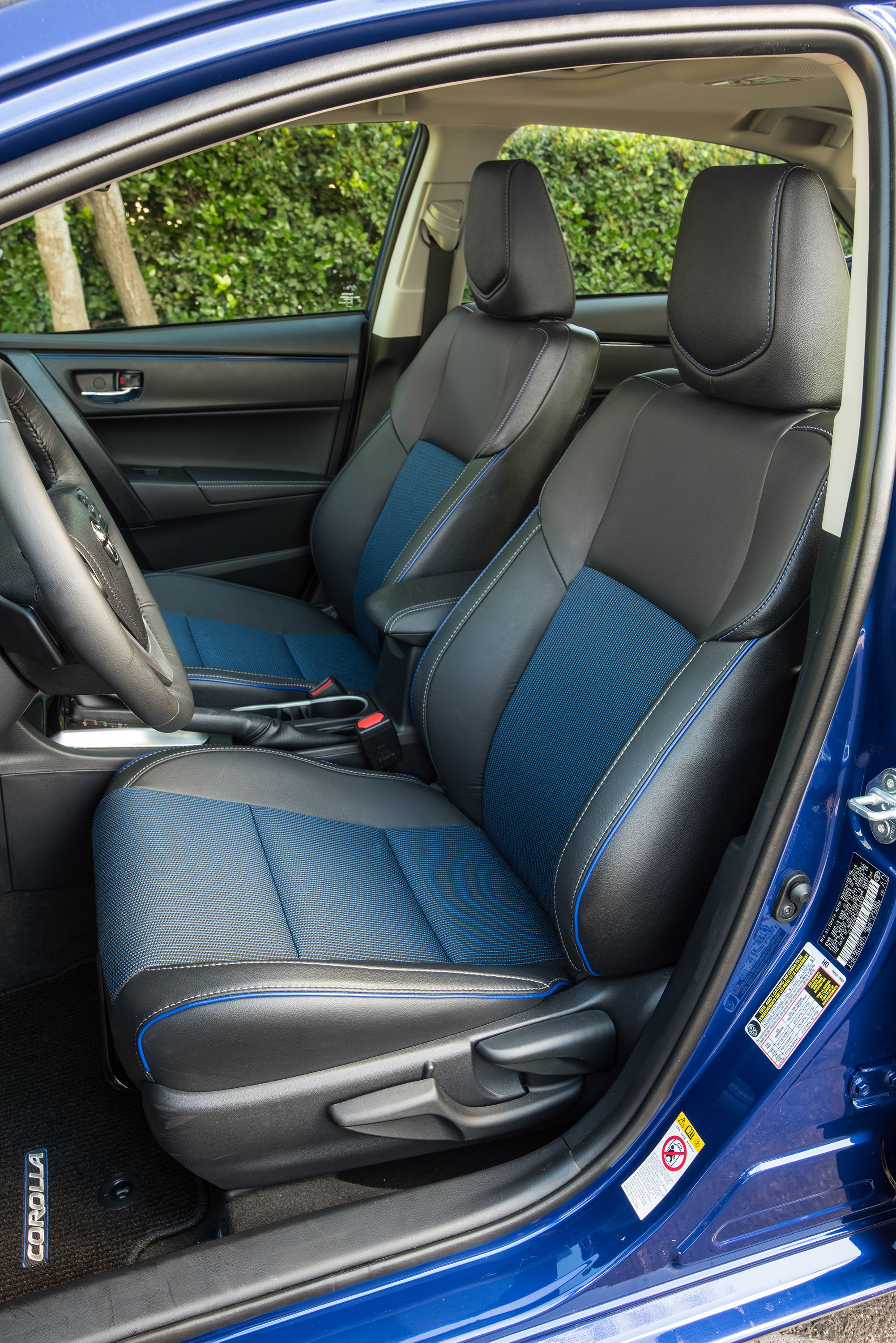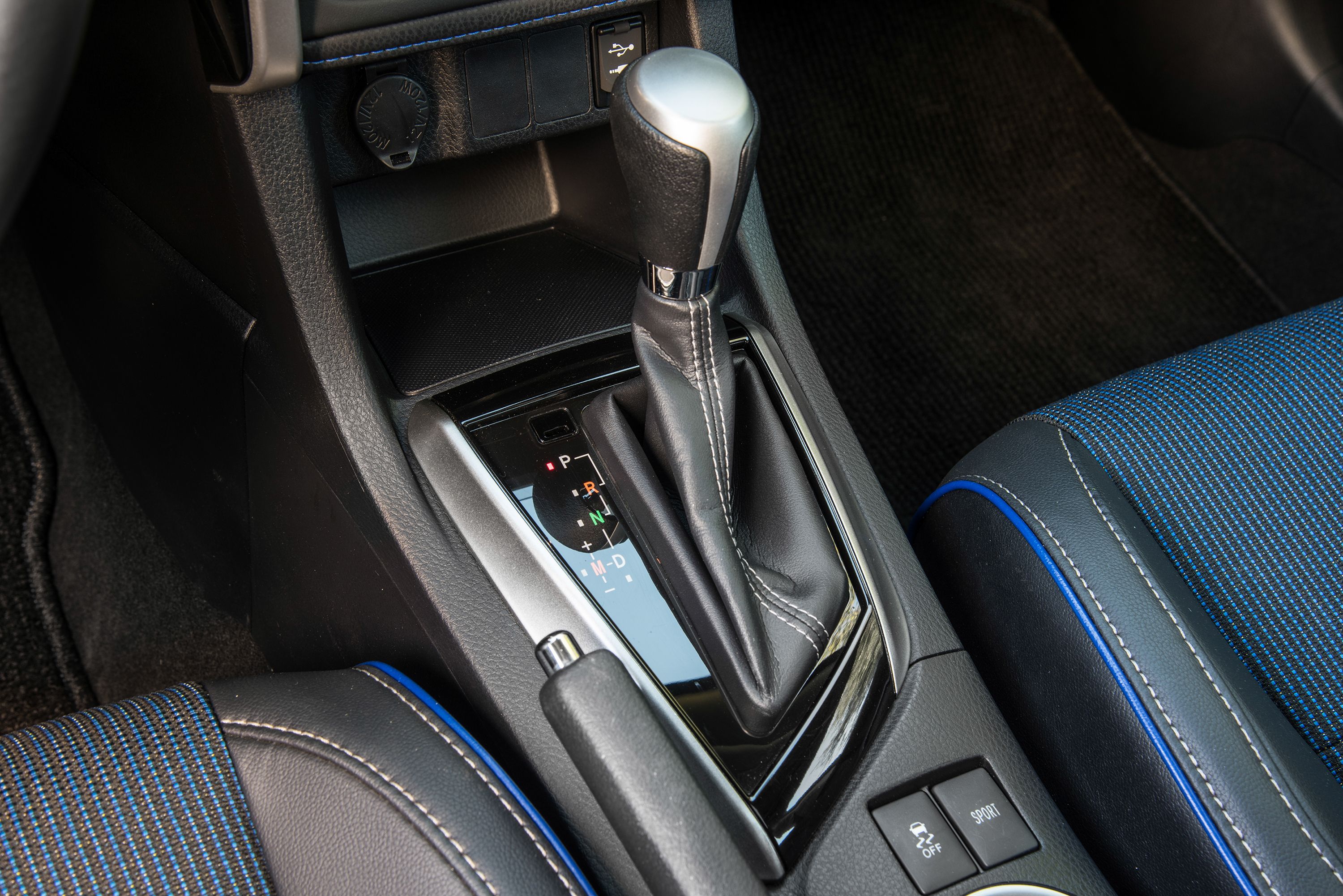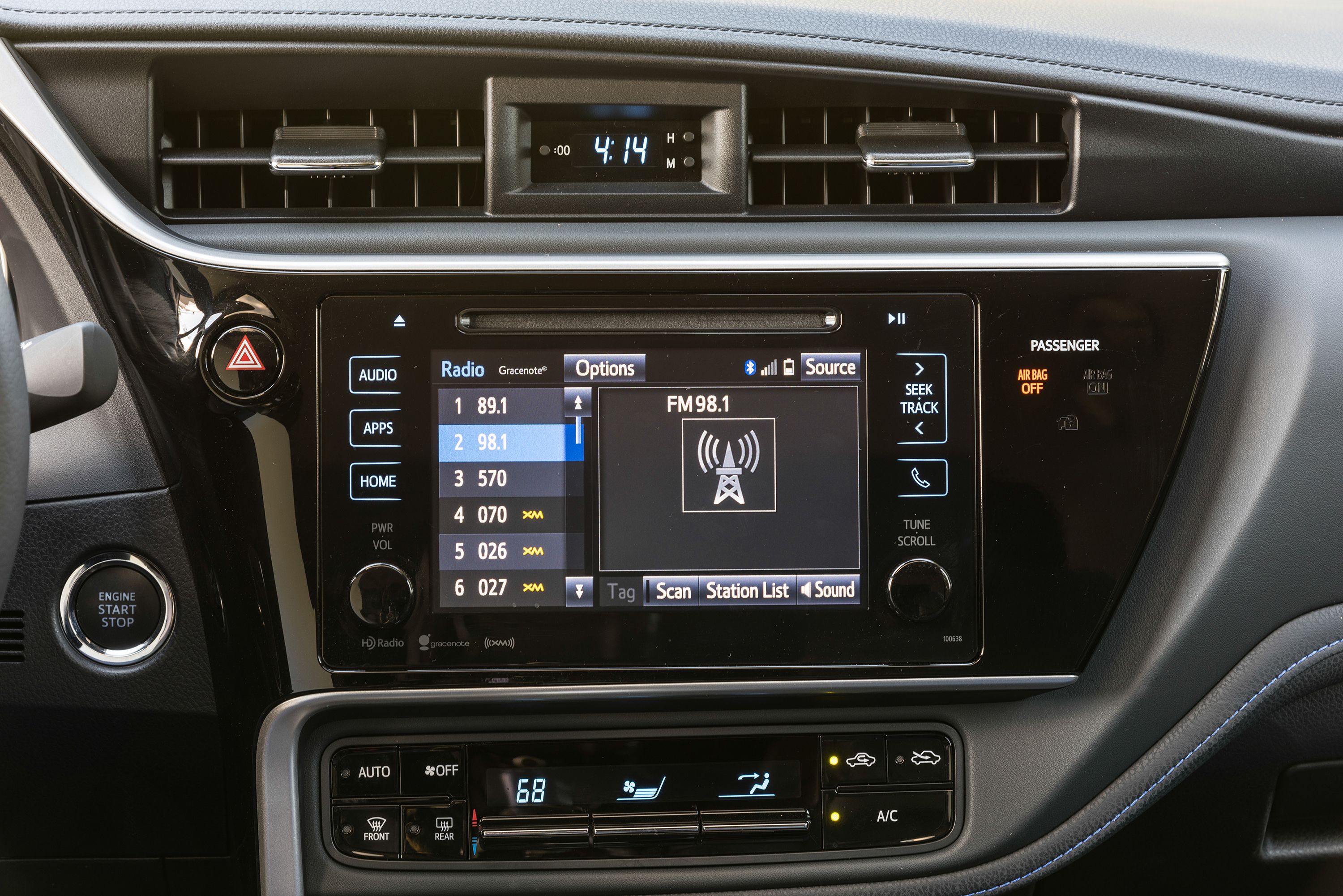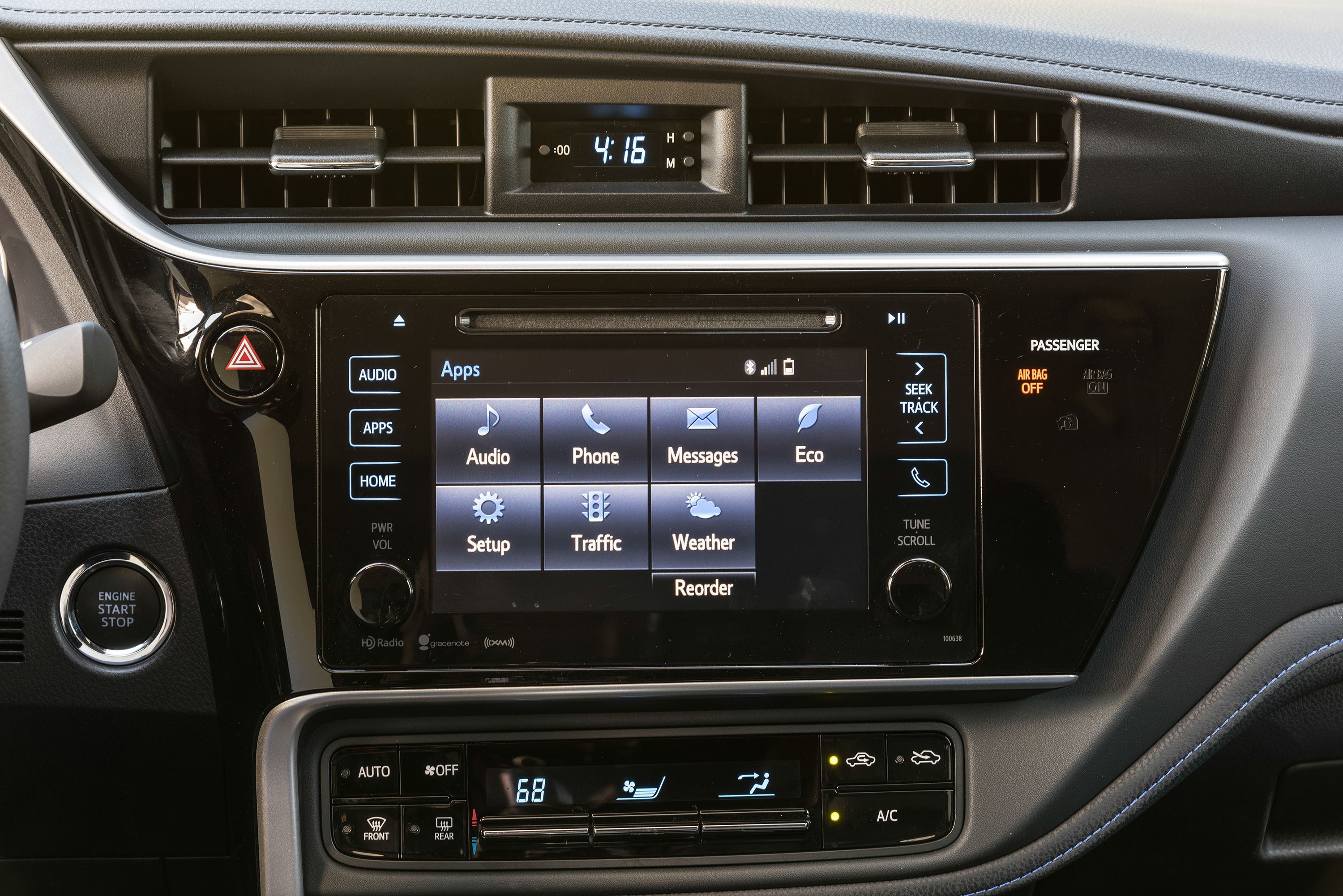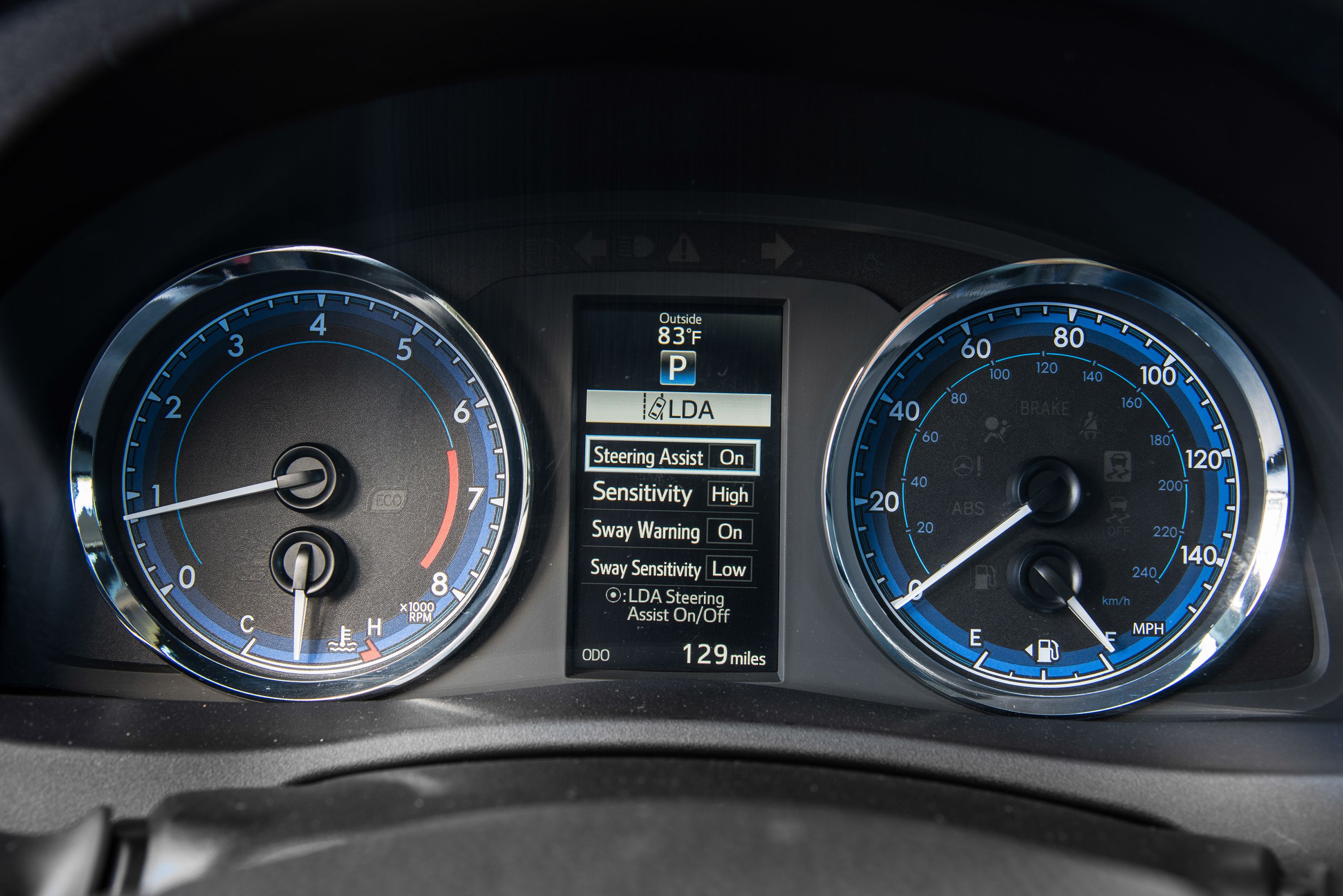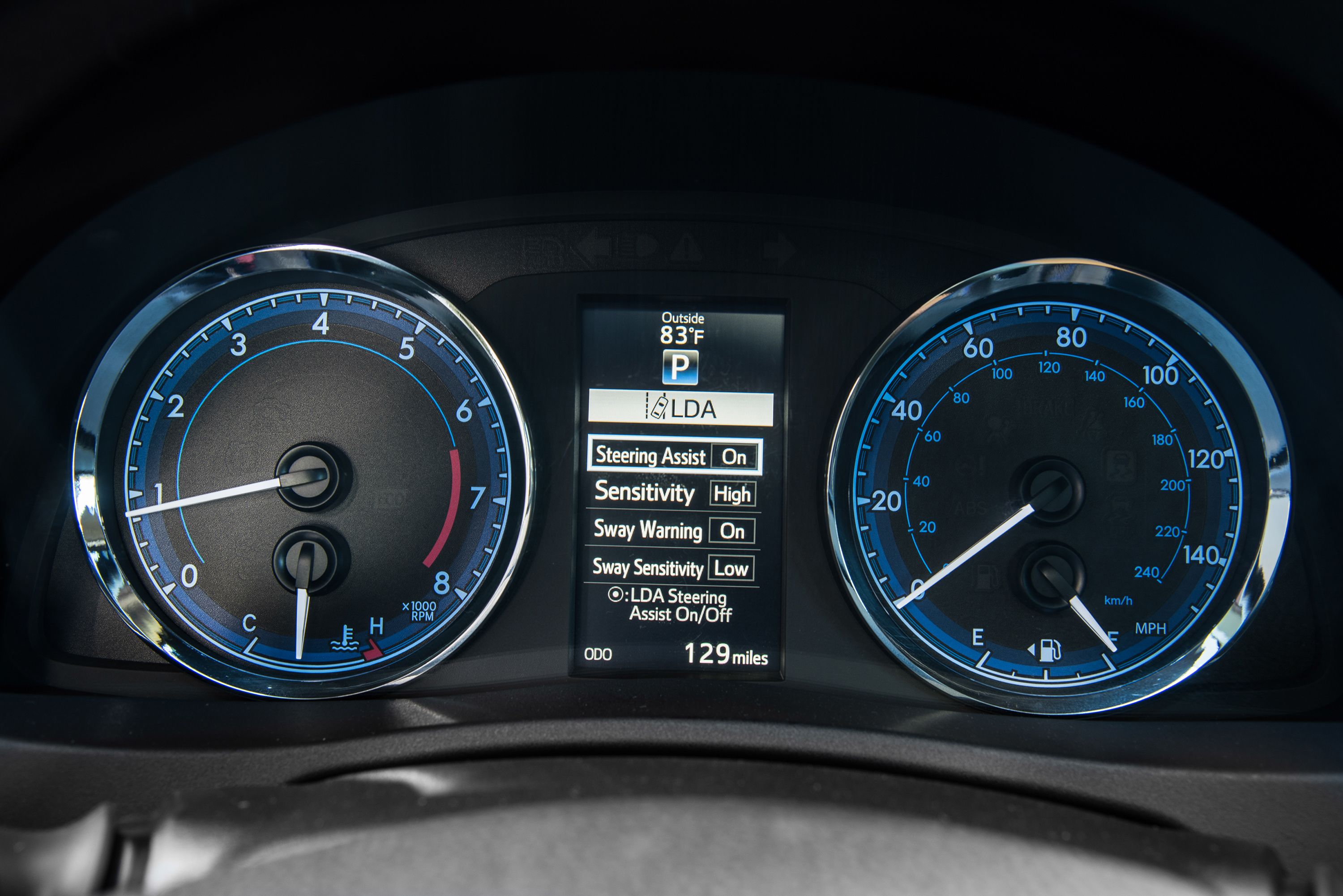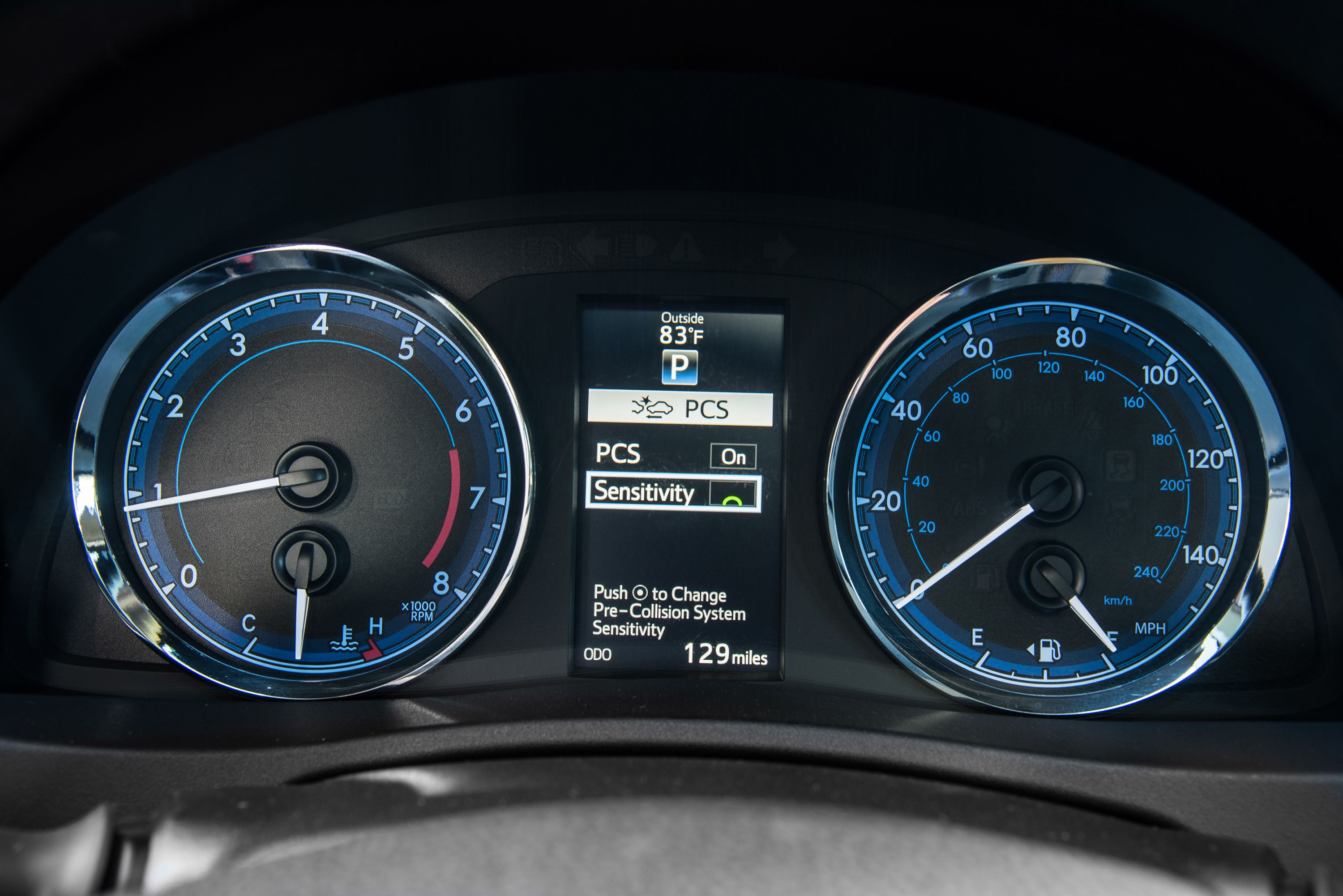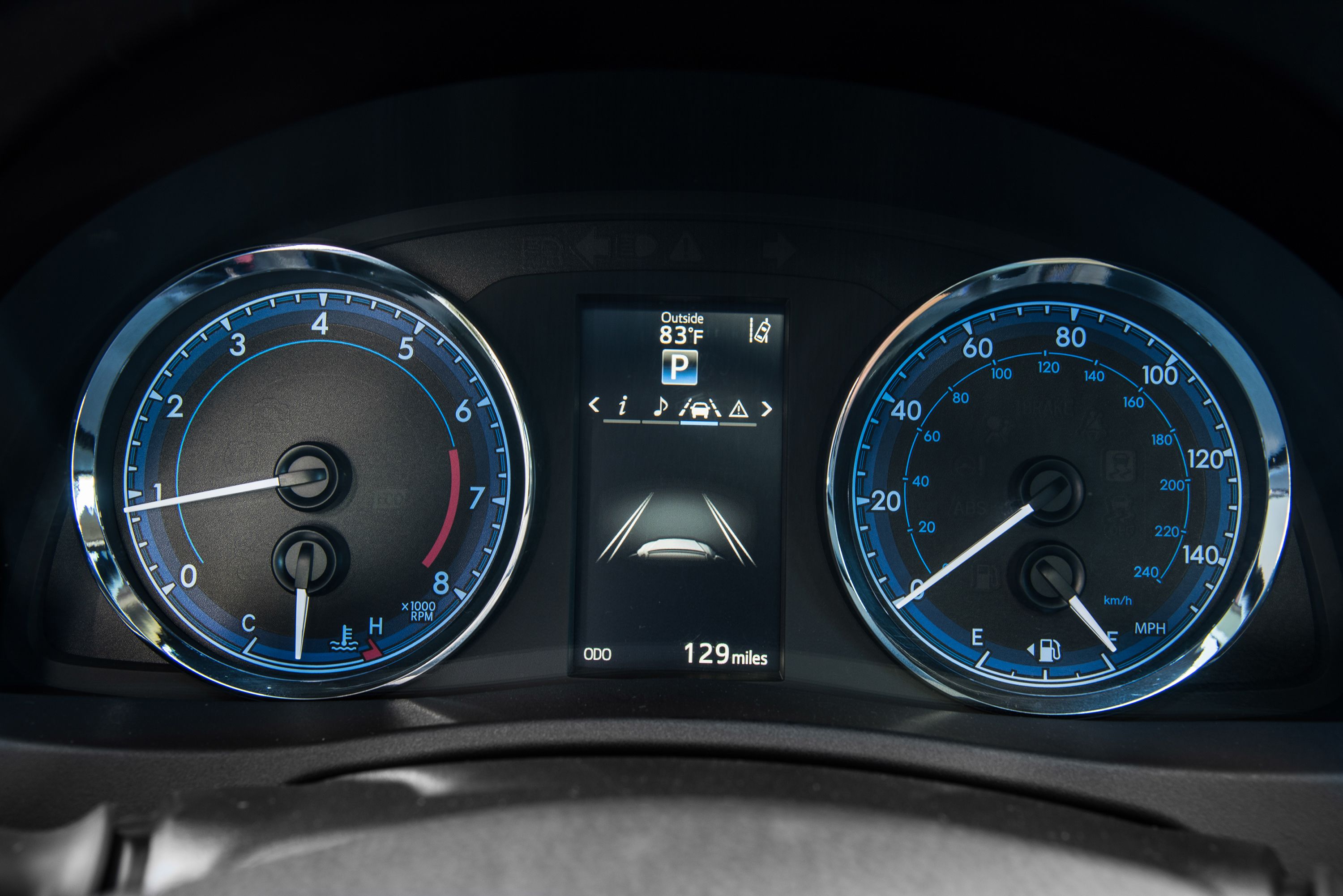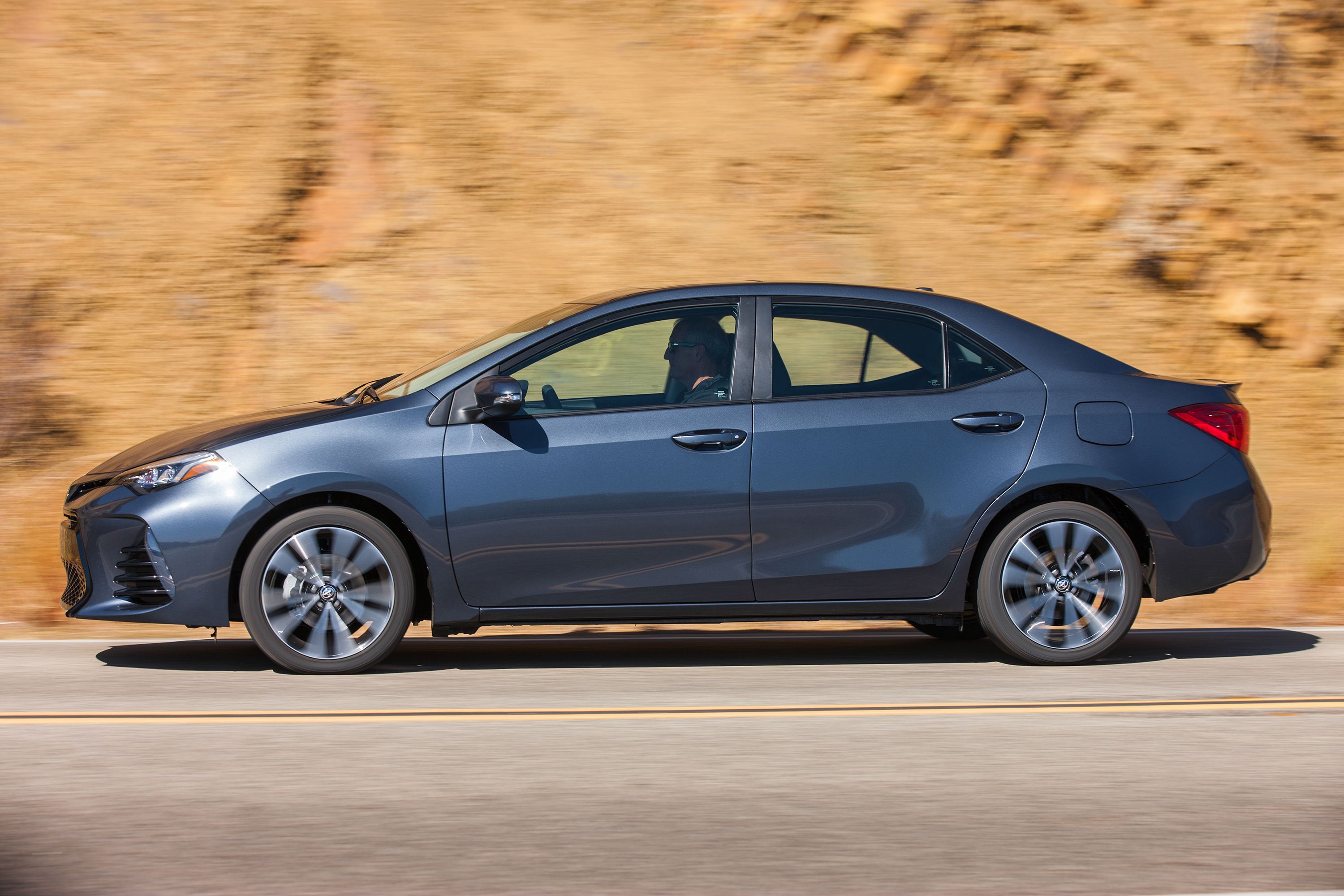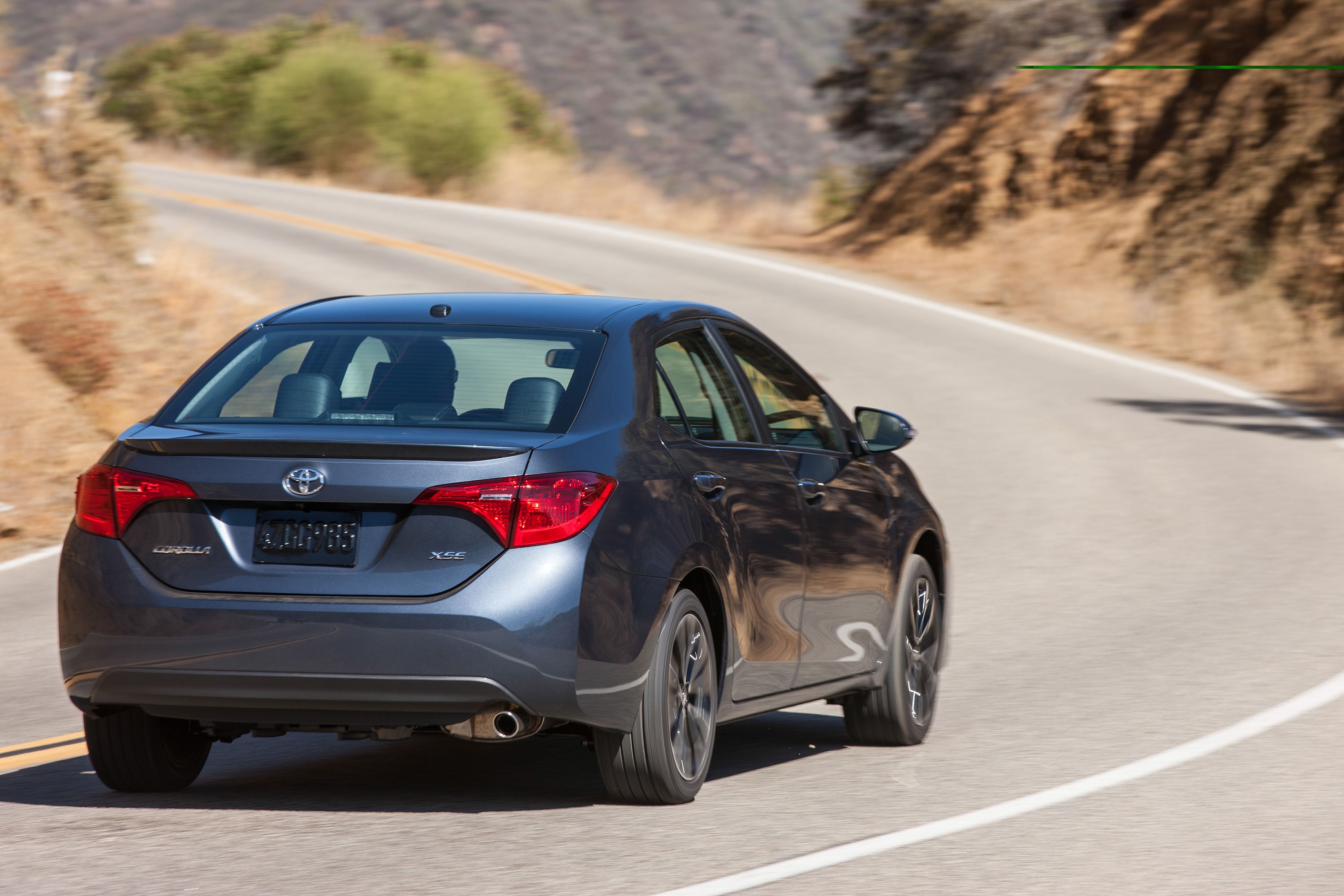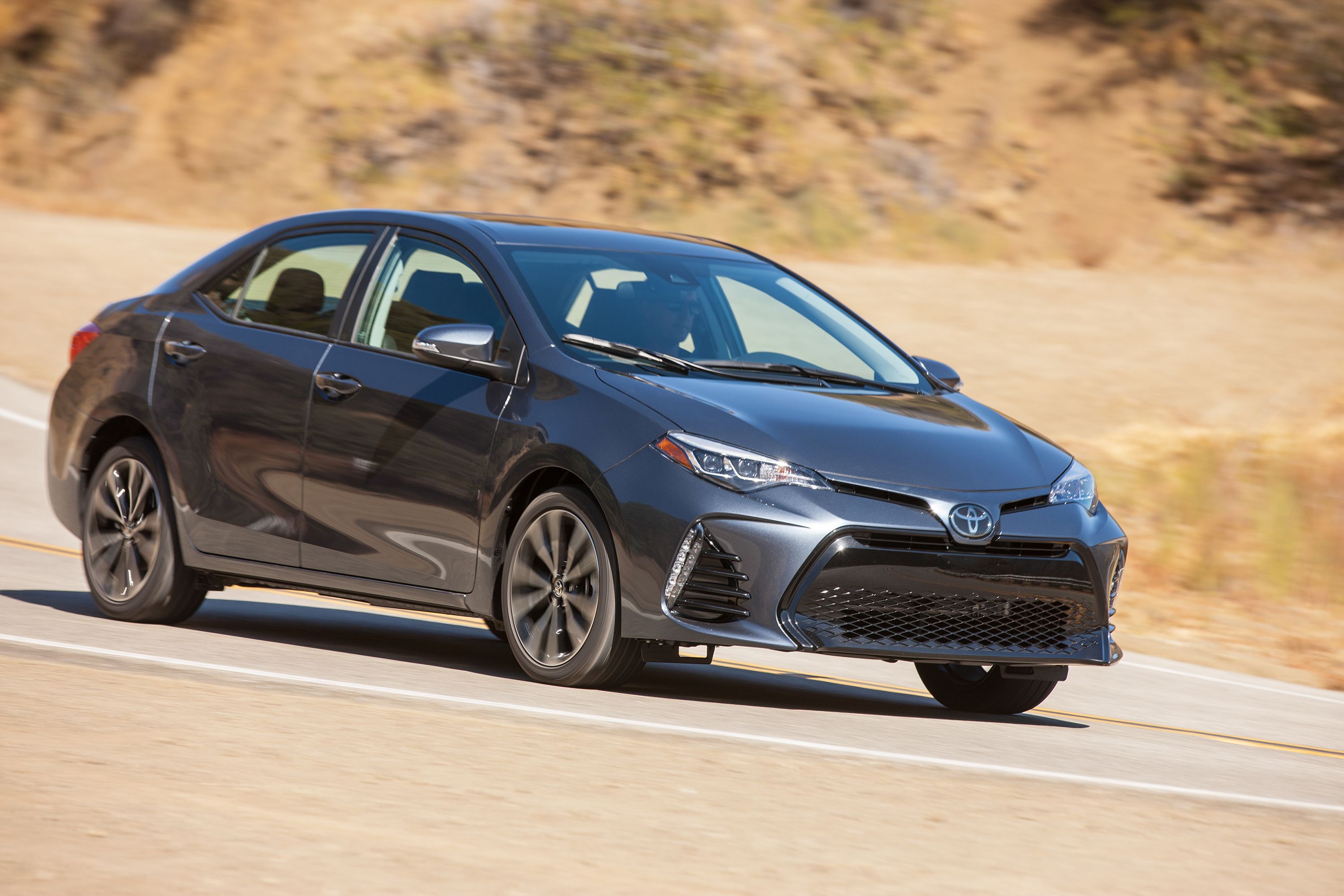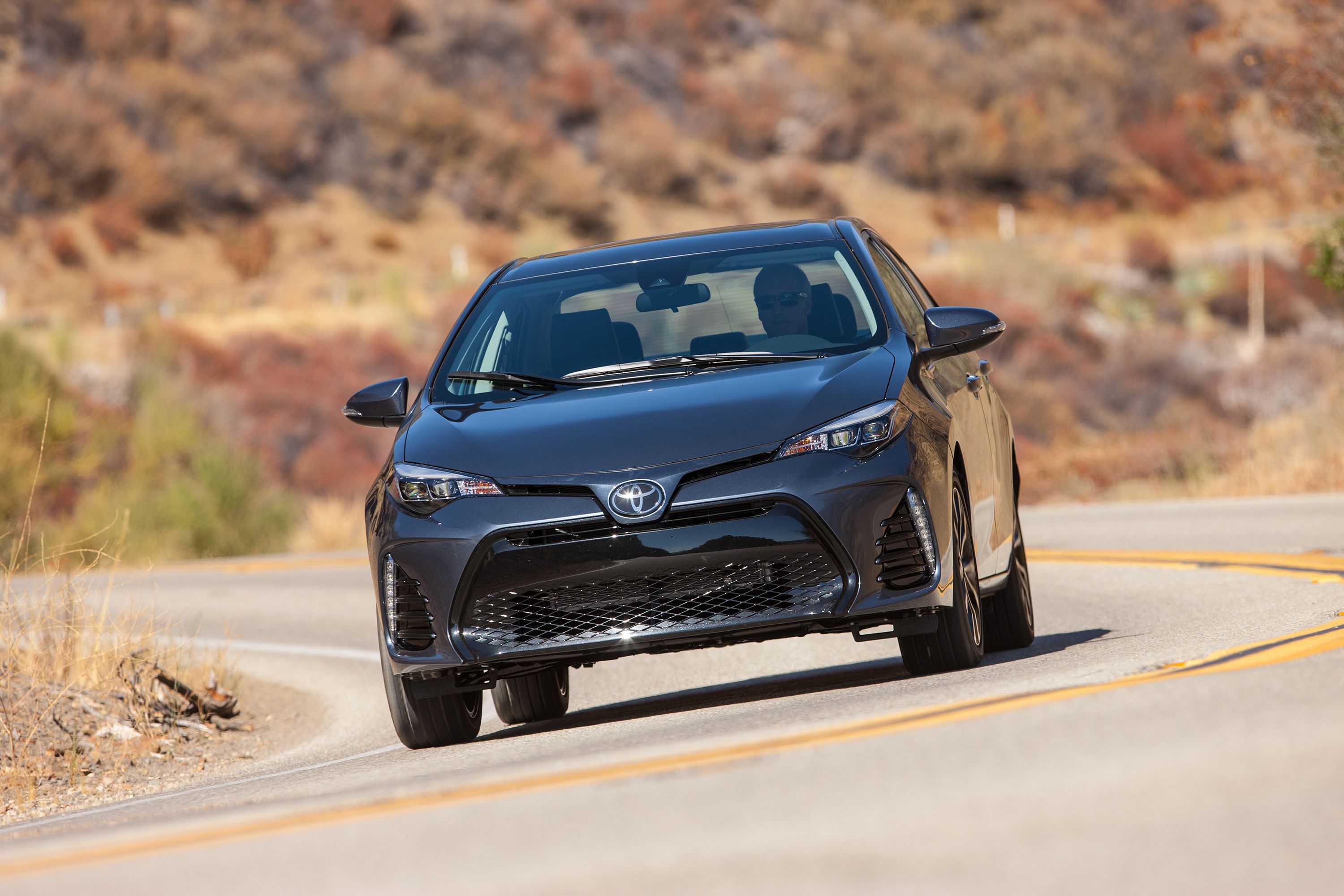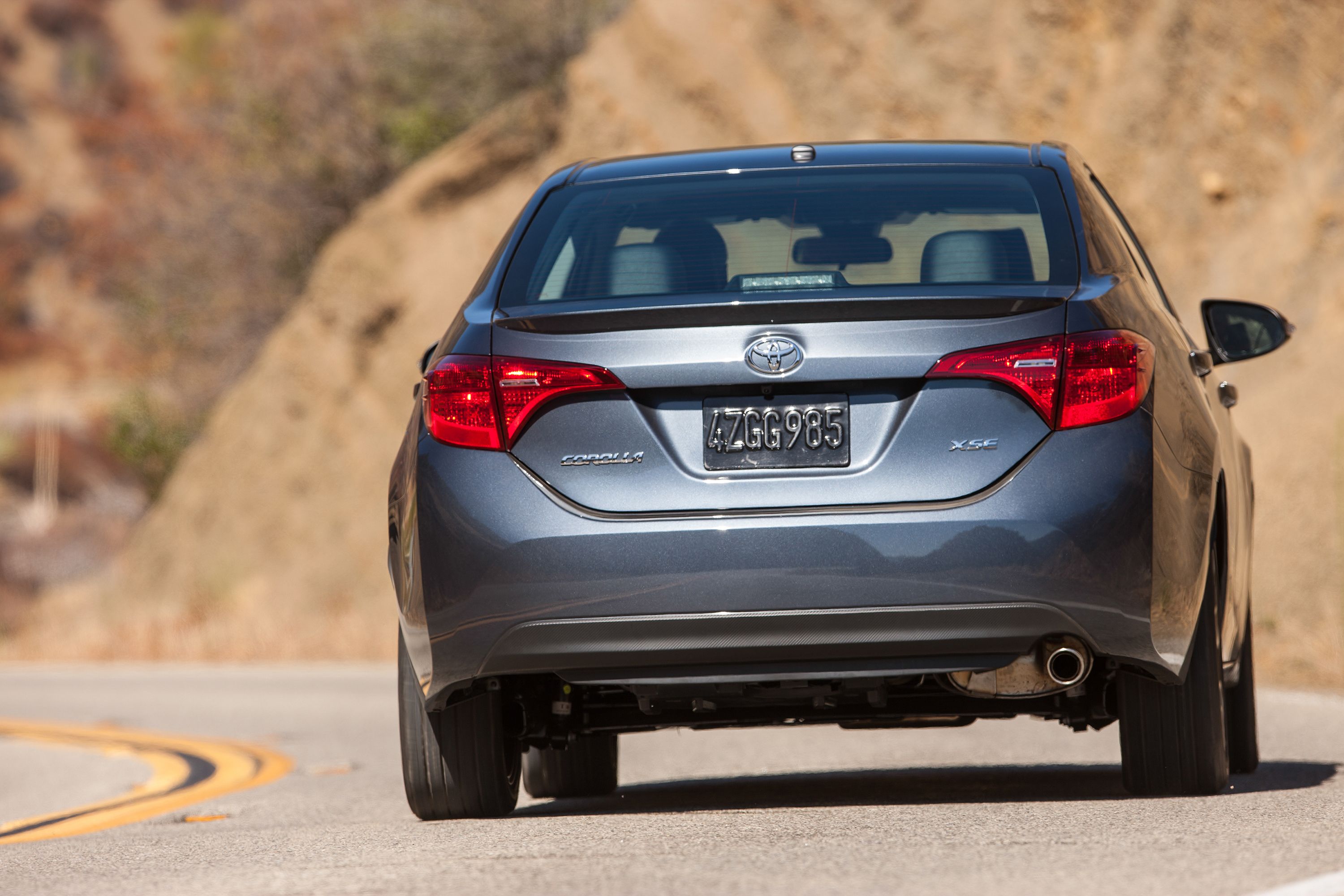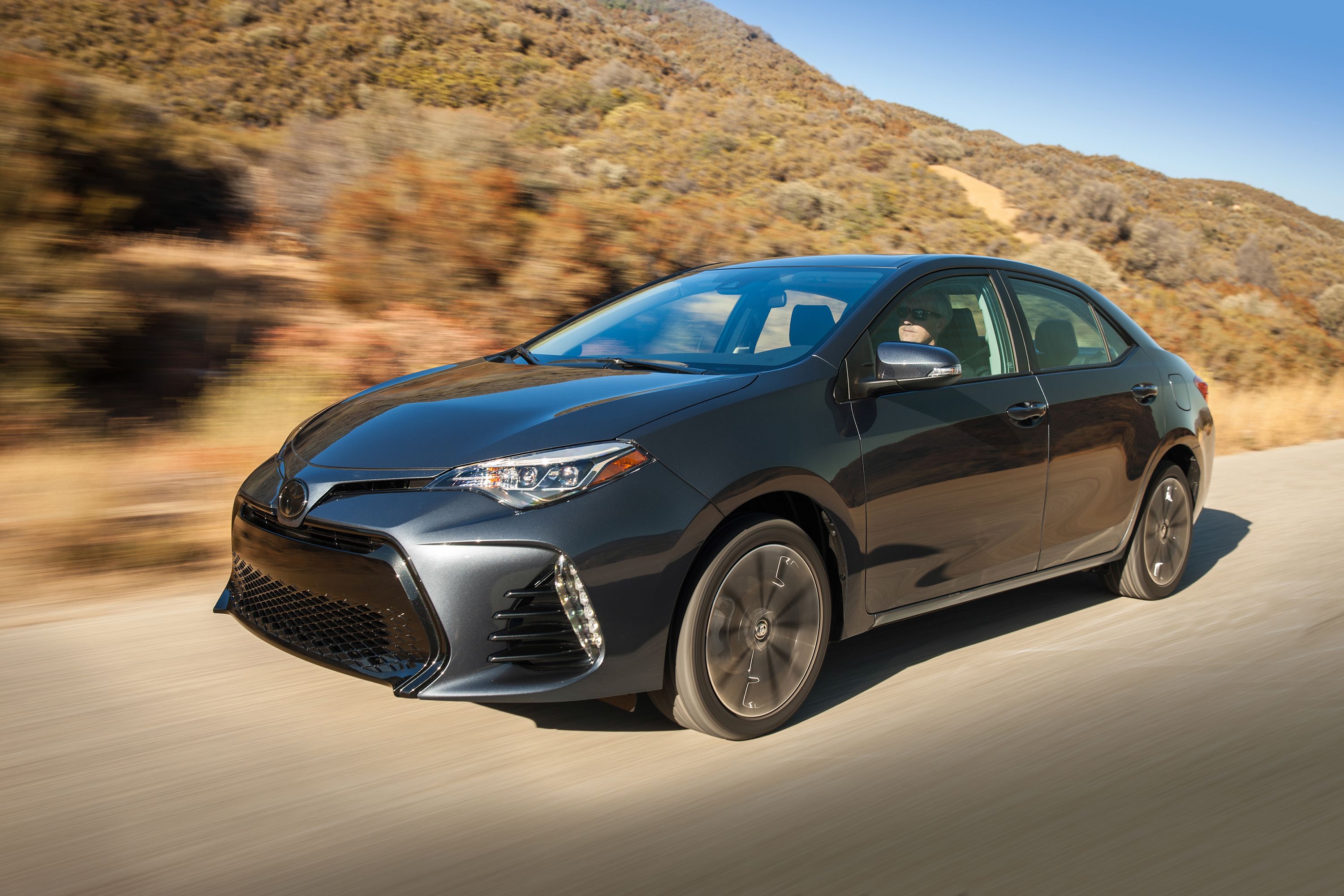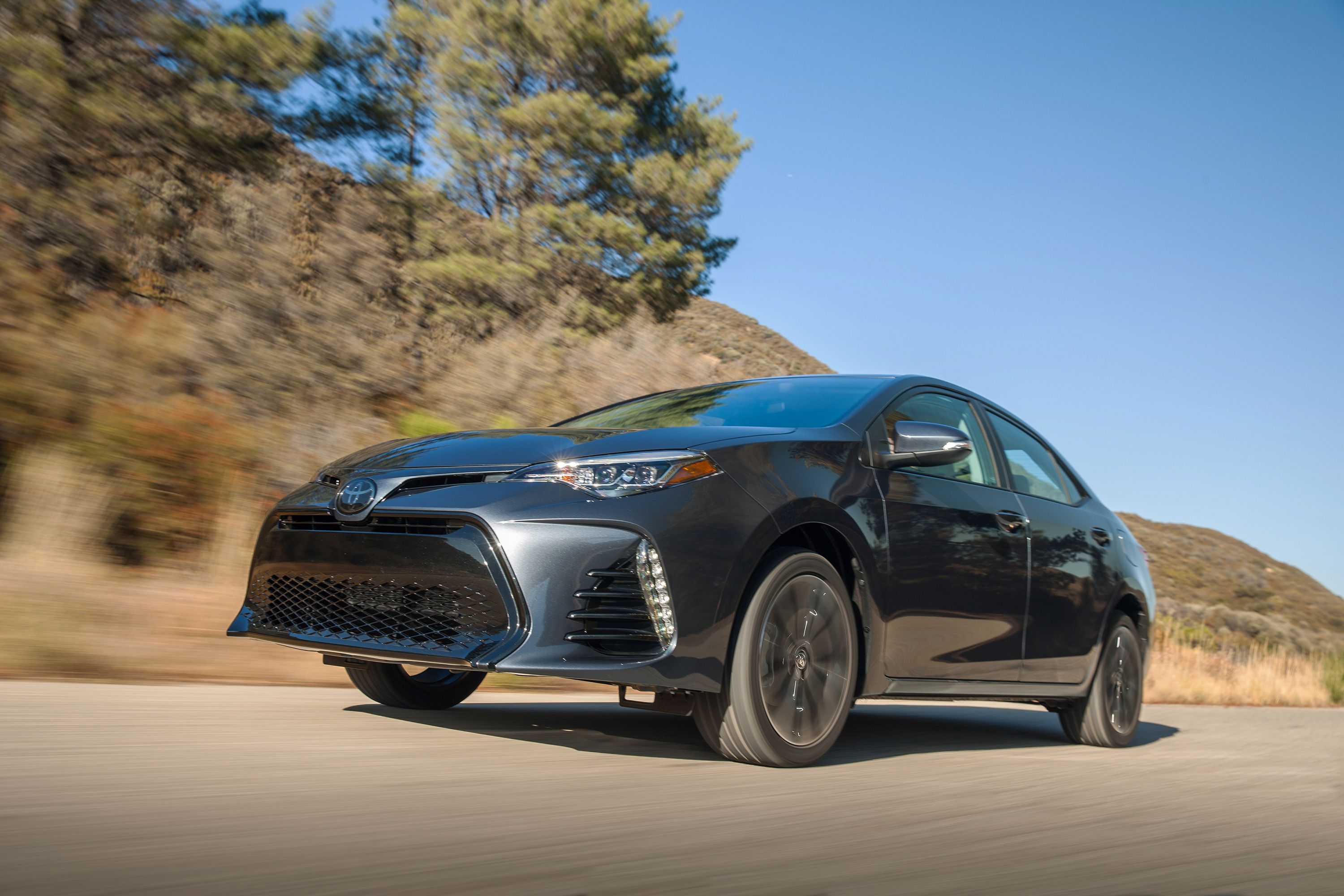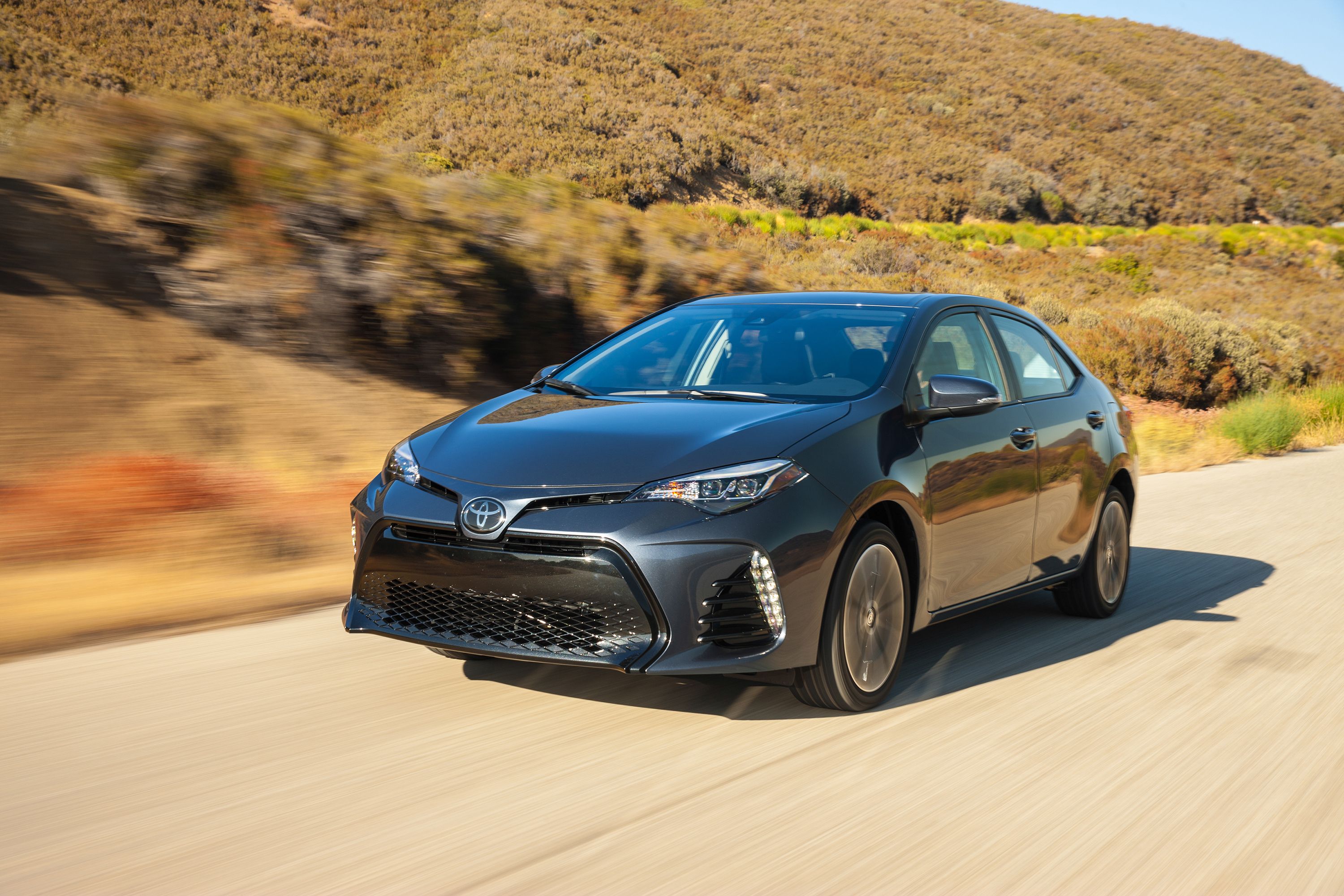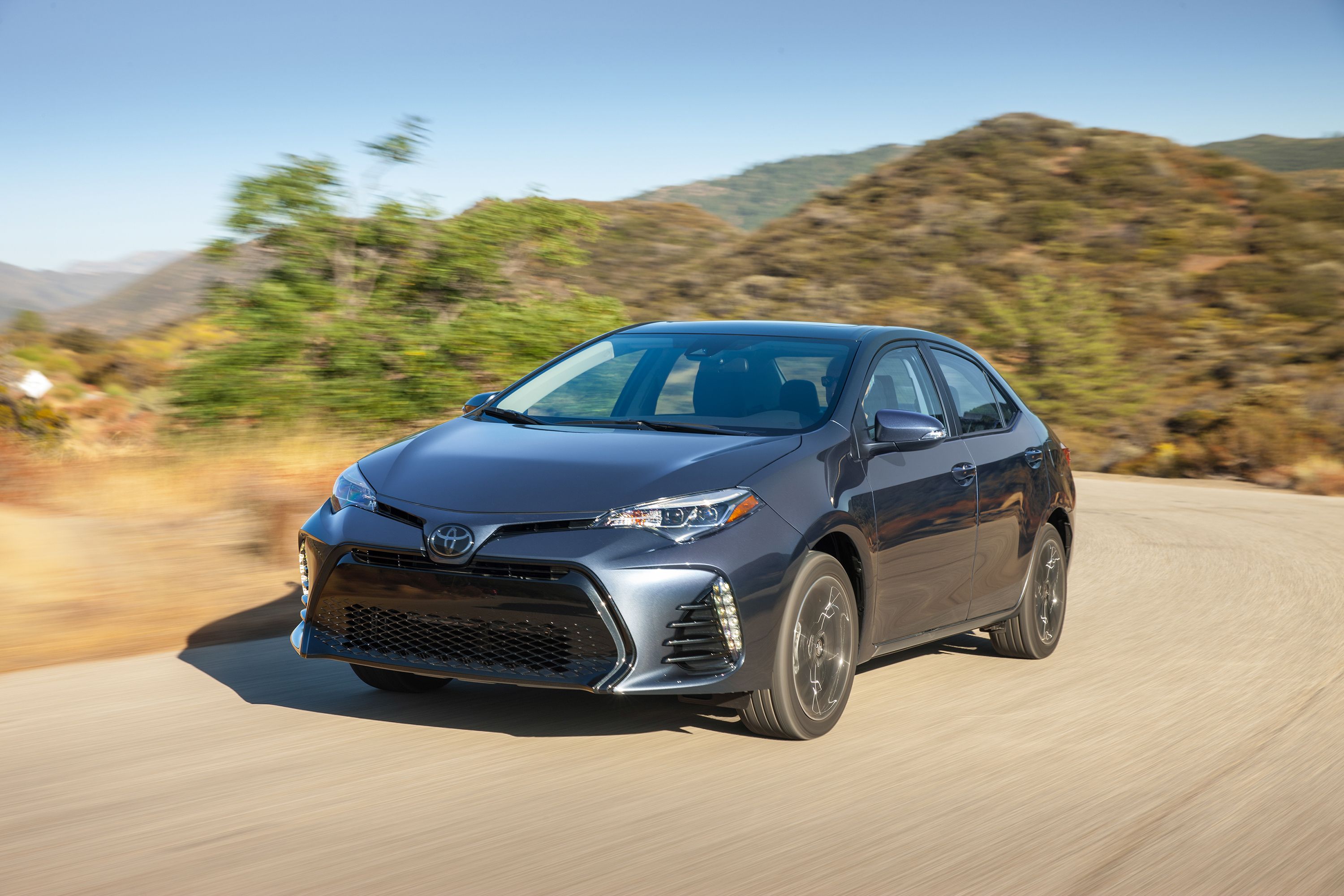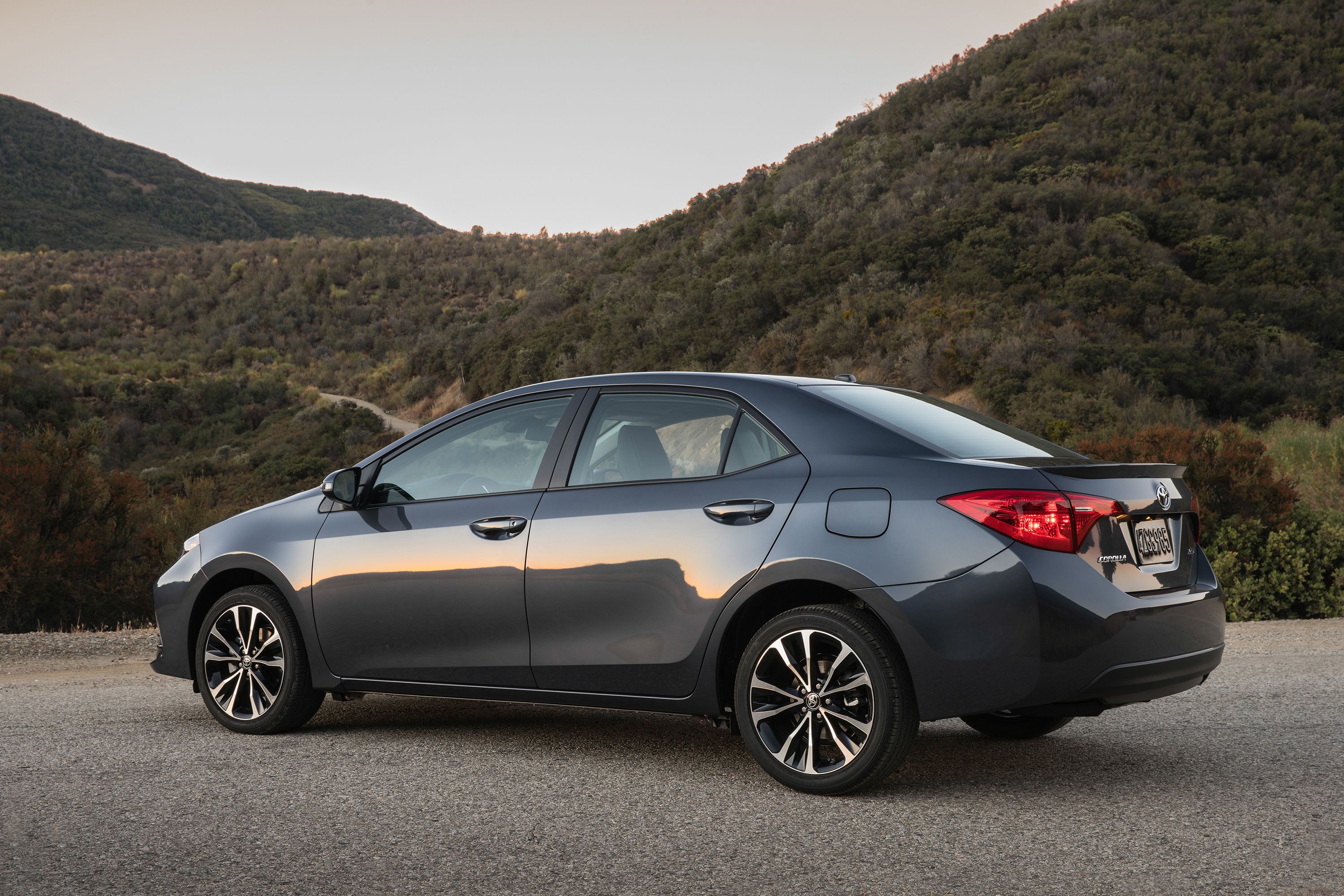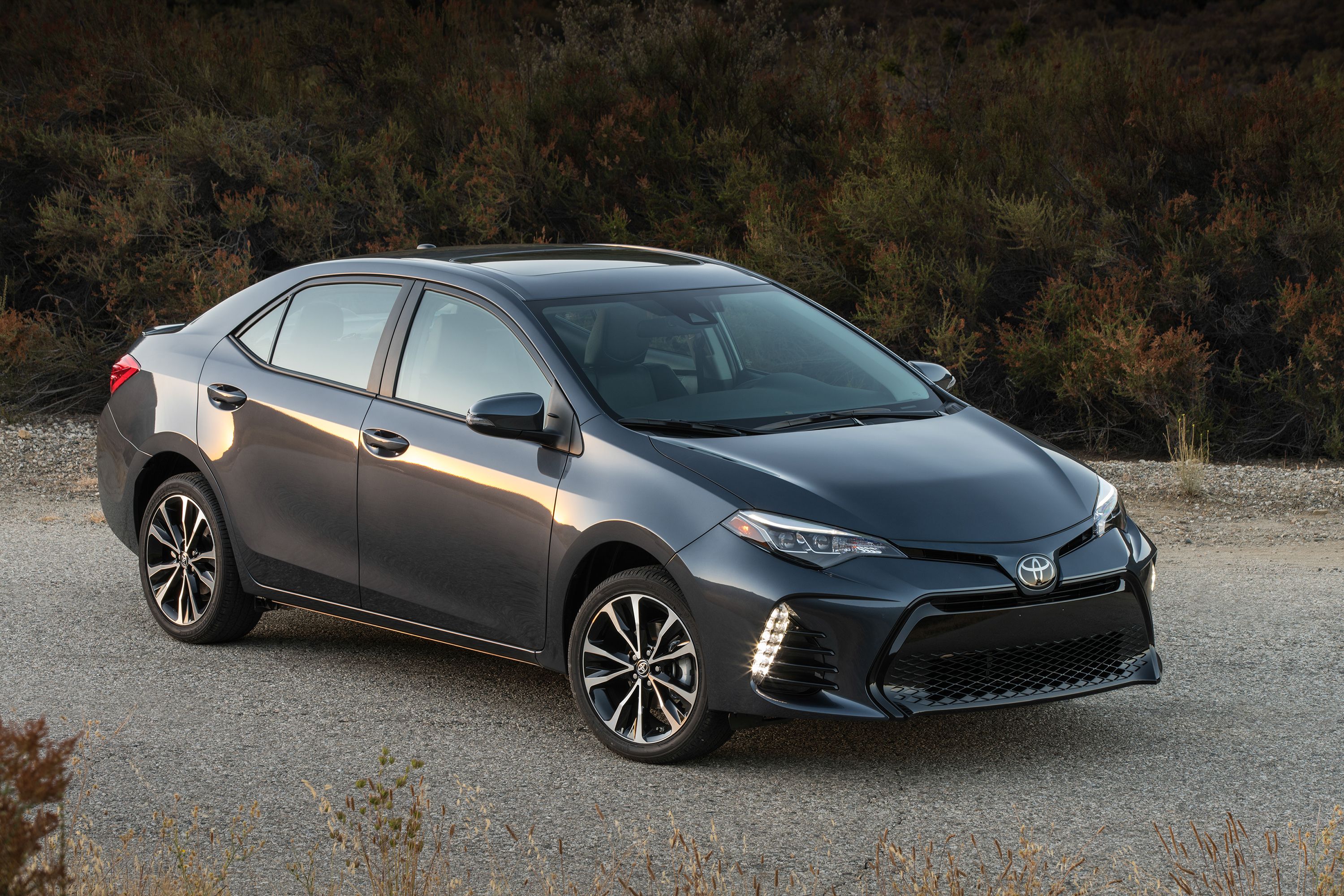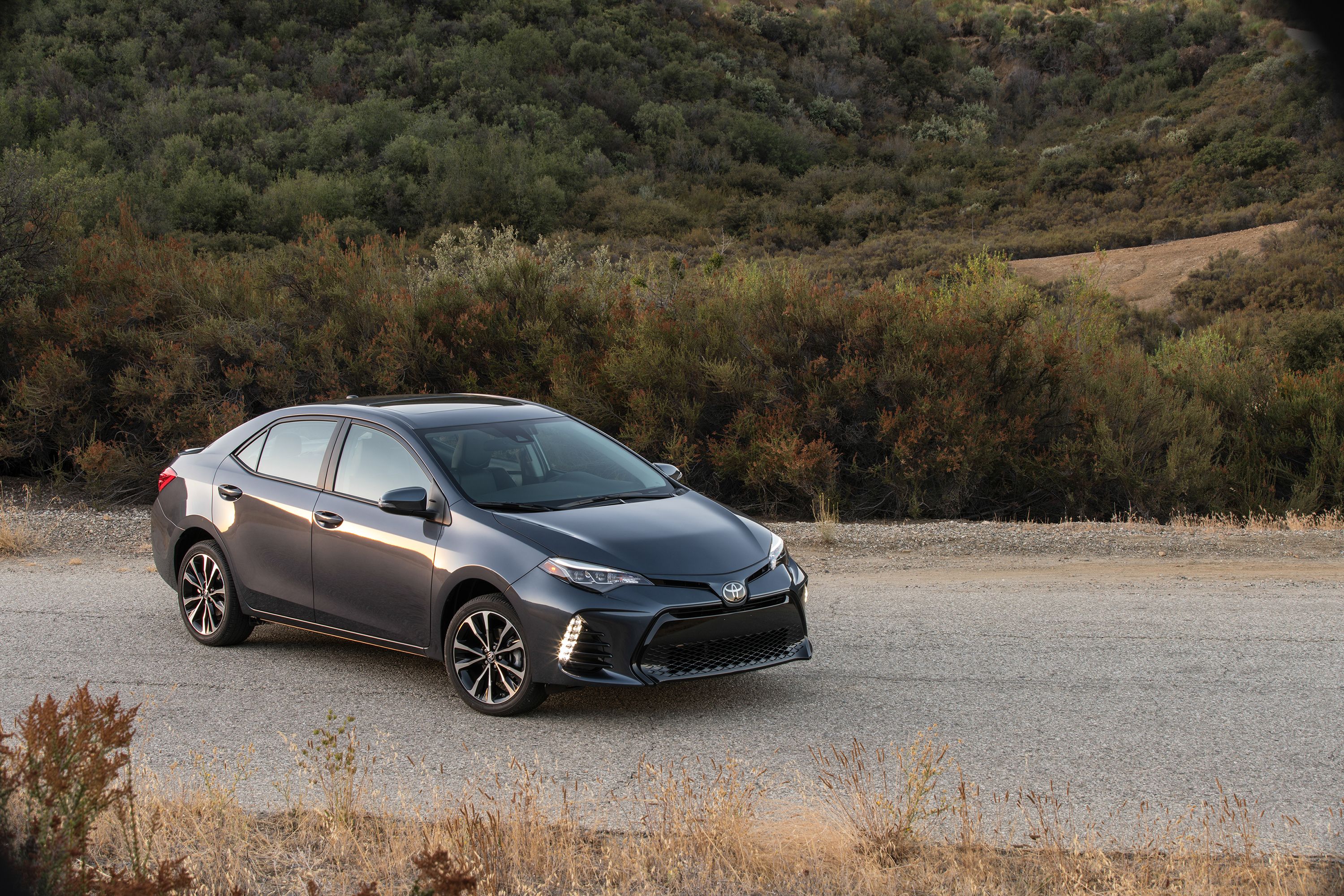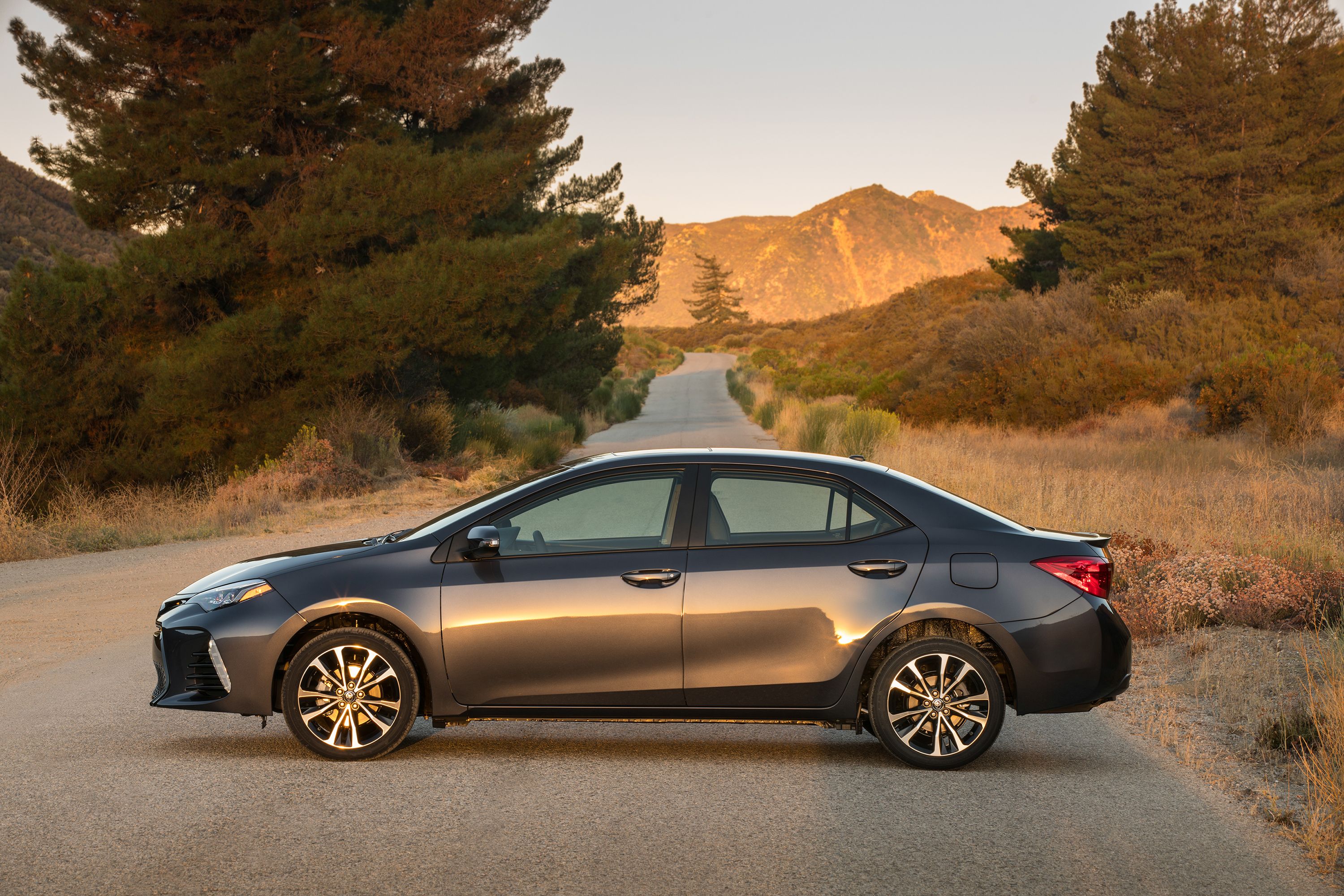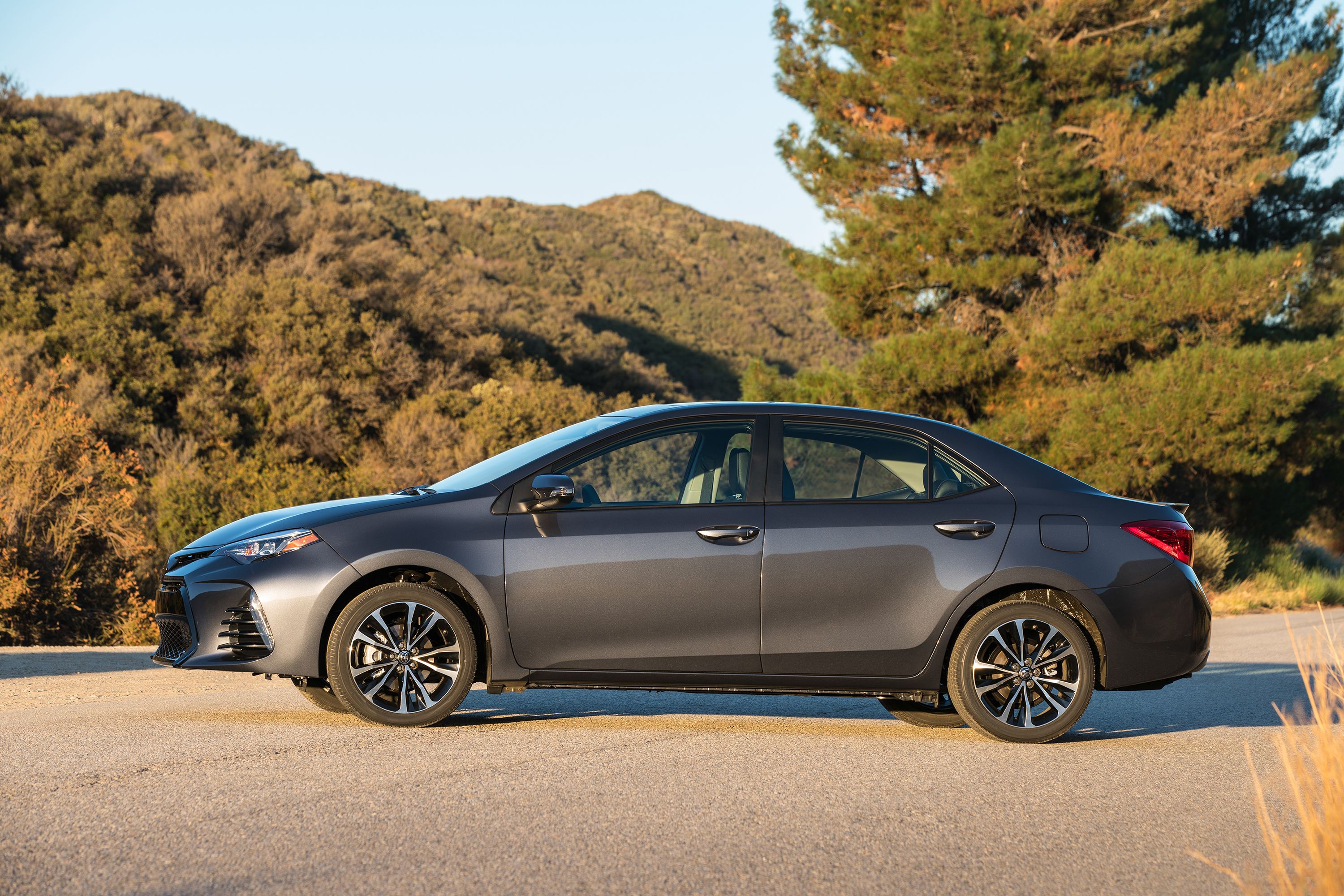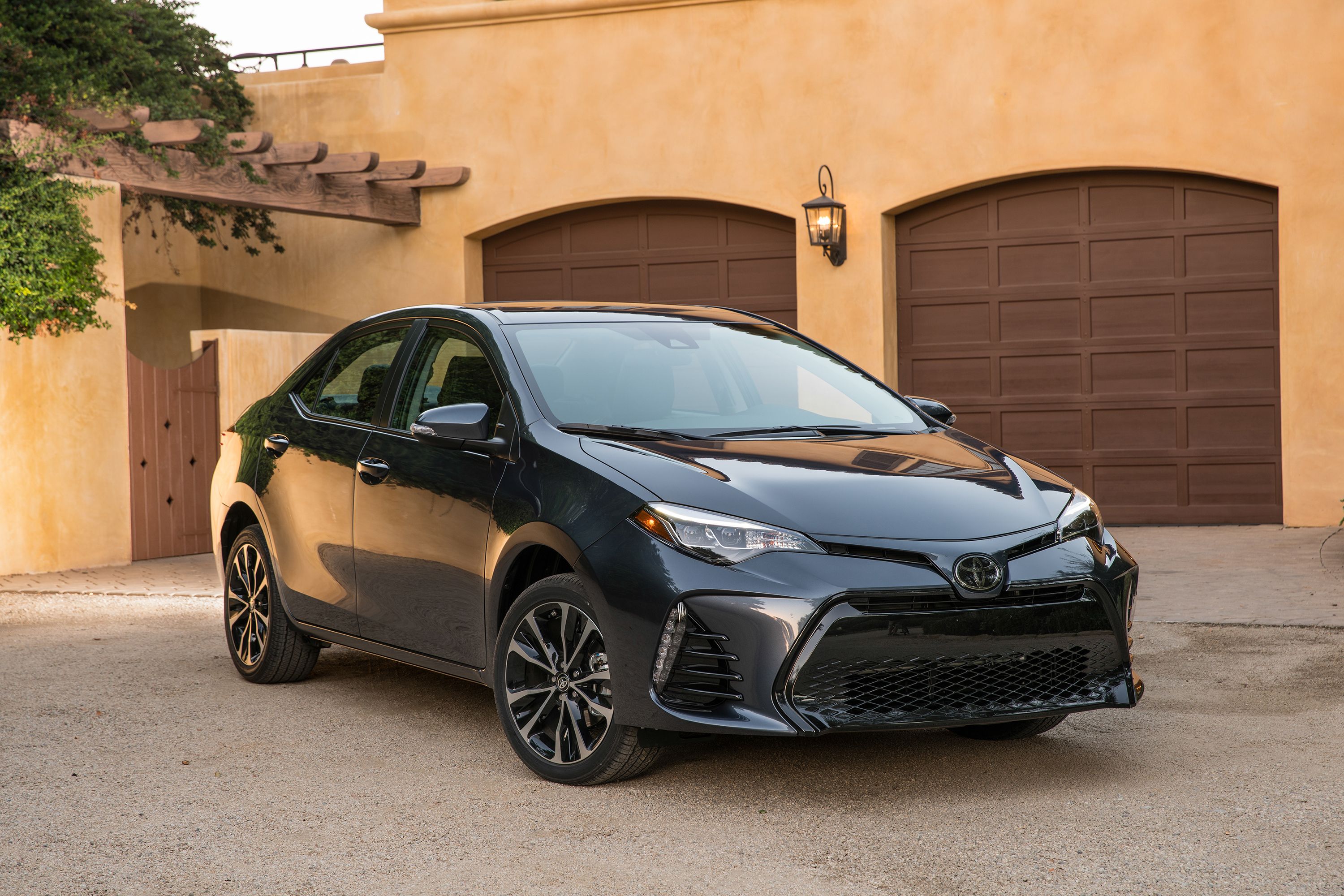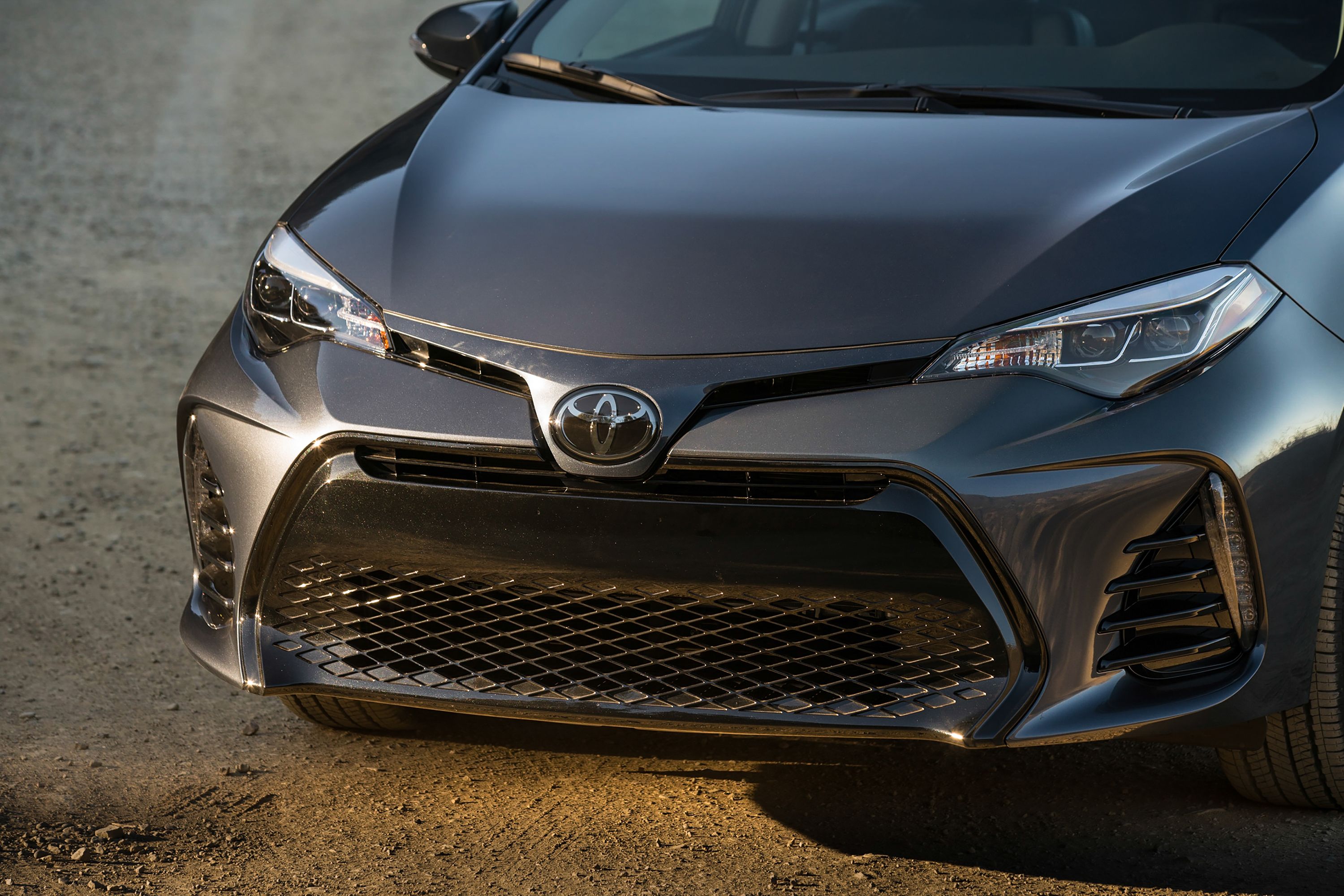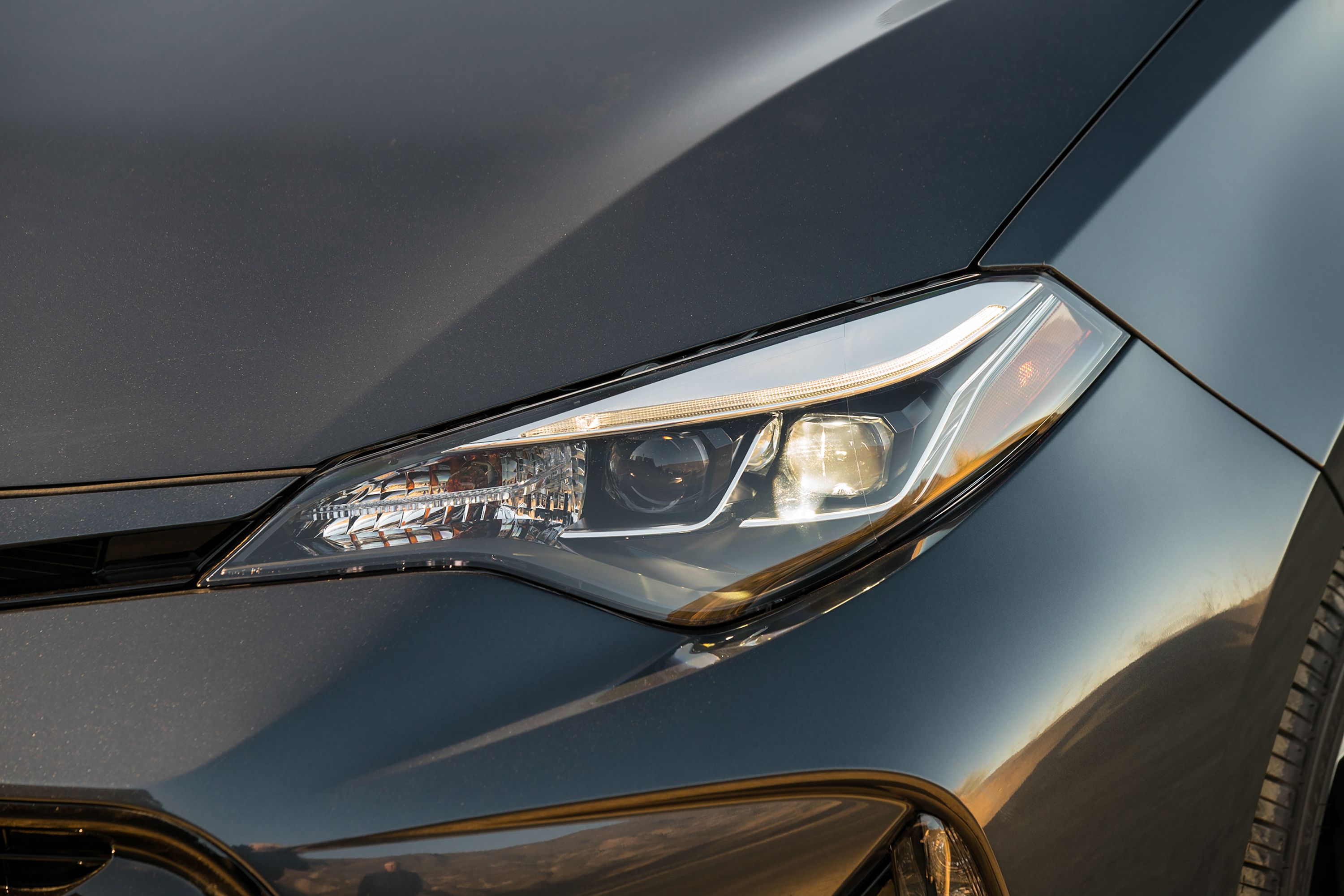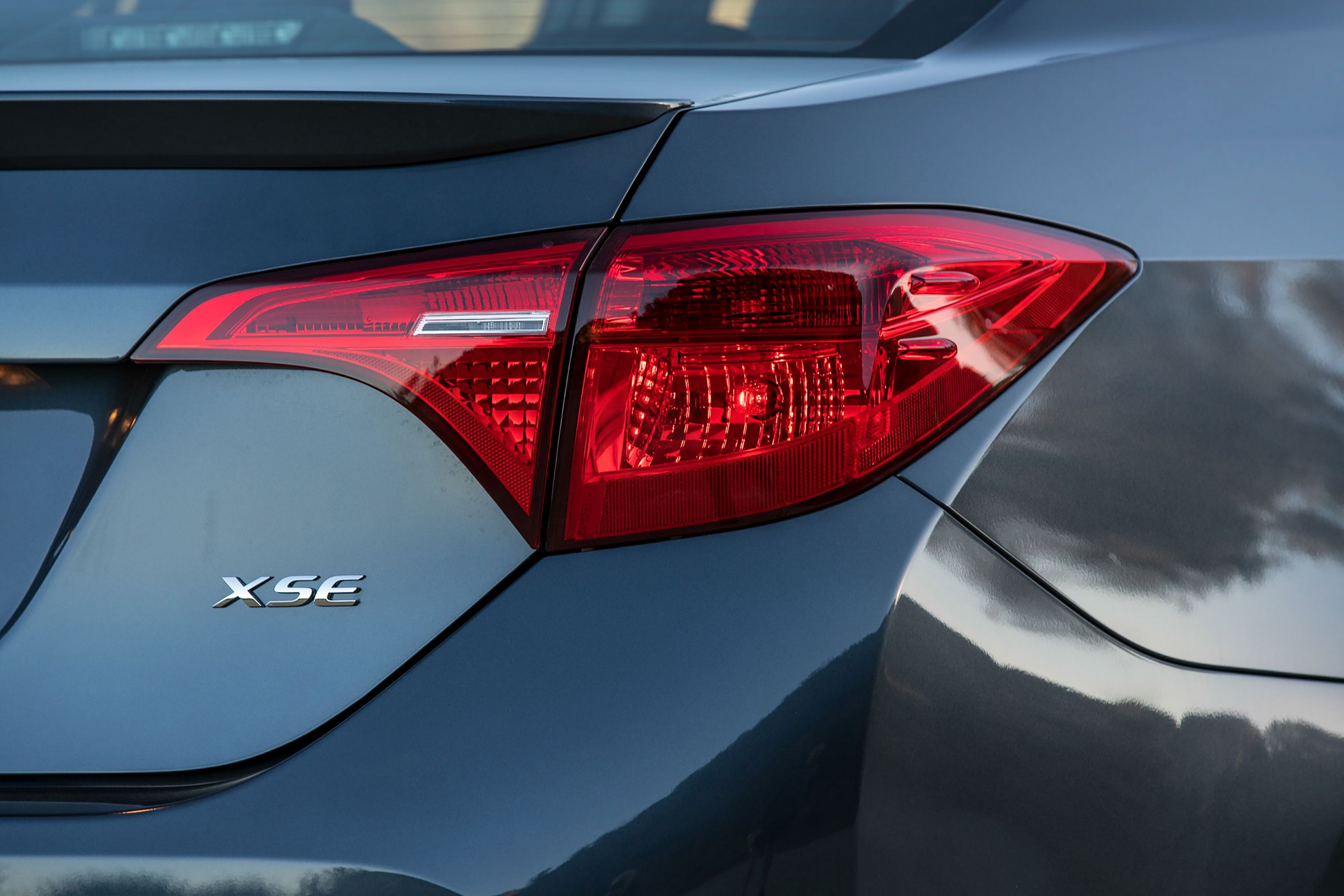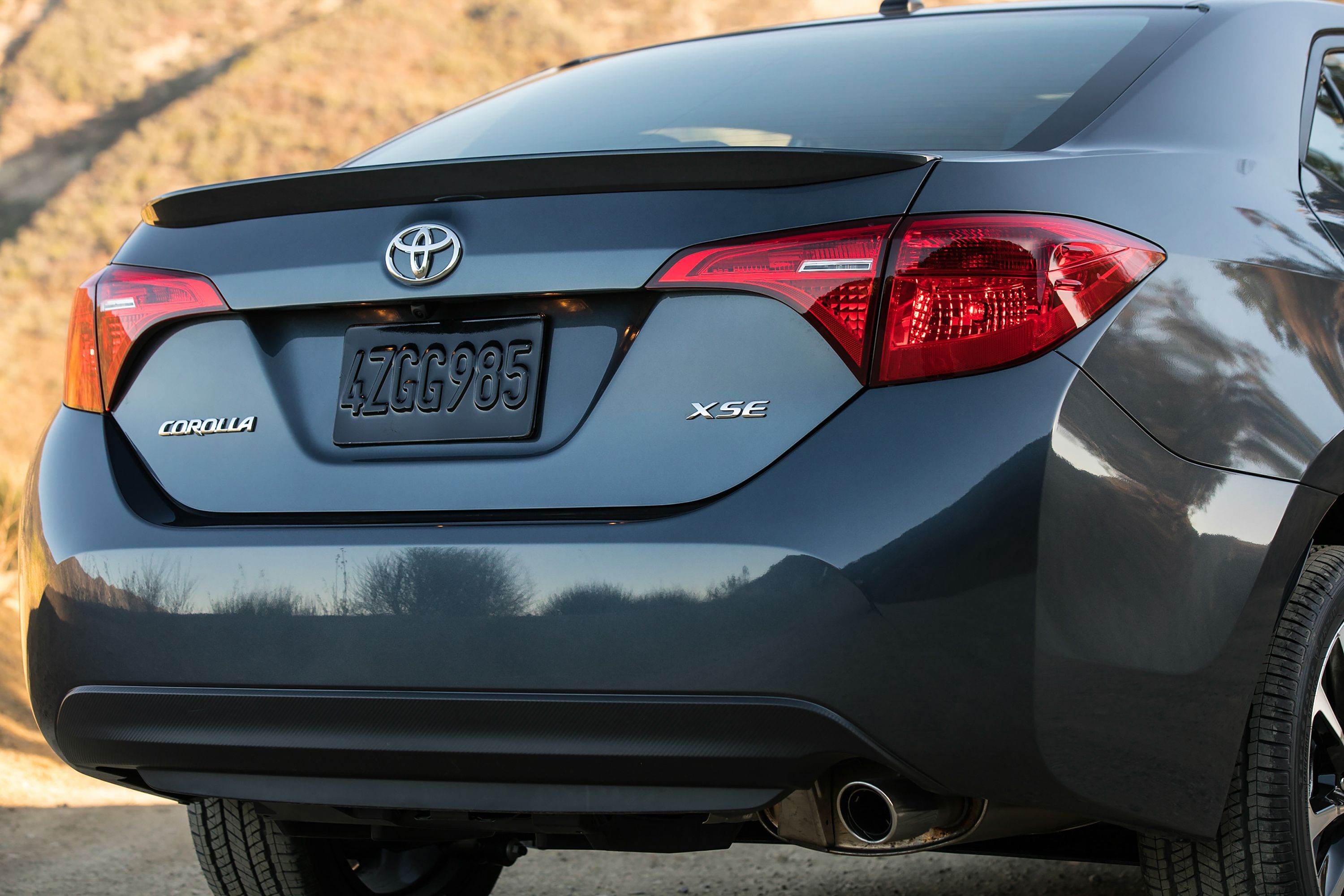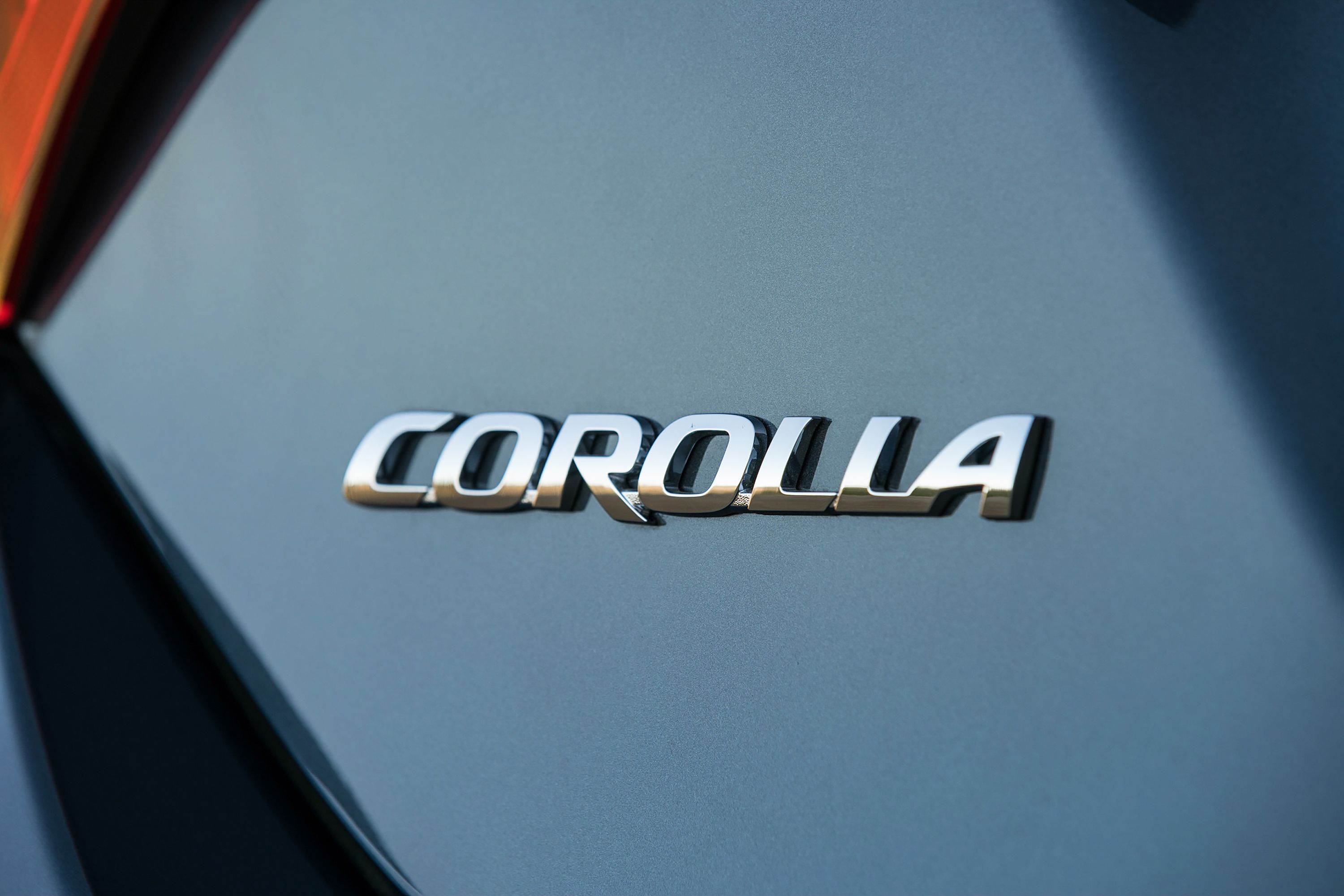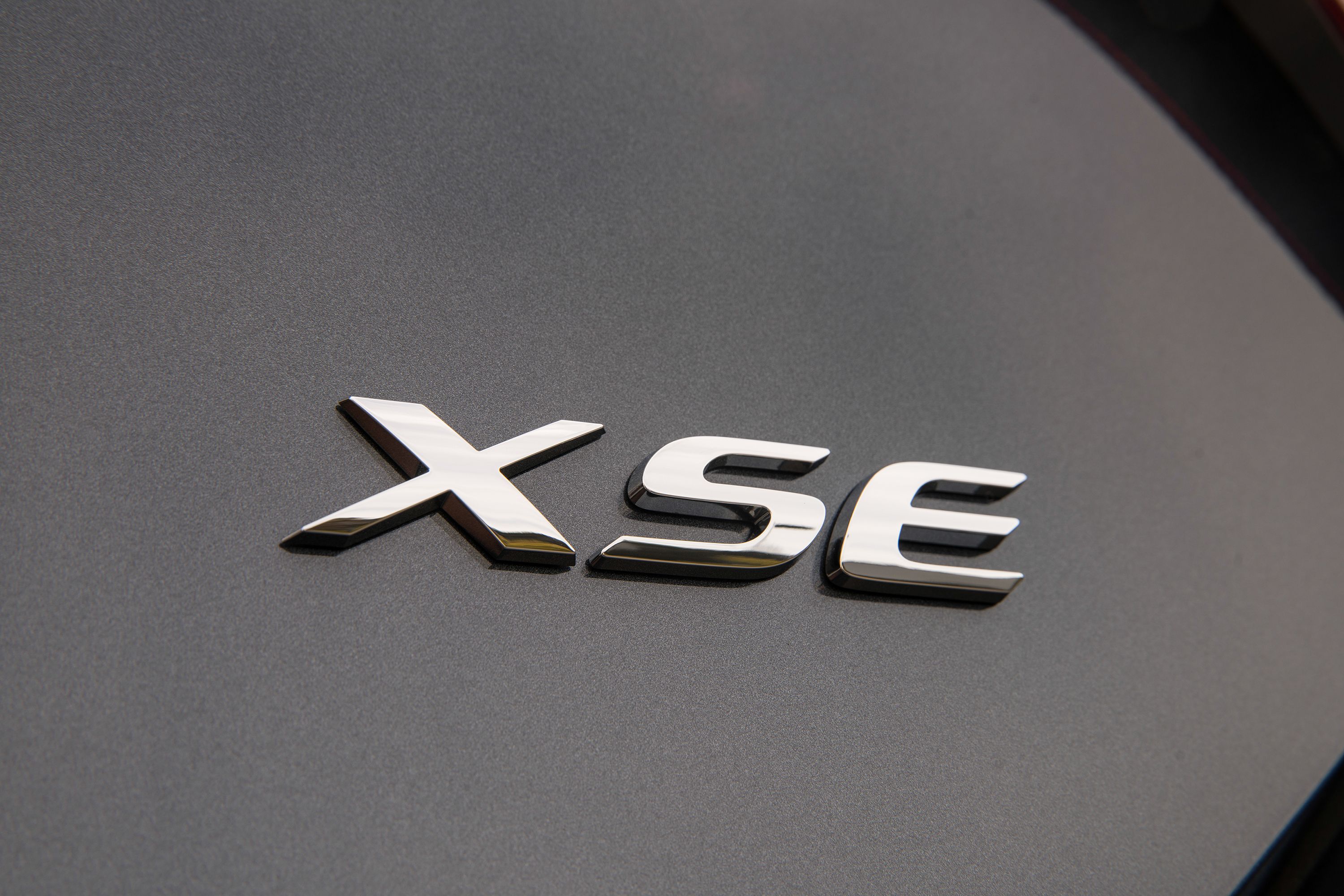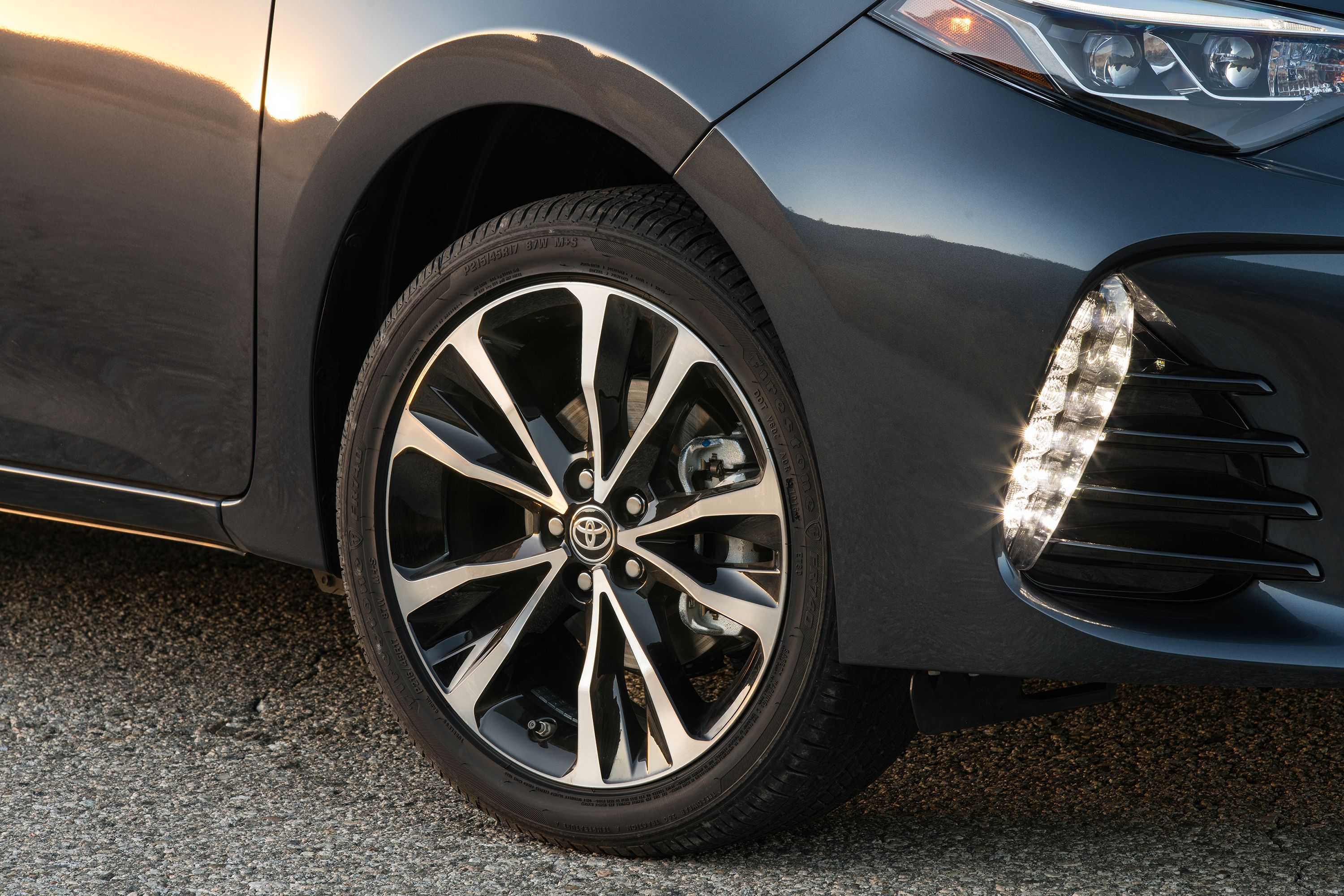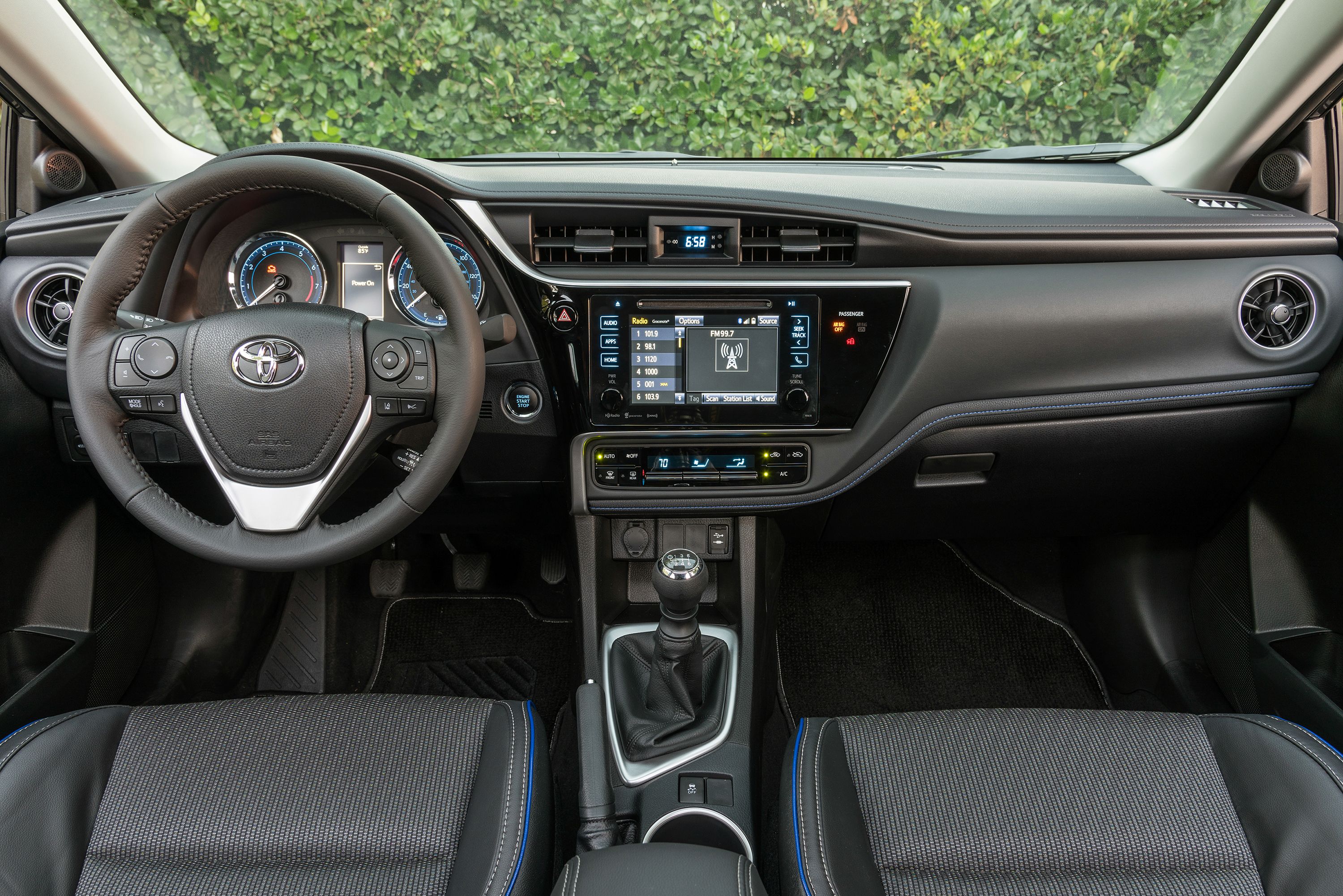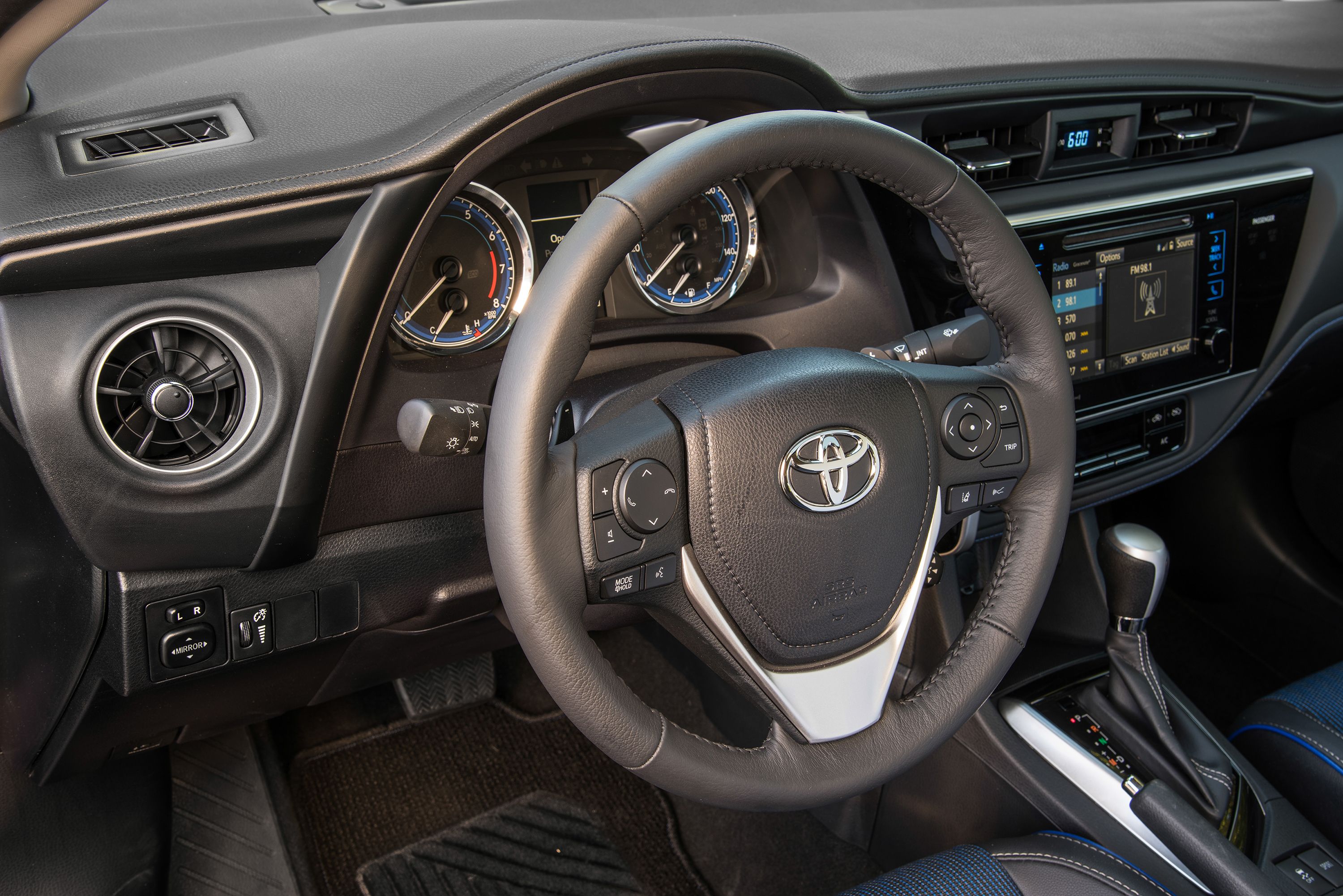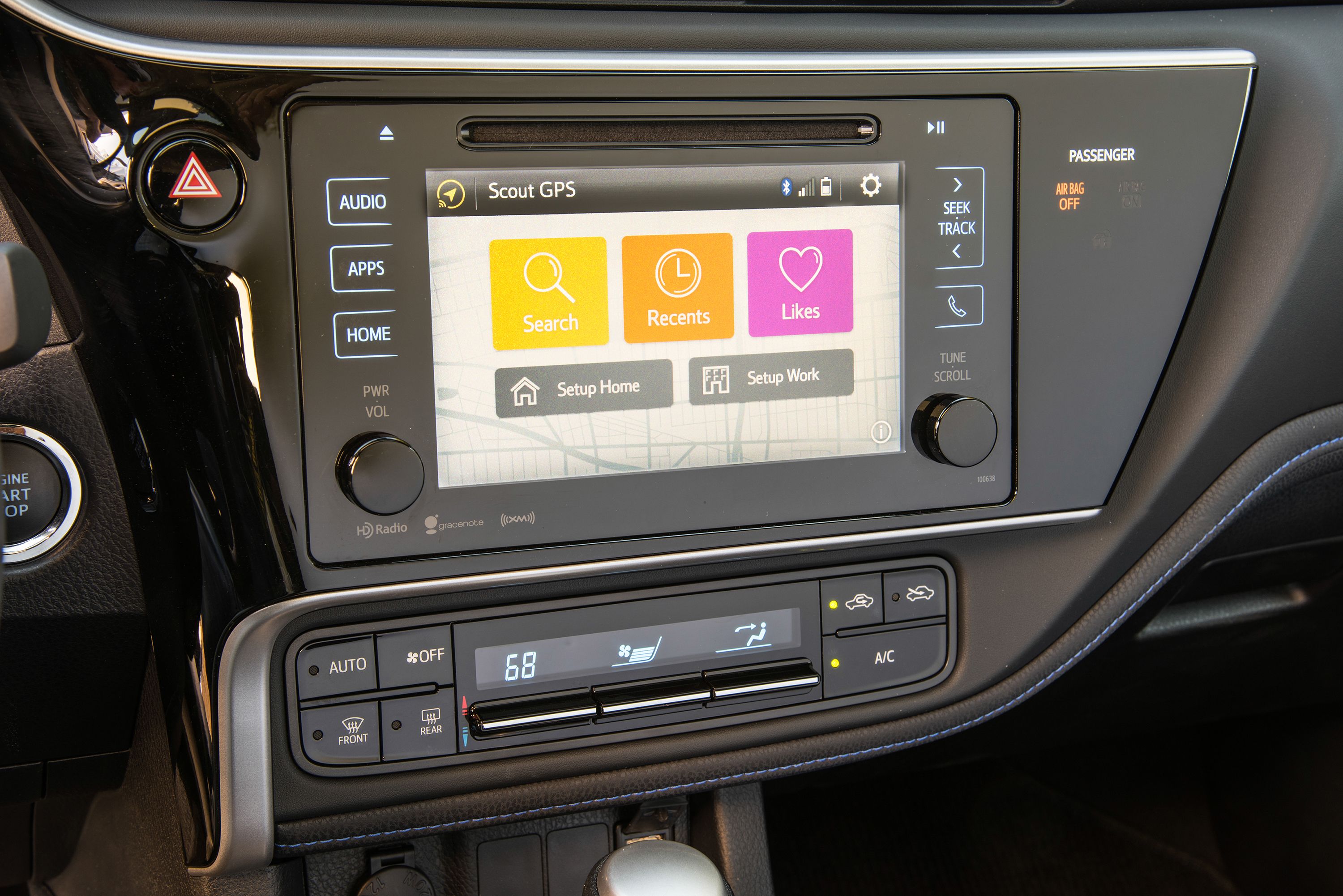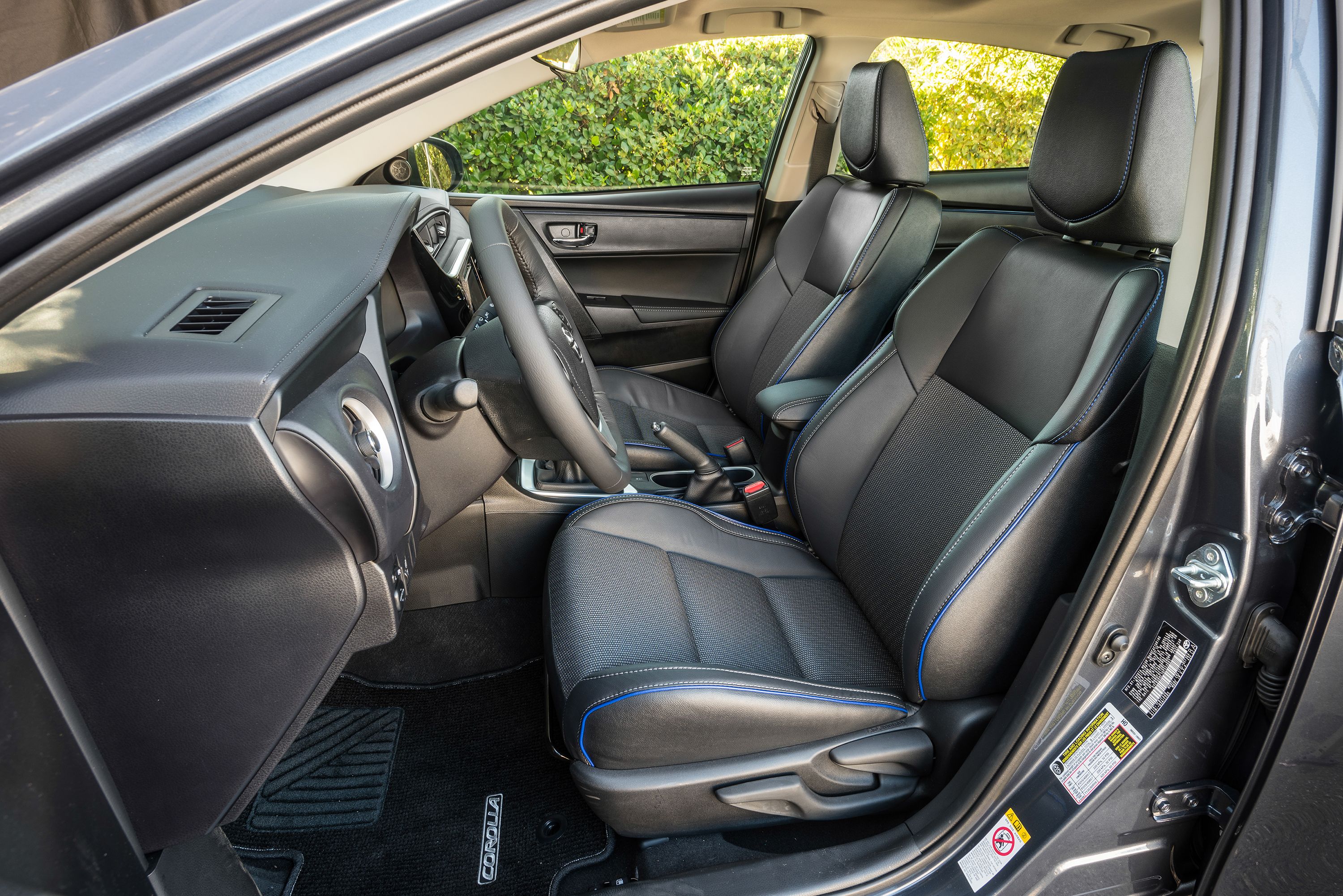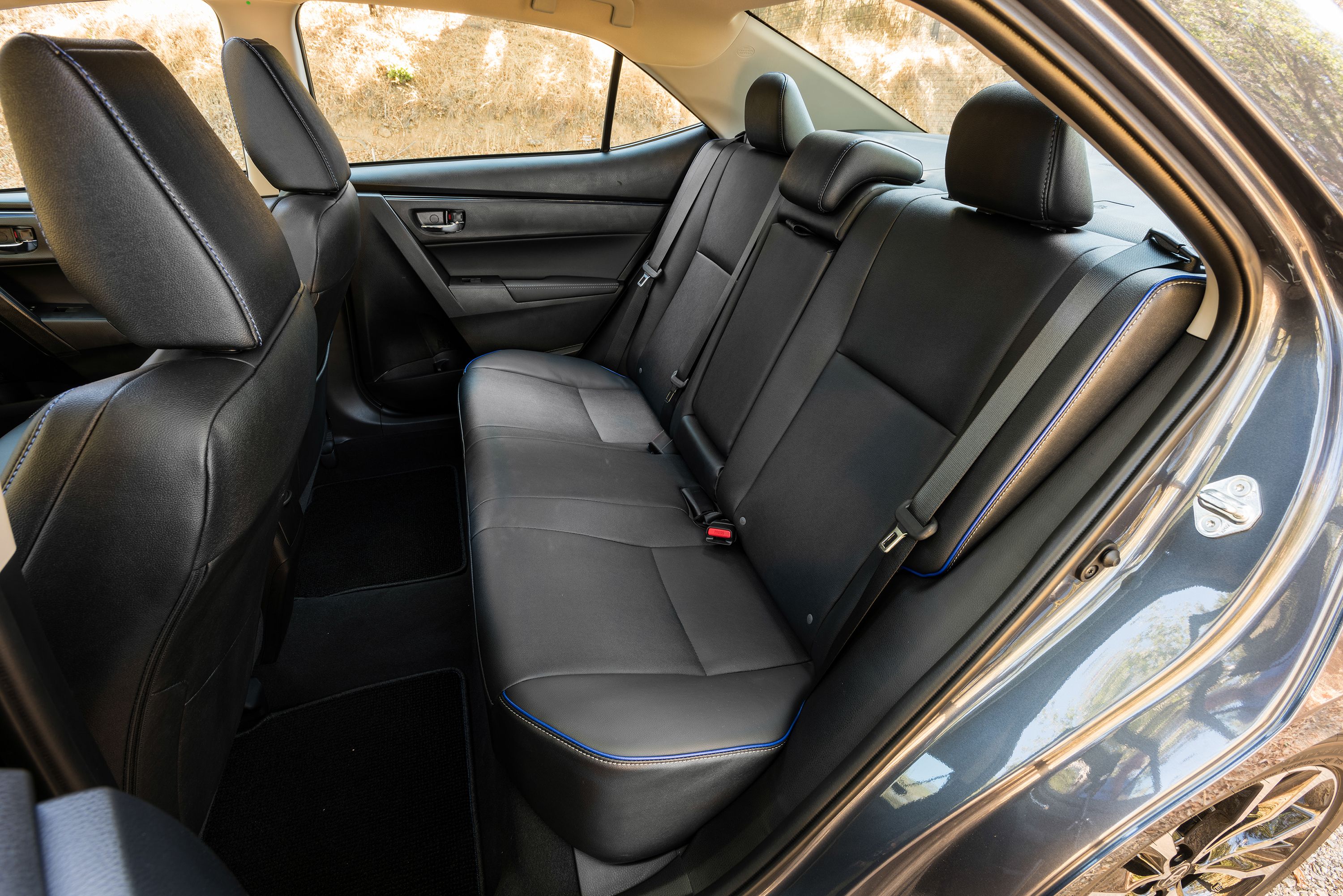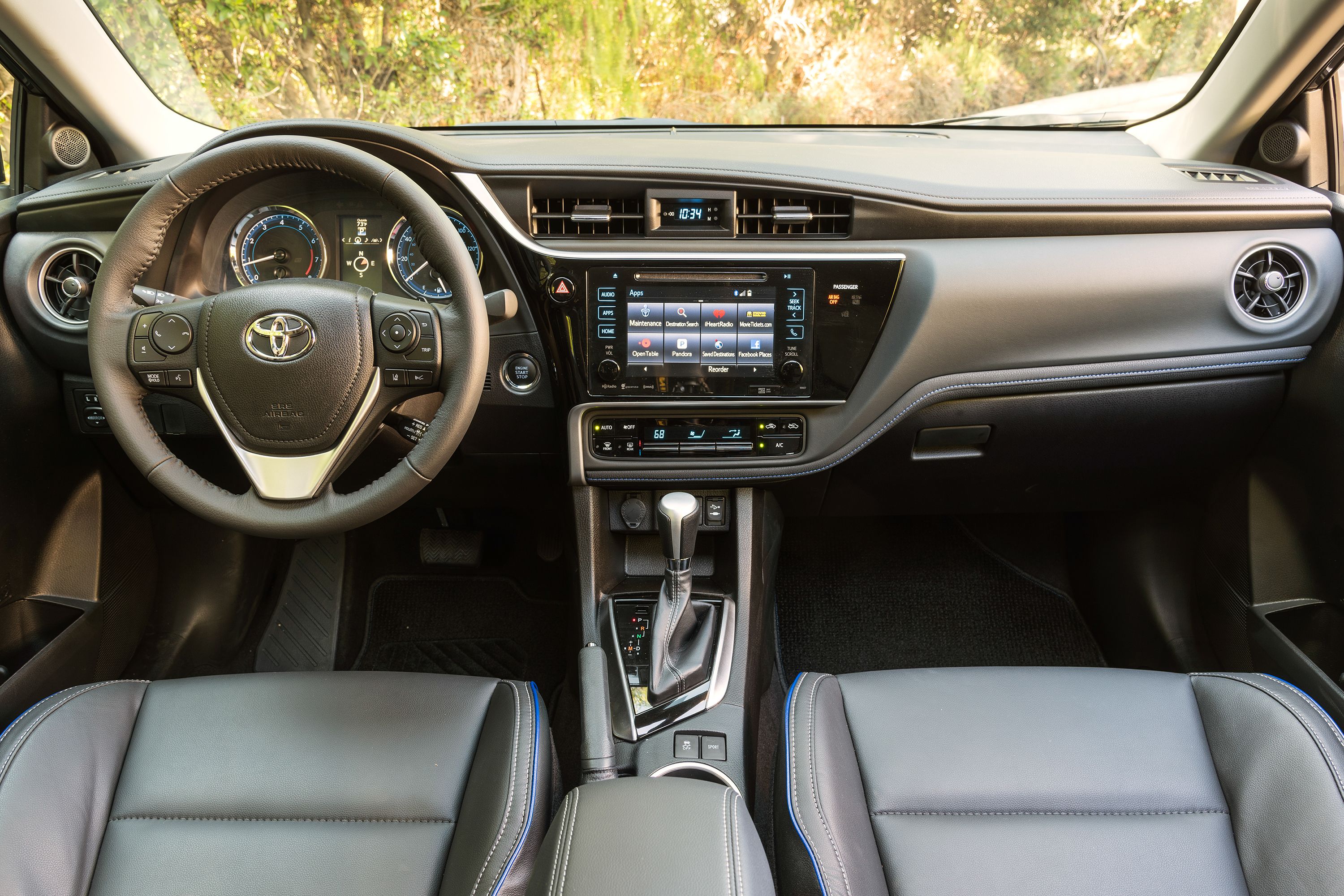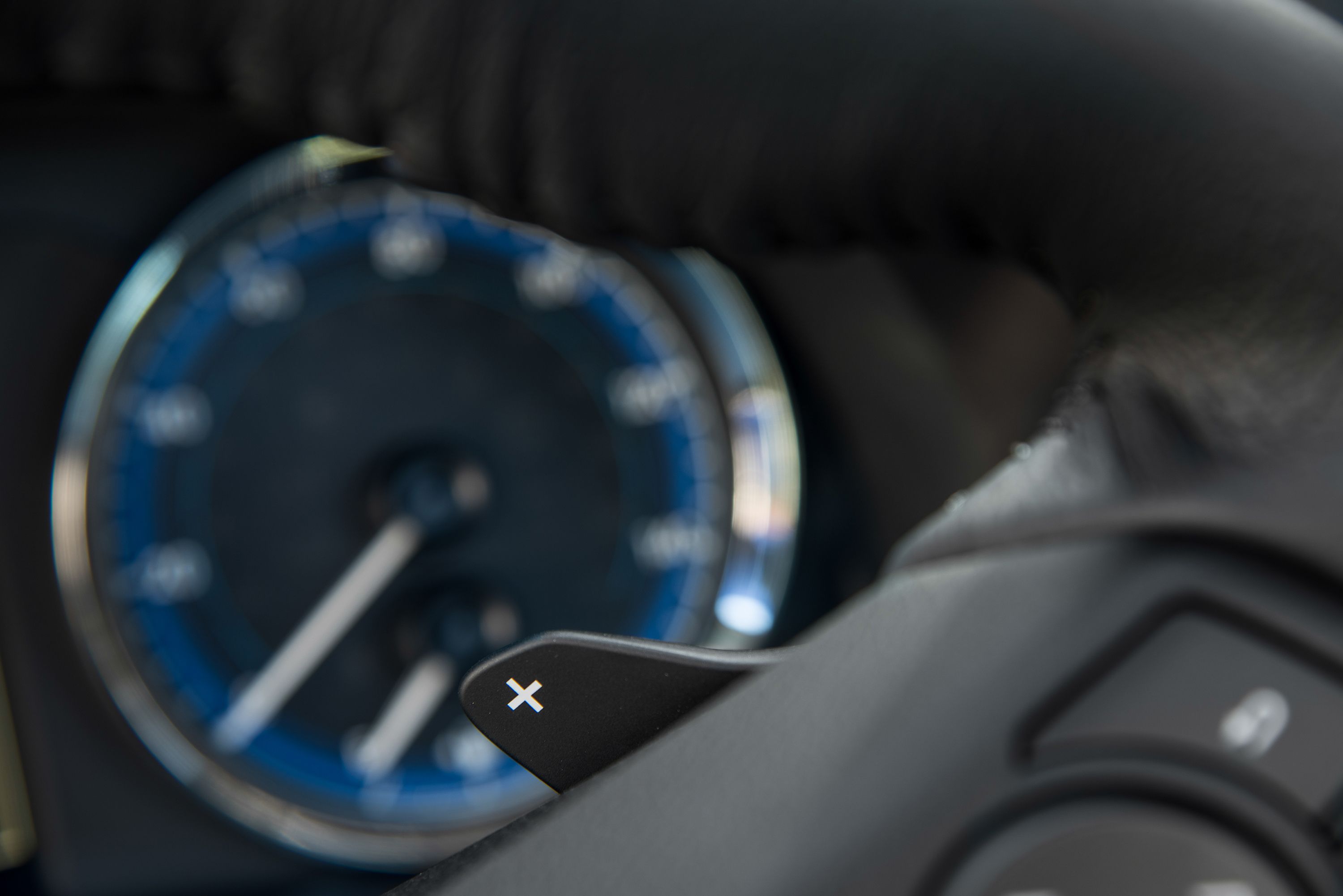Now well into its fiftieth year of production, you’d think Toyota has had more than enough time to perfect the Corolla. Indeed, the buying public certainly seems to think the Japanese automaker is doing something right, with over 43 million units sold and eleven generations produced since the model was first introduced in the fall of 1966. In fact, the Corolla is the best-selling nameplate in automotive history, which you might think is reason enough to celebrate with something new and wild. Thing is, Toyota isn’t really looking to fix something that ain’t broke, which means 2017 brings slight tweaks to the Corolla’s exterior styling, new gear for the interior, and a limited-run 50th Anniversary Special Edition model. However, the biggest upgrade is in the safety department, where the Corolla now boasts a raft of upgraded technology as standard across the line.
I recently got a chance to drive the 2017 Corolla in Ojai, California, and I walked away feeling content, but uninspired. You see, the Corolla is a very solid little compact sedan. It does everything it’s supposed to do – it’s comfortable, well equipped, and with a huge range of trim levels on offer, affordably priced for pretty much any budget. But it’s quite telling when the biggest news is nestled away in the safety section of a review…
Continue reading to learn more about the 2017 Toyota Corolla.
2017 Toyota Corolla – Driving Impression And Review
- Make: Array
- Model: 2017 Toyota Corolla – Driving Impression And Review
- [do not use] Vehicle Model: Array
Exterior
As far as aesthetics are concerned, the new Corolla received a nice little facelift, with the biggest updates found in front. The headlights were reshaped, and received LED lighting elements as standard across the range. The grille was also updated, and now incorporates pointed creases along the lower edge of the bumper. The corner lights were restyled with horizontal slats, while the strip across the nose that connects the headlights was plumped out slightly.
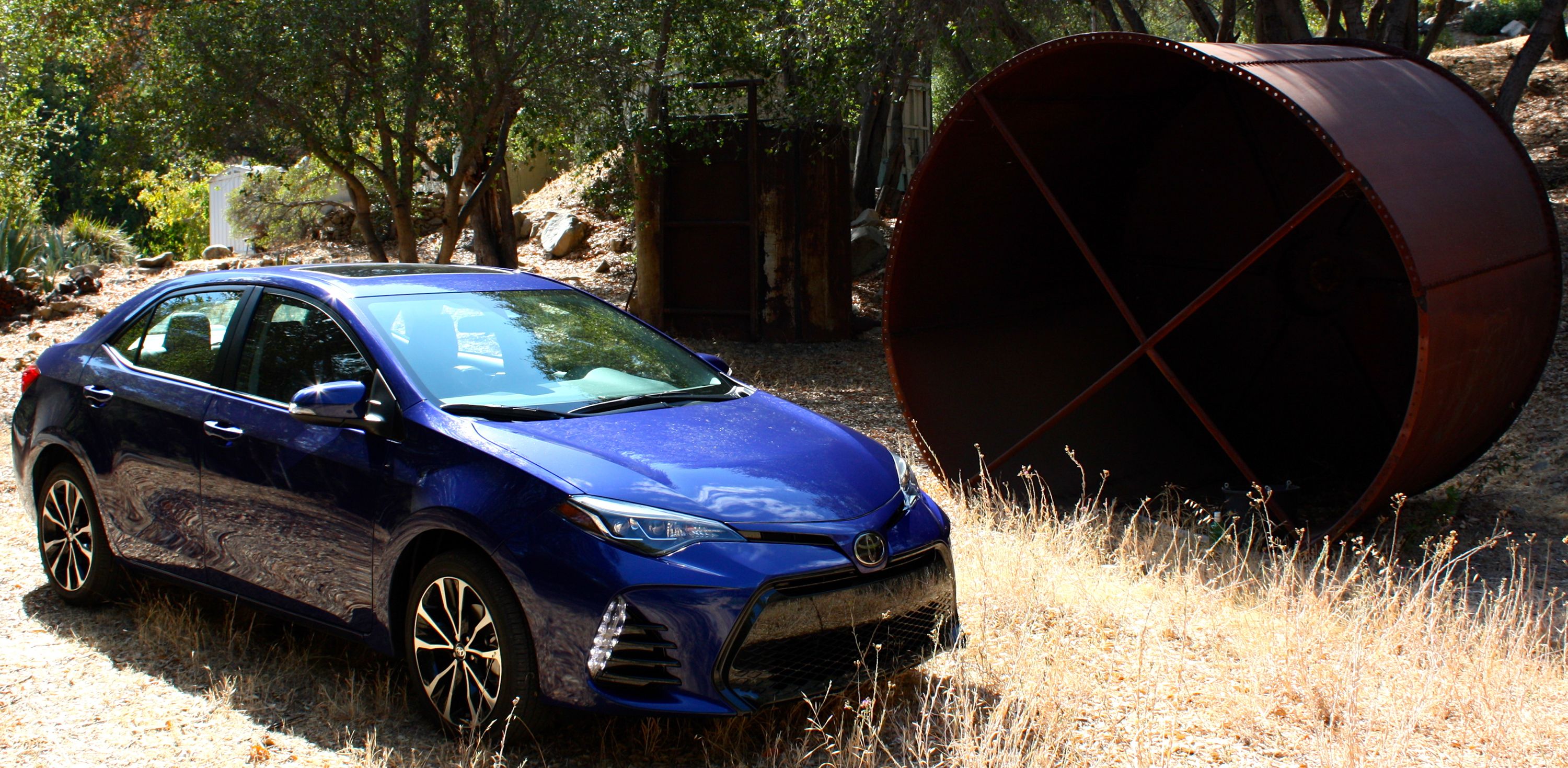
|
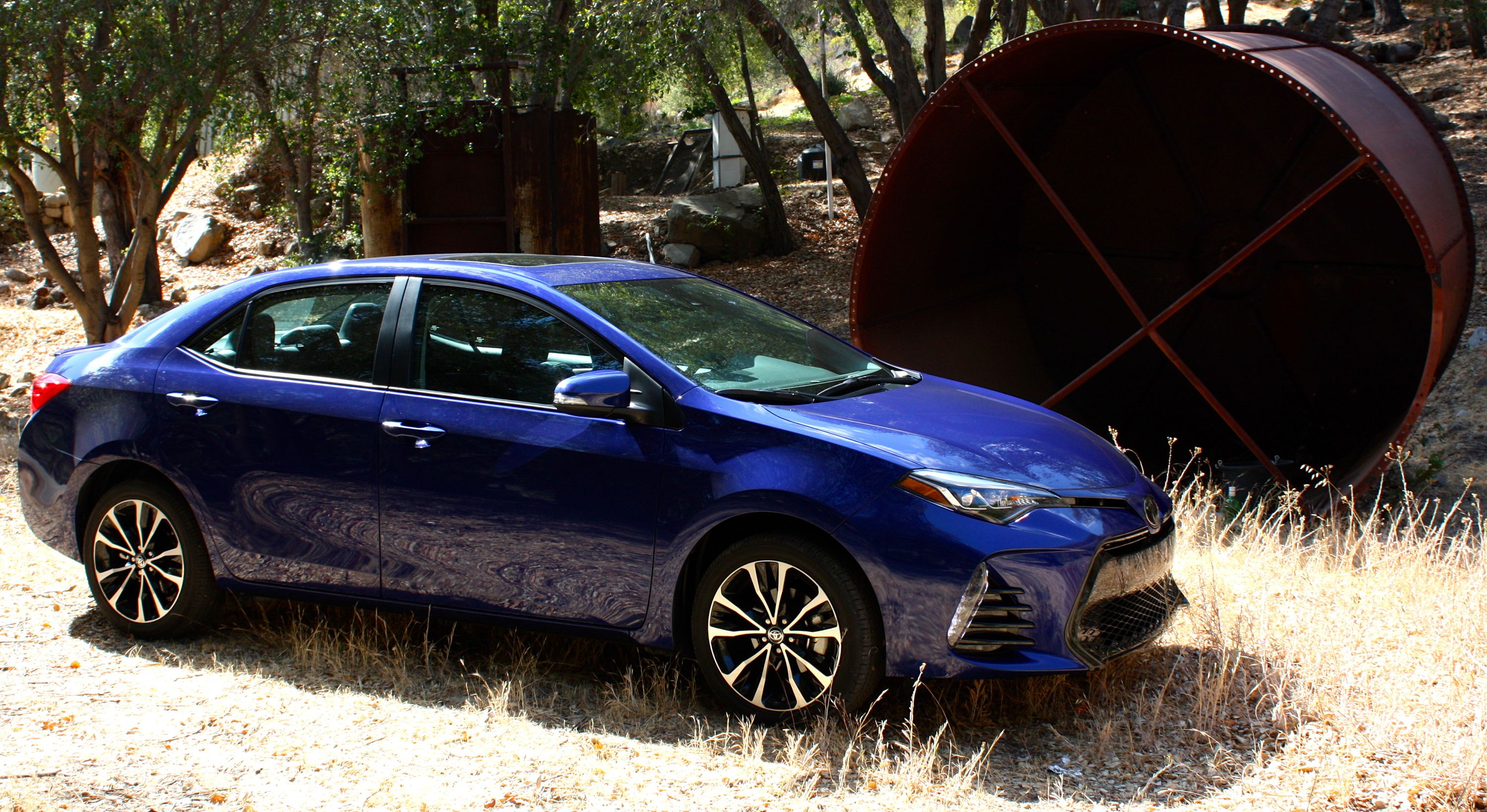
|
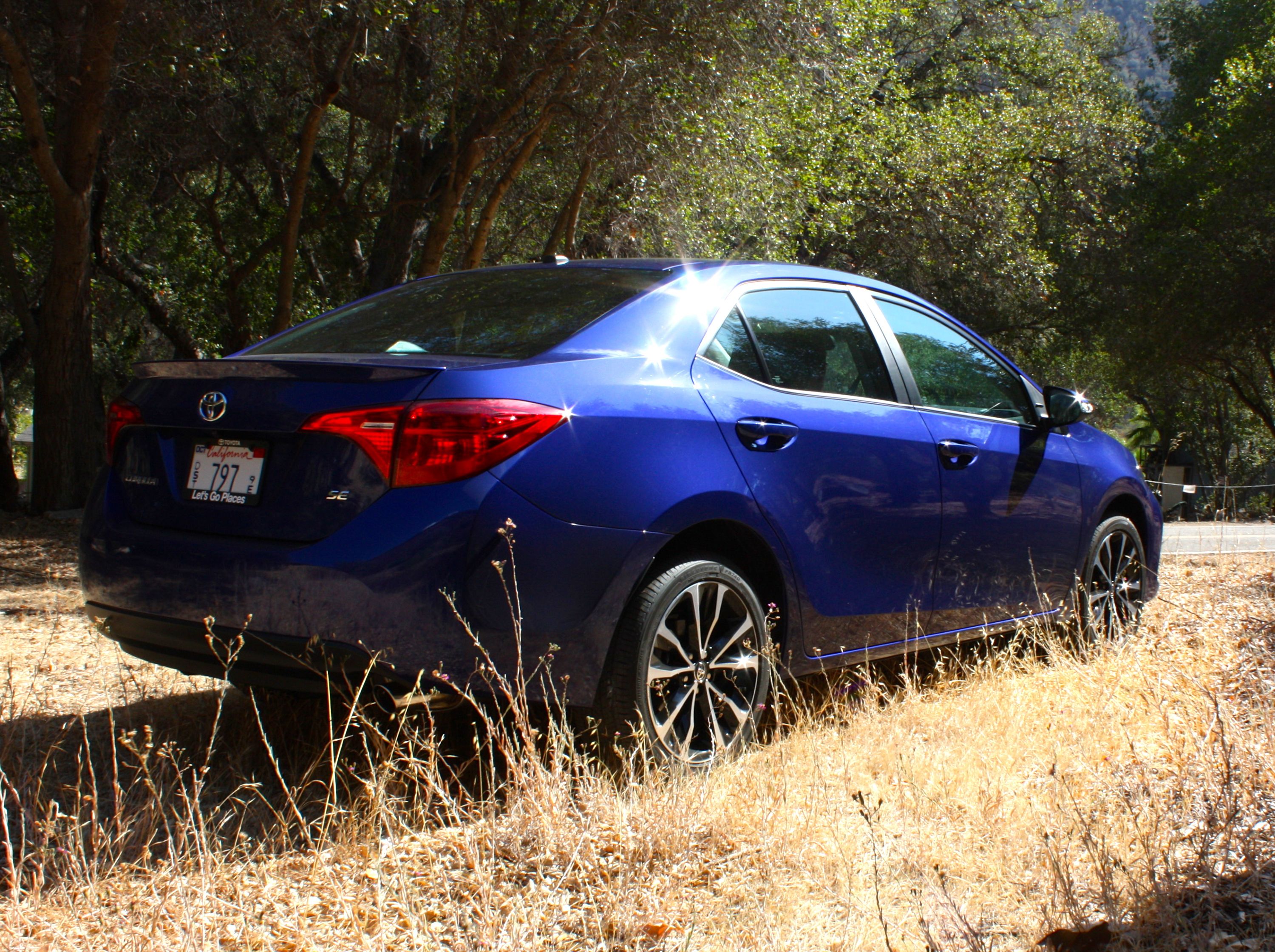
|
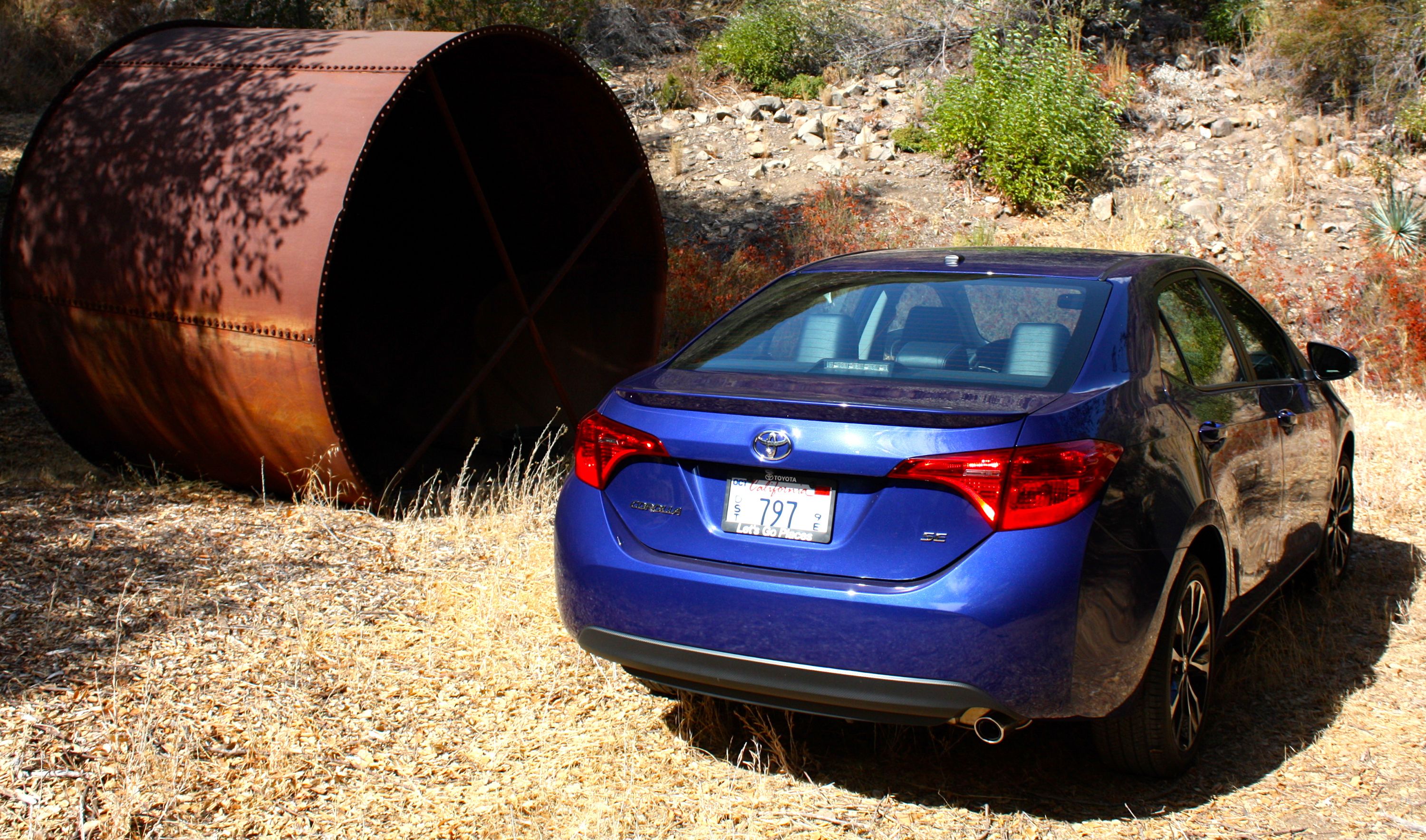
|
Meanwhile, the profile and rear end remain more or less unchanged. The same can be said of the exterior dimensions.
Practically speaking, the Eco trim level offers the most bang for your buck, receiving minor aero tweaks to help shave a few percentage points off the car’s coefficient of drag (down to 0.28, as compared to 0.29 and 0.30 on the other trim levels).
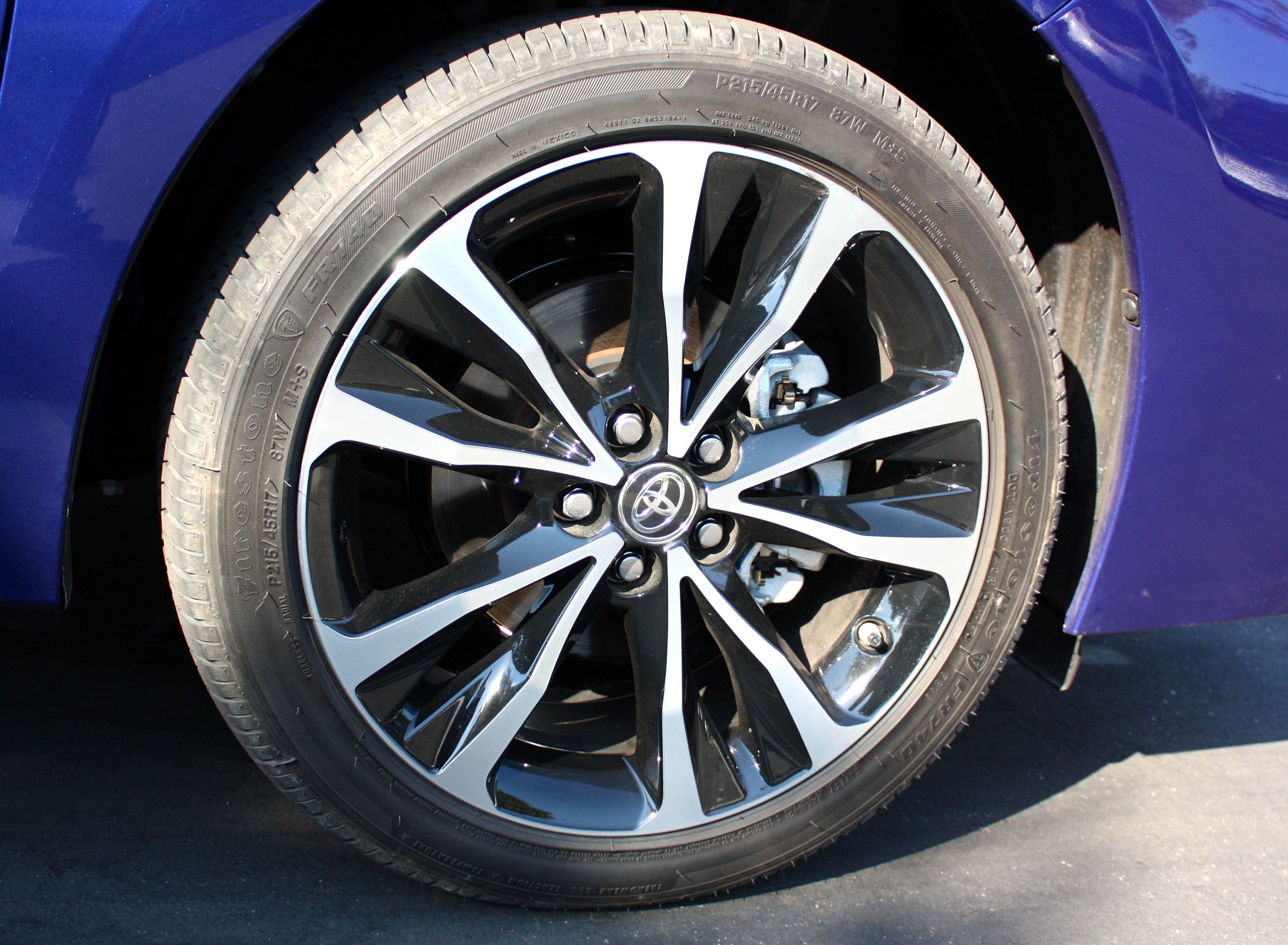
|
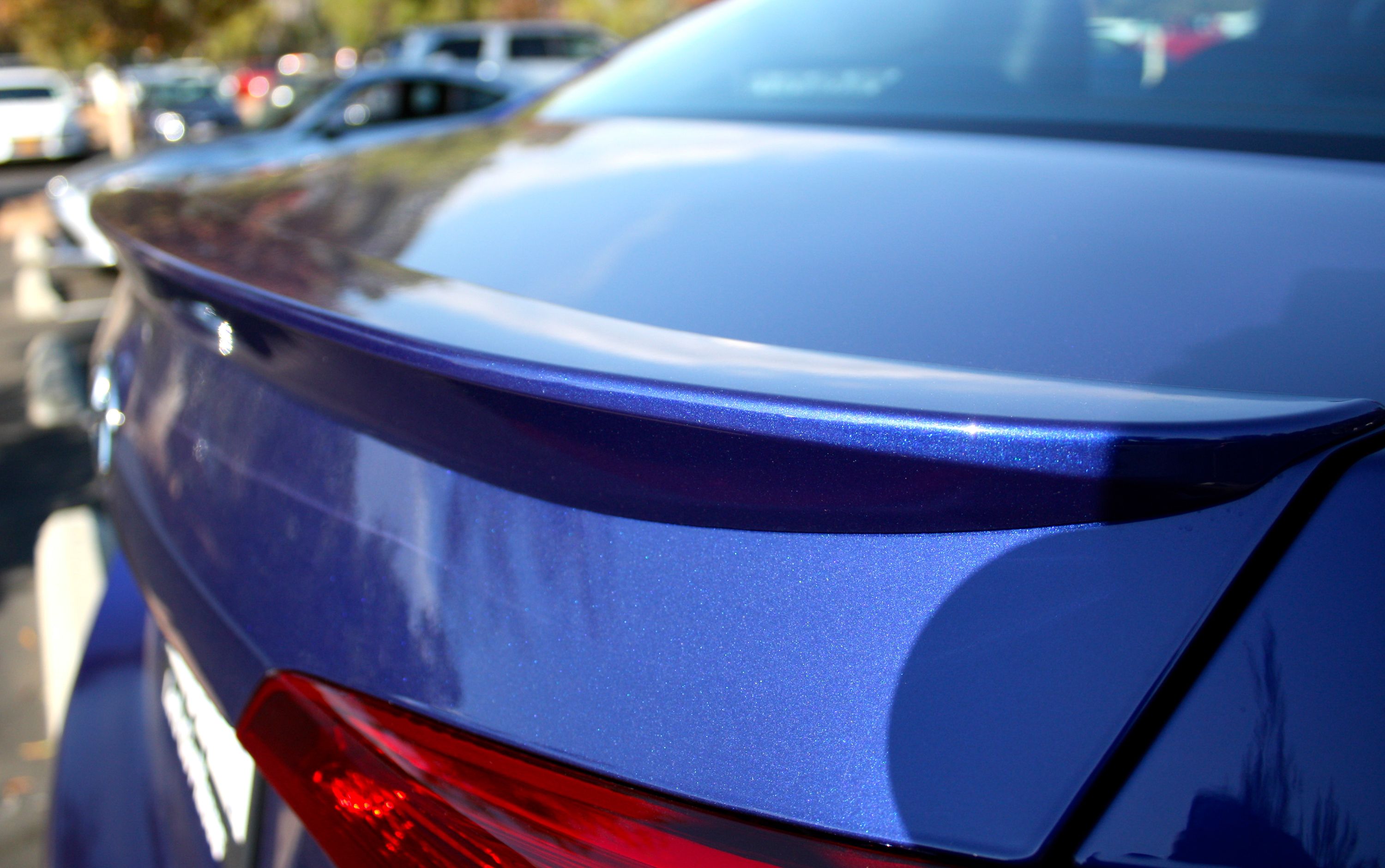
|
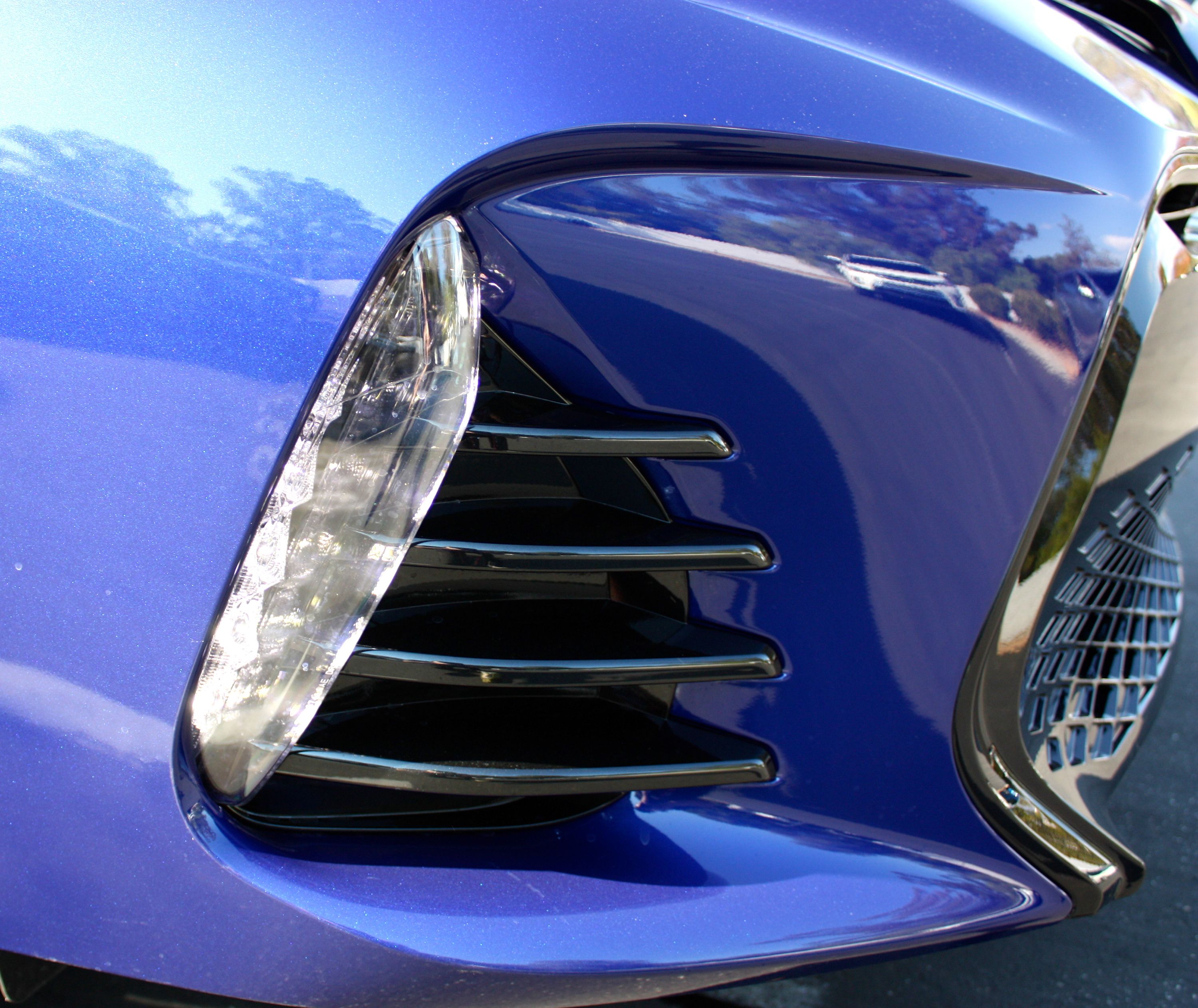
|
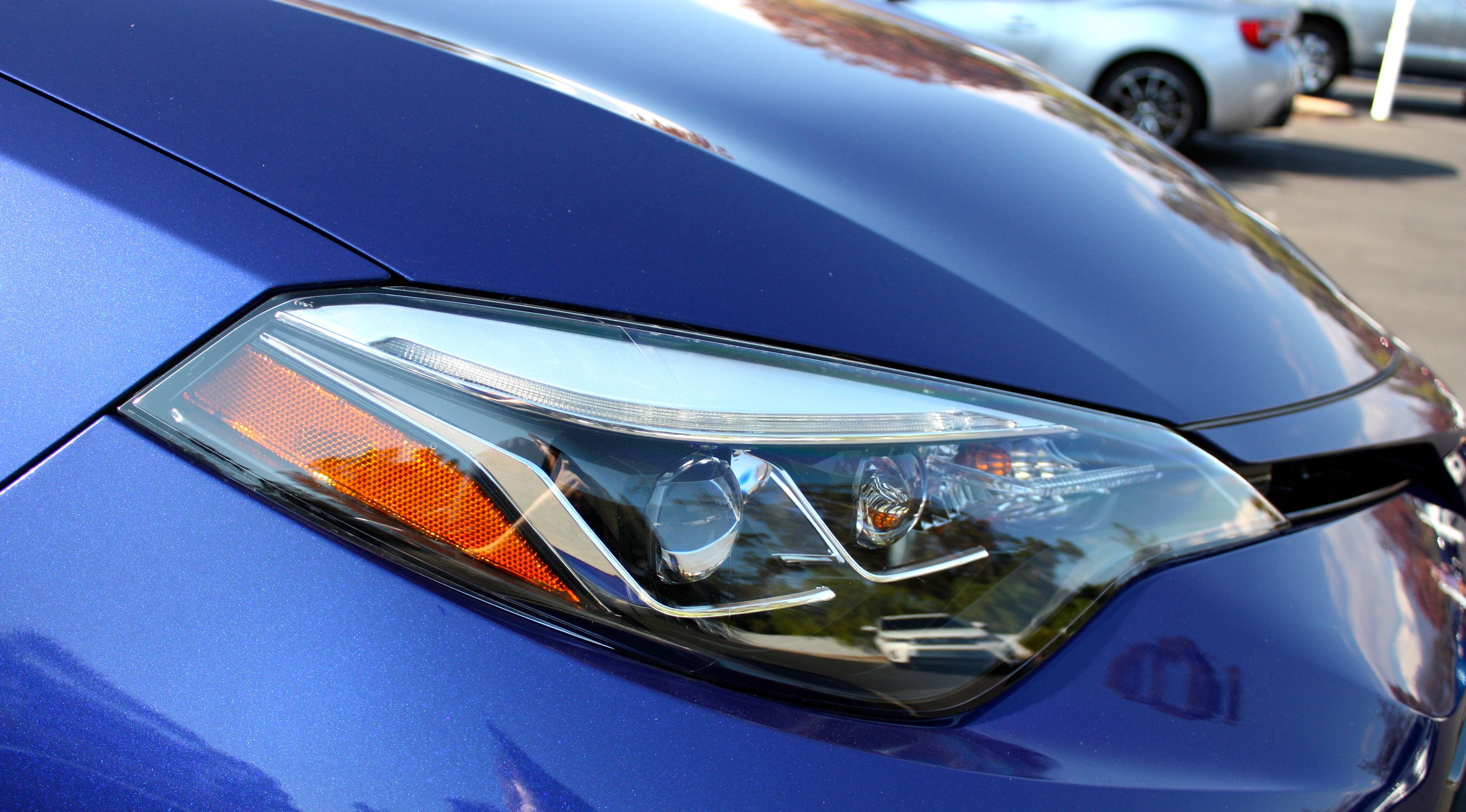
|
Standard gear includes 15-inch wheels on lower trims, while higher trims are offered with both 16-inch, and 17-inch wheels.
Available exterior paint options include Black Sand Pearl, Barcelona Red Metallic, Slate Metallic, Classic Silver Metallic, Blue Crush Metallic, Super White, Blizzard Pearl, Falcon Gray Metallic, and Galactic Aqua Mica.
Exterior Dimensions
|
Wheelbase |
106.3 Inches |
|
Overall Length |
183.1 Inches |
|
Overall Width |
69.9 Inches |
|
Overall Height |
57.3 Inches |
|
Ground Clearance |
6.7 Inches |
Impression
To my eye, the new exterior changes are definitely a move in the right direction. Of course, I write that with some hesitation, especially after seeing the extremes that Toyota’s designers can go to (yeah, I’m looking at you, Prius Prime. I wish I wasn’t, but I am).
That said, I think the new look adds a nice crispness that was lacking in the outgoing model. It’s certainly nothing terribly remarkable or groundbreaking or sexy, but it does make the car more interesting to look at. In particular, I like the points along the lower edge of the front bumper, as they add a little visual length to the car and help to lessen the age-old “box-on-wheels” look that seems virtually inescapable in this segment.
Interior
Inside, you’ll find pretty much the same cabin layout as before, with broad, horizontal surfaces, wide, comfortable seats, and space for three passengers on the rear bench. Updates include a new climate control panel below the central touchscreen, as well as circular air vents (as compared to the outgoing squared units).
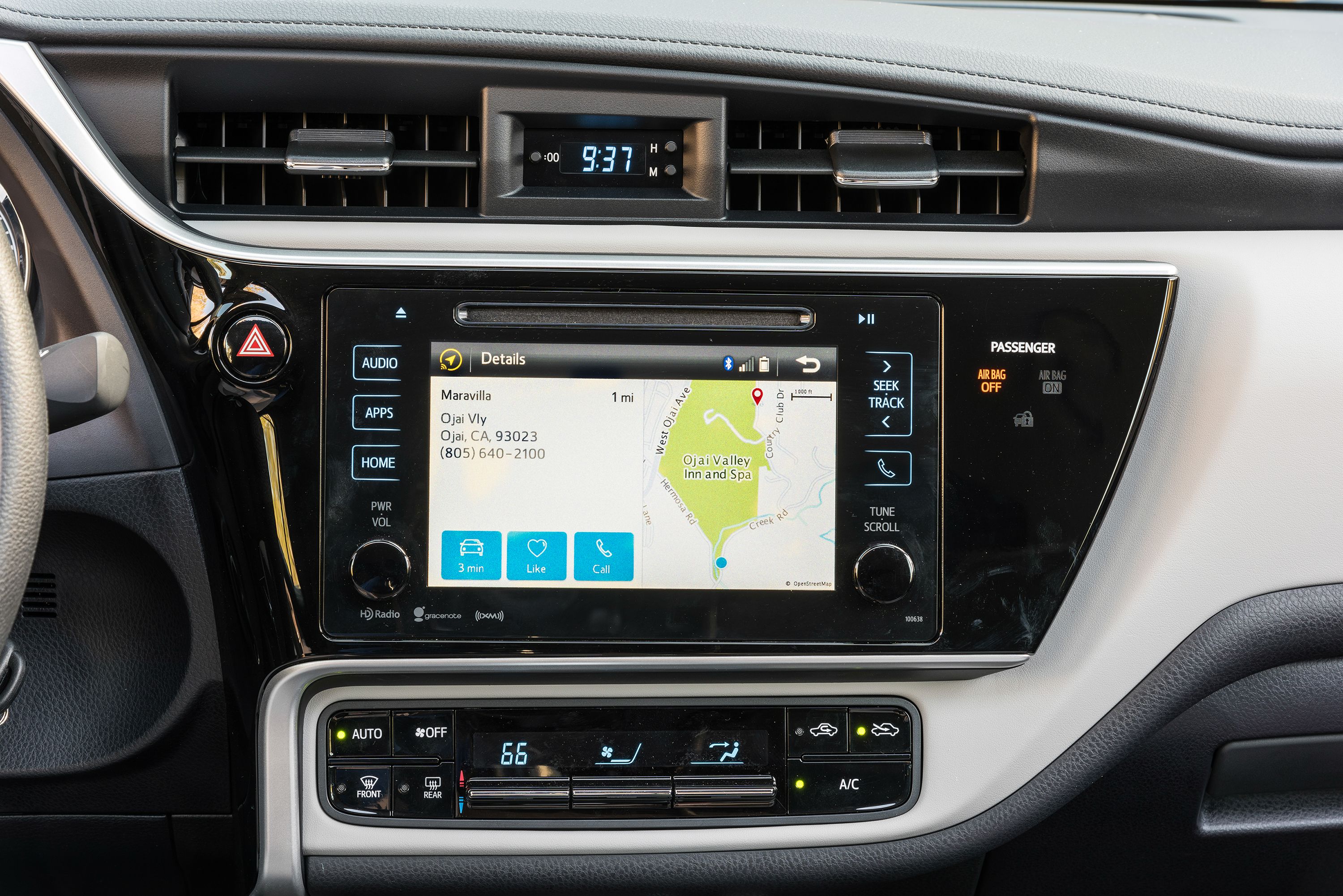
|
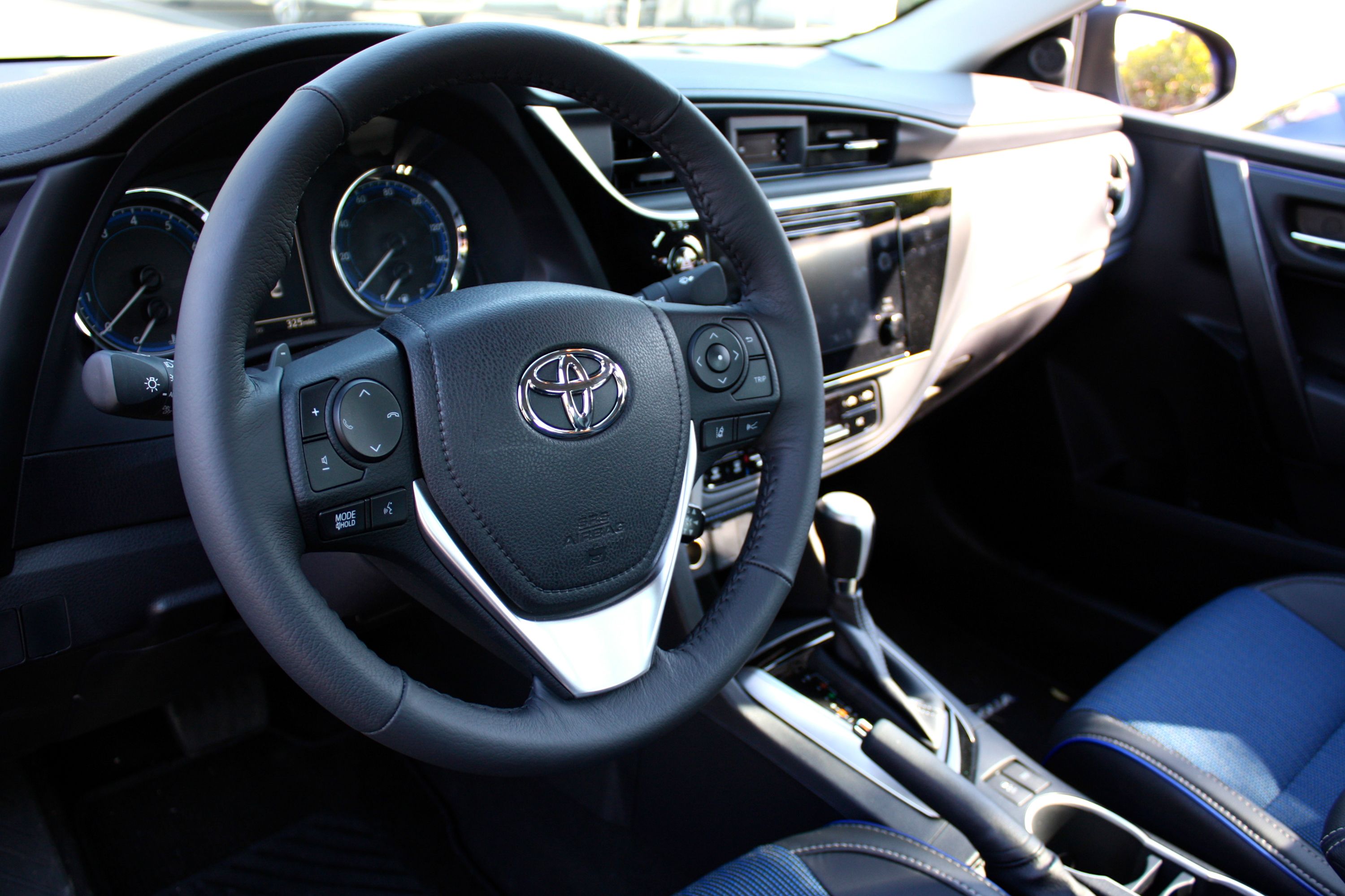
|
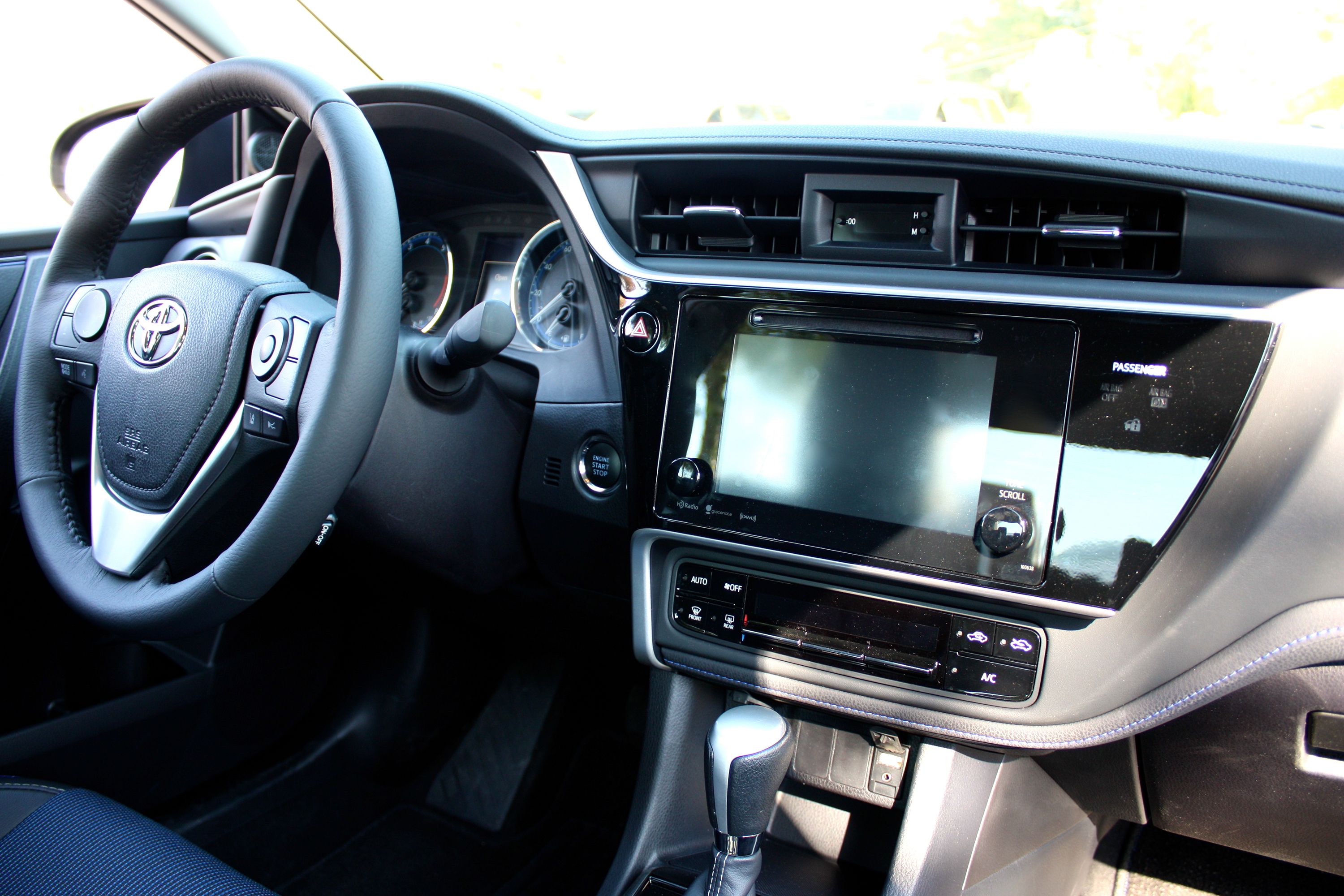
|
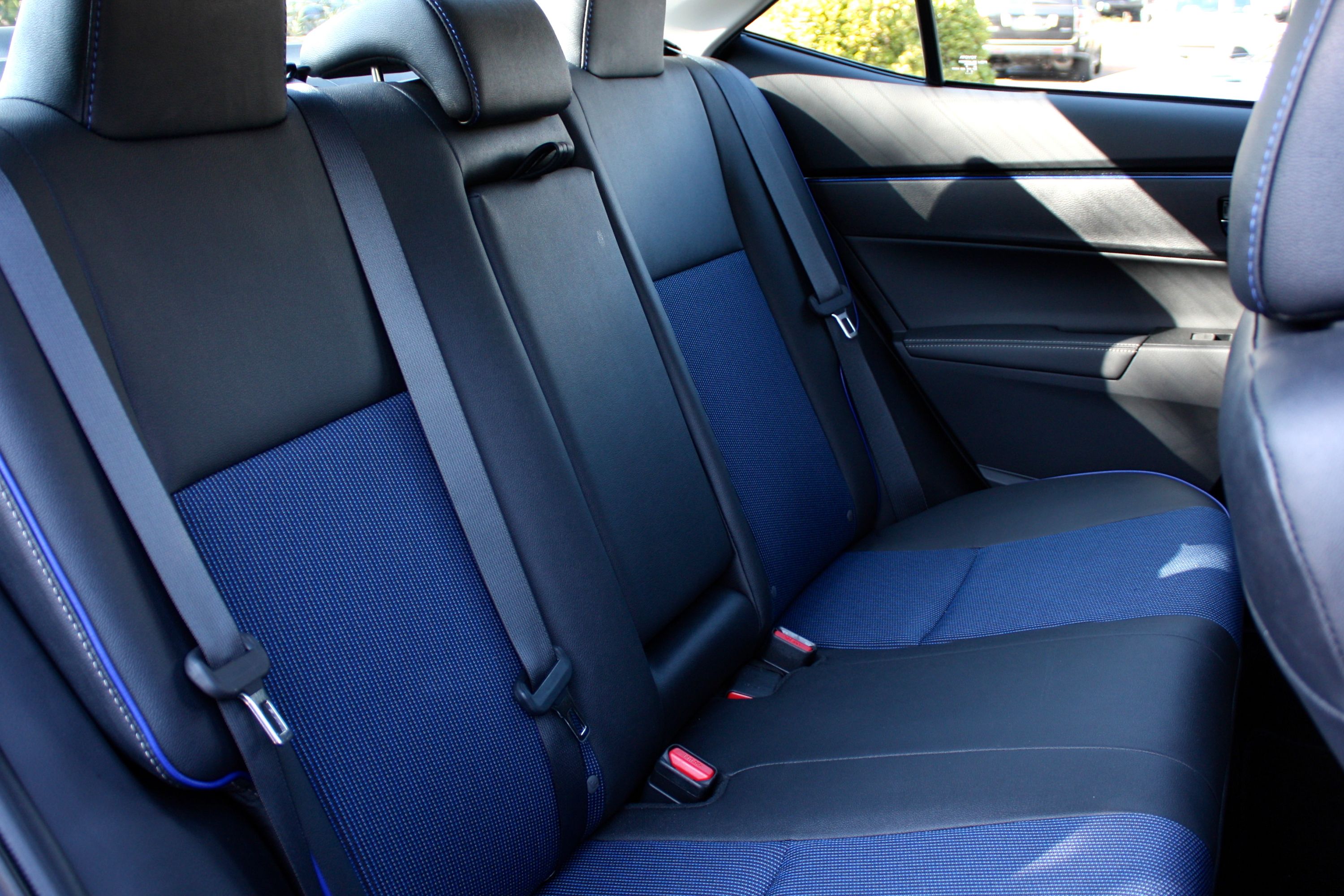
|
The fabric upholstery was upgraded as well. Interior color schemes include Almond, Ash/Dark Gray, and Black/Brown, while certain trim levels get mildly bolstered, leatherette-trimmed sports seats with Vivid Blue, Orange Zest, and Black premium inserts.
One of the most important aspects of a commuter is the infotainment system, and thankfully, the 2017 Corolla gets all the latest bells and whistles you’d expect. Standard equipment includes Bluetooth connectivity for hands-free calling, phone book access, and audio steaming, as well as a six-speaker Entune audio system. In the gauge cluster, you’ll find a 3.5-inch multi-information display mounted between a tachometer on the left and speedometer on the right. USB and iPod connectivity are also included, as is a 6.1-inch touchscreen mounted centrally in the dash.
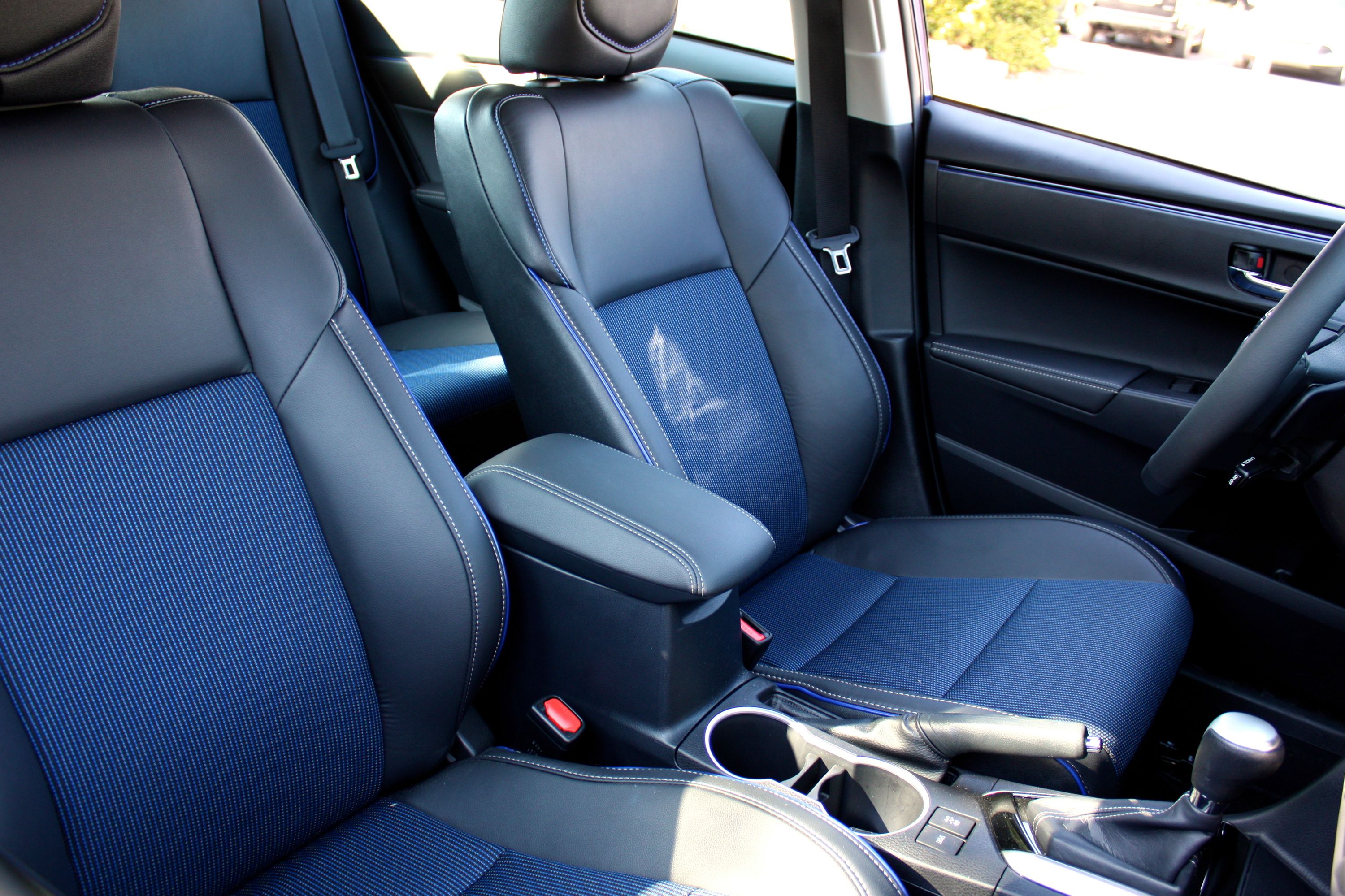
|
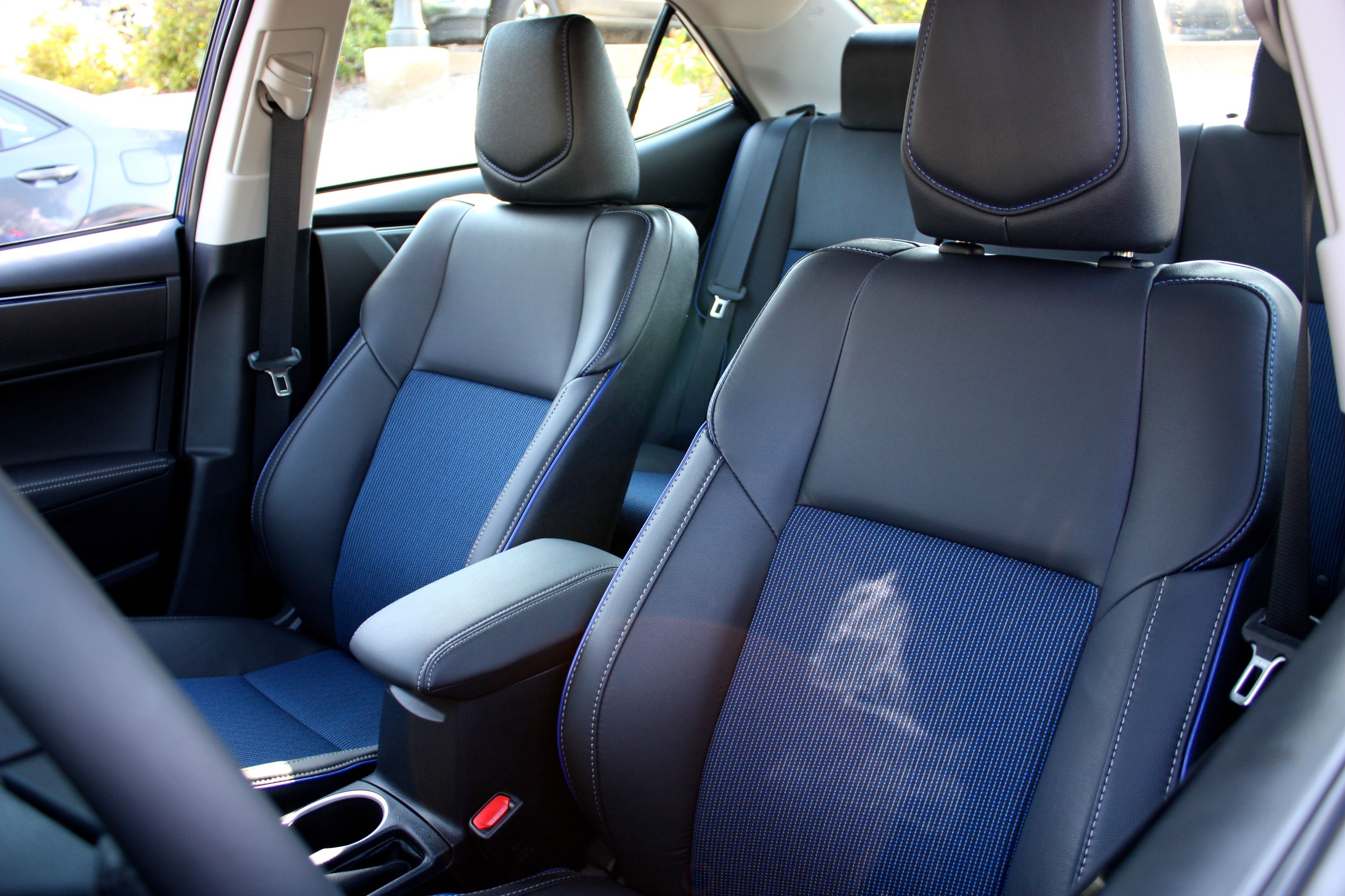
|

|
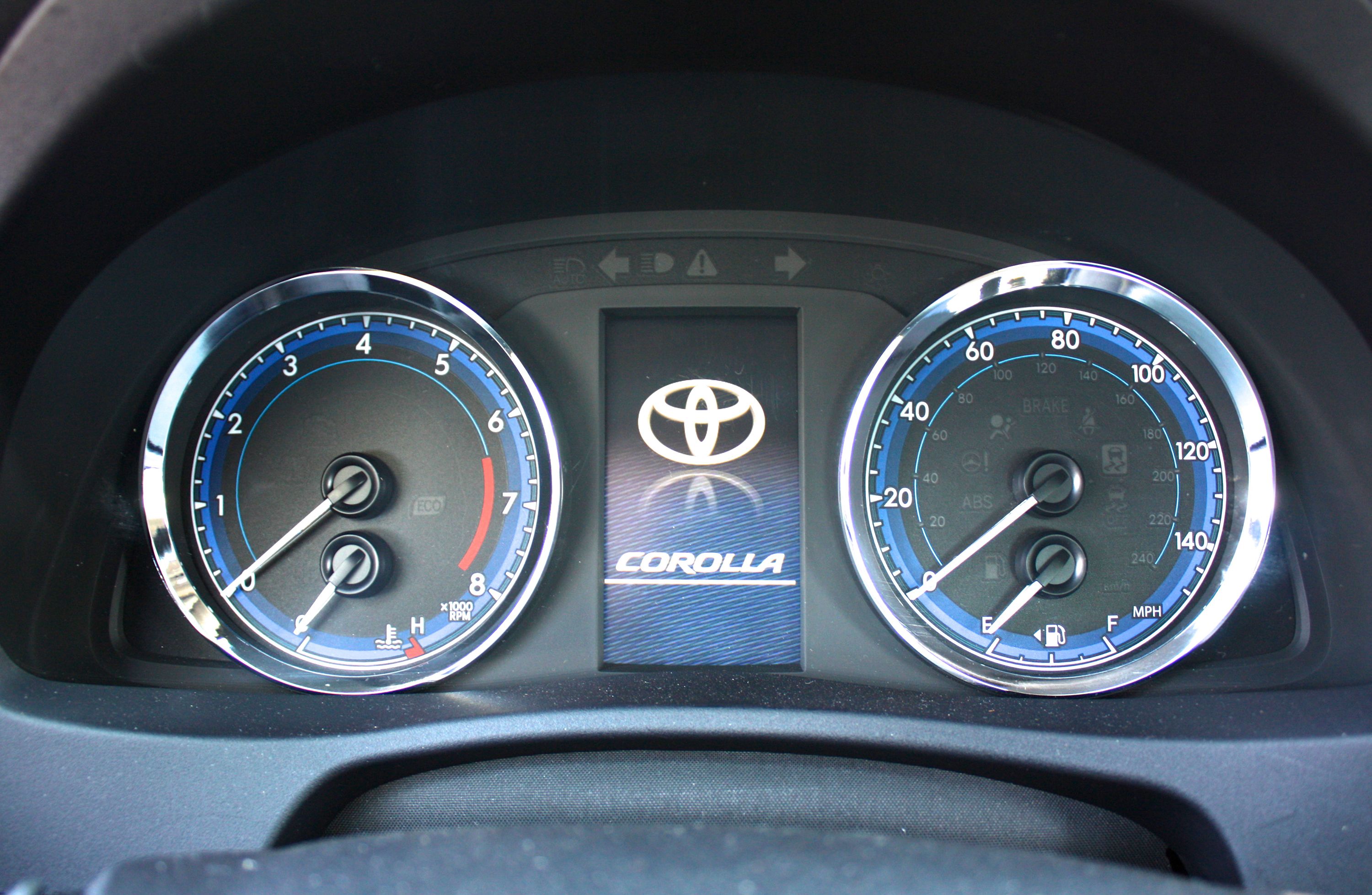
|
Of course, all that’s pretty much par for the course these days, and further upgrades can be had both as standalone options or standard equipment on higher trim levels. Standouts include an Entune Audio Plus system with Connected Navigation (includes the Scout GPS Link app), and the Entune Premium Audio system with Integrated Navigation and an app suite. You can also ditch the 6.1-inch touchscreen in favor of a 7.0-incher.
Dimensionally, the 2017 Corolla’s cabin is identical to the outgoing model. Enhancing the rear cargo area’s usability is a 60/40 split for the rear bench.
Interior Dimensions
|
Seating Capacity |
5 |
|
Headroom (Front/Rear, w/o moonroof) |
38.3/37.1 Inches |
|
Legroom (Front/Rear) |
42.3/41.4 Inches |
|
Shoulder Room (Front/Rear) |
54.8/54.8 Inches |
|
Hip Room (Front/Rear) |
53.0/43.9 Inches |
|
EPA Passenger Volume (w/o moonroof) |
97.5 Cubic Feet |
|
EPA Cargo Volume |
13.0 Cubic Feet |
Impression
Like the car’s exterior, the Corolla’s interior isn’t particularly exciting. It gets the job done, though, and if you step up to the higher grades, the materials are pretty nice. Still, no amount of leatherette can hide the fact this thing was designed as a workhorse.
But like I said, it gets the job done. The ride is quiet and well insulated thanks to stuff like acoustic glass for the windshield, added floor insulation, fender insulators, and an inner dash silencer pad. The gauges use a black backing, white numbers, and white needles, and are easy to read.
Space is abundant, particularly in the rear, and at no point did I have any problems with ingress or egress. The infotainment controls were easy to understand and operate, and the various screens were sharp and clear. The sound system was also quite good, helped along by the hushed road and wind noise.
Drivetrain
Providing the power is a 1.8-liter four-cylinder engine with double overhead cams, four valves per cylinder, and all-aluminum construction. Output is rated at 132 horsepower at 6,000 rpm, and 128 pound-feet of torque at 4,400 rpm.
If those figures look familiar, it’s because the 2017 model gets the same engine as the outgoing model. As such, a run to 60 mph still takes a leisurely 10.5 seconds, while top speed is around 110 mph.
Routing the power to the front axle is a six-speed manual on lower trims, and a continuously variable transmission (CVT) on higher trims. The CVT comes equipped with technology that helps to max out MPG, and it gets a stepped shift pattern that is intended to mimic the feel of a conventional gearbox.
Okay, so you’d be kidding yourself if you got a Corolla in the hopes of an exciting experience behind the wheel. How about efficiency?
Luckily, the Corolla performs quite well in that department, offering 28 mpg in the city, 36 mpg on the highway, and 32 mpg combined when running a CVT and 16-inch wheels. Go for the six-speed manual or 17-inch wheels, and you lose a few mpg here and there, but not a lot.
If max mileage is a major concern, you can get the Corolla in the LE Eco trim, which bumps highway returns to 40 mpg when equipped with 15-inch wheels. The extra miles come courtesy of revised variable valve timing system called Valvematic, which apparently has broader variability. Interestingly enough, the engine also gets a minor power boost – up to 140 horsepower at 6,100 rpm, although torque is down to 126 pound-feet at 4,000 rpm. The Eco also gets a slightly lower coefficient of drag (down to 0.28).
But mpg estimates don’t always correspond to actual figures in the real world, so Toyota decided to reprogram the Eco’s ECU to cut back on overly enthusiastic inputs (Toyota calls it “choppy driving habits”), which basically means smoother throttle application when setting off from a standstill. Dip past the 50-percent mark on the go-pedal, and you get full power.
MPG Estimates
|
Six-speed Manual Transmission |
27 city, 35 highway, 30 combined |
|
CVTi-S (16-inch wheels) |
28 city, 36 highway, 32 combined |
|
CVTi-S (17-inch wheels ) |
28 city, 35 highway, 31 combined |
|
CVTi-S (Eco trim level, 15-inch wheels) |
30 city, 40 highway, 34 combined |
|
CVTi-S (Eco trim level, 16-inch wheels) |
29 city, 38 highway, 33 combined |
Impression
When it comes to the powerplant, the Corolla gets the job done without much fanfare. It’s got the output needed to get you where you need to go, but it’s not going to spark any fantasies of taking the grid at the next U.S. Grand Prix.
Basically, it’s slow. Press your foot flat to the floor, and you have more than enough time to think, “huh, so this is full throttle. Well how about that. What’s for lunch?”
I didn’t get a chance to try the six-speed manual, but the CVT was an equally yawn-worthy dance partner. The stepped shift patters did help it all feel a little closer to a traditional gearbox, but really, what’s the point? All you’re doing is getting there, so I don’t really understand the point of making the transmission feel like you’re cracking through the gears. I suppose it gives the car a more traditional feel, which is a good thing if you’re trying a CVT for the first time, but beyond that, it’s all rather unremarkable.
Chassis And Handling
Under the skin, the Corolla uses a uni-body construction with copious high-tensile strength steel. Pointing it in the right direction is a power-assisted electric steering system, with 3.81 turns lock to lock. The suspension uses MacPherson struts up front and a torsion beam in the rear.
Providing the stops are ventilated disc brakes in front (10.8-inch diameter), and drums in the rear (higher trim levels get four-wheel discs).
Wheel sizing goes from 15 inches up to 17 inches, with a variety of steel and alloy options on the table. The tires are all-season belted radials, while the Eco gets low-rolling resistance rubber and aerodynamic alloy wheels.
Impression
Like the engine and drivetrain, the Corolla’s chassis and handling aren’t anything special, at least as far as dynamics are concerned. Lean on it a bit, and the car immediately starts to struggle, rejecting higher G forces like a little kid rejecting his vegetables.
One of the biggest issues is the rear torsion beam. Now, I know the 86 is Toyota’s sporty model, but that doesn’t mean the Corolla has to be a complete bore, does it? I would have thought the car’s 50th anniversary would be a great time to upgrade to something a little more modern, but I guess I understand Toyota’s reluctance. After all, the torsion beam is long lasting, compact, relatively lightweight, and more importantly, inexpensive to produce, and upgrading would hurt the Corolla in all the areas it shines (reliability, mpg, cost to buy, etc.).
But it’s not all bad. This thing is still fairly comfortable to drive, and it manages to get you there without ruffling too many feathers.
Just stick to the right lane, please.
Safety And Convenience
Here’s the big news – the safety gear. For the 2017 model year, the Corolla receives Toyota Safety Sense-P (TSS-P) as standard across all trim levels. This package combines a variety of different features, including the Pre-Collision System with Pedestrian Detection, Lane Departure Alert with Steering Assist, Dynamic Radar Cruise Control, and Automatic High Beams.
The tech update is part of larger push to make TSS-P standard across the Toyota model lineup by the end of 2017.
I got a chance to test these systems last year in the 2016 Prius, and I’m happy to report that they work as advertised. During my test, I put the car on a collision course with a wooden cutout that represented the back end of a stopped car, as well as a mannequin on roller skates that represented a crossing pedestrian, and the systems worked without fault every time.
You can find more information in my review of the 2016 Prius here. Just scroll down to the Safety And Convenience section.
Also included as standard in the 2017 Corolla is the Toyota Safety Star System, which throws in all the usual safety goodies, such as vehicle stability control, traction control, anti-lock braking, electronic brake-force distribution, and brake assist. A backup camera with guidelines is also standard.
Finally, there’s an actual temporary spare wheel in back, rather than a patch kit.
Prices
Given the huge quantity of Corollas that Toyota expects to sell, it should comes as no surprise that there are no less than seven different trim levels to choose from. The standard features of each trim level can be found below. Successive trim level features are either in addition to, or in place of, the preceding trim level features.
L
Includes Bi-LED headlights, LED daytime running lights integrated into headlights, 15-inch steel wheels, integrated backup camera, fabric-trimmed seats, six-way adjustable driver’s seat, four-way adjustable passenger seat, 60/40 split rear bench, cruise control, multi-function steering wheel, LCD screen in the gauge cluster, 12-volt power outlet, USB 2.0 port, Entune Audio (6.1-inch touchscreen, AM/FM/CD player, six-speaker sound, auxiliary audio input, voice recognition, hands-free calling, Bluetooth connectivity), and Siri Eyes Free.
Pricing starts at $18,500.
LE
Includes heated side-view mirrors, 16-inch steel wheels, automatic climate control, 3.5-inch TFT monochromatic multi-information display in the gauge cluster, metallic interior trim, keyless entry, and remote illuminated entry.
Pricing starts at $18,935.
LE Eco
Includes a rear spoiler, 15-inch steel wheels, upgraded Valvematic timing system, and low-rolling resistance tires.
Pricing starts at $19,335
XLE
Includes multi-LED headlights with LED accents, LED daytime running lights integrated in the bumper, rear combination taillights with LED backup lights, power tilt/slide moonroof, 16-inch alloy wheels, SofTex-trimmed eight-way power-adjustable driver’s seat, heated front seats, premium instrumentation with 4.2-inch color multi-information screen, push button start, Entune Audio Plus with Connected Navigation (7.0-inch touch screen display), Connected Navigation Scout GPS Link App, and SiriusXM All Access Radio with 3-month free trial.
Pricing starts at $21,825.
SE
Includes premium fabric-trimmed manually adjustable driver’s and passenger seats with SofTex-trimmed sport bolsters, sport driving mode (manual transmission exclusive), and a leather-trimmed multi-function steering wheel.
Pricing starts at $20,445.
XSE
Includes SofTex-trimmed eight-way power-adjustable driver’s seat.
Pricing starts at $22,680.
50th Anniversary Special Edition
Includes unique exterior paint option (Black Cherry Pearl), black mixed media seats (Black Cherry piping and contrast stitching on the seats, steering wheel, and shift boot), Black Cherry on the dash and door trim, 50th Anniversary Edition floor mats and exterior badges, slide-and-tilt moonroof, Smart Key, Entune Audio Plus with navigation, standard 7.0-inch screen, 4.2-inch TFT Multi-Information Display in the gauge cluster, and push-button ignition. Only 8,000 units will be produced.
Pricing starts at $21,900.
Competition
Honda Civic
While not quite as old as the Corolla, the Civic nameplate is still a quintessential part of compact car history. First produced in 1972, the Civic is now in its tenth generation, offering a more powerful engine and even a few extra mpg when compared to the Corolla. However, if you’re looking to equip the same tech and features, expect to pay a good amount more.
Read the full review here.
Mazda 3
If automatic braking systems and mpg aren’t really your bag, the 3 should provide the thrills you’re looking for. Up to 184 horsepower is on offer, as is nippy FWD handling a whole lot of zoom-zoom. The fun comes with a price though, as the Mazda gets a harsher ride and less standard equipment when compared to the Corolla.
Read the full review here.
Conclusion
Toyota is aiming to sell roughly 1.5 million Corollas around the world every year. That is a lot of cars, and as such, Toyota has to make this thing appeal to as broad an audience as possible. That means no big changes, but rather simple, logical, incremental improvements across the board.
In that respect, this Toyota excels. When it comes to basic A-to-B transportation, you could do a lot worse than the Corolla – it’s well equipped, well priced, highly efficient, and comfortable to drive. Throw in the standard TSS-P technology suite, and its extremely safe as well. It’s just not all that exciting in any way, shape, or form.
So then, who is this car made for? If you’re looking to put an older daily driven commuter to bed and want something brand new with lots of the latest features for not a lot of money, then the 2017 Corolla fits the bill.
My suggestion? Figure out your must-have features, go for the grade that offers them, and take a test drive. Just make sure you test out a few models from the competition as well, as you might find something with a little more personality that you like a whole lot more.

